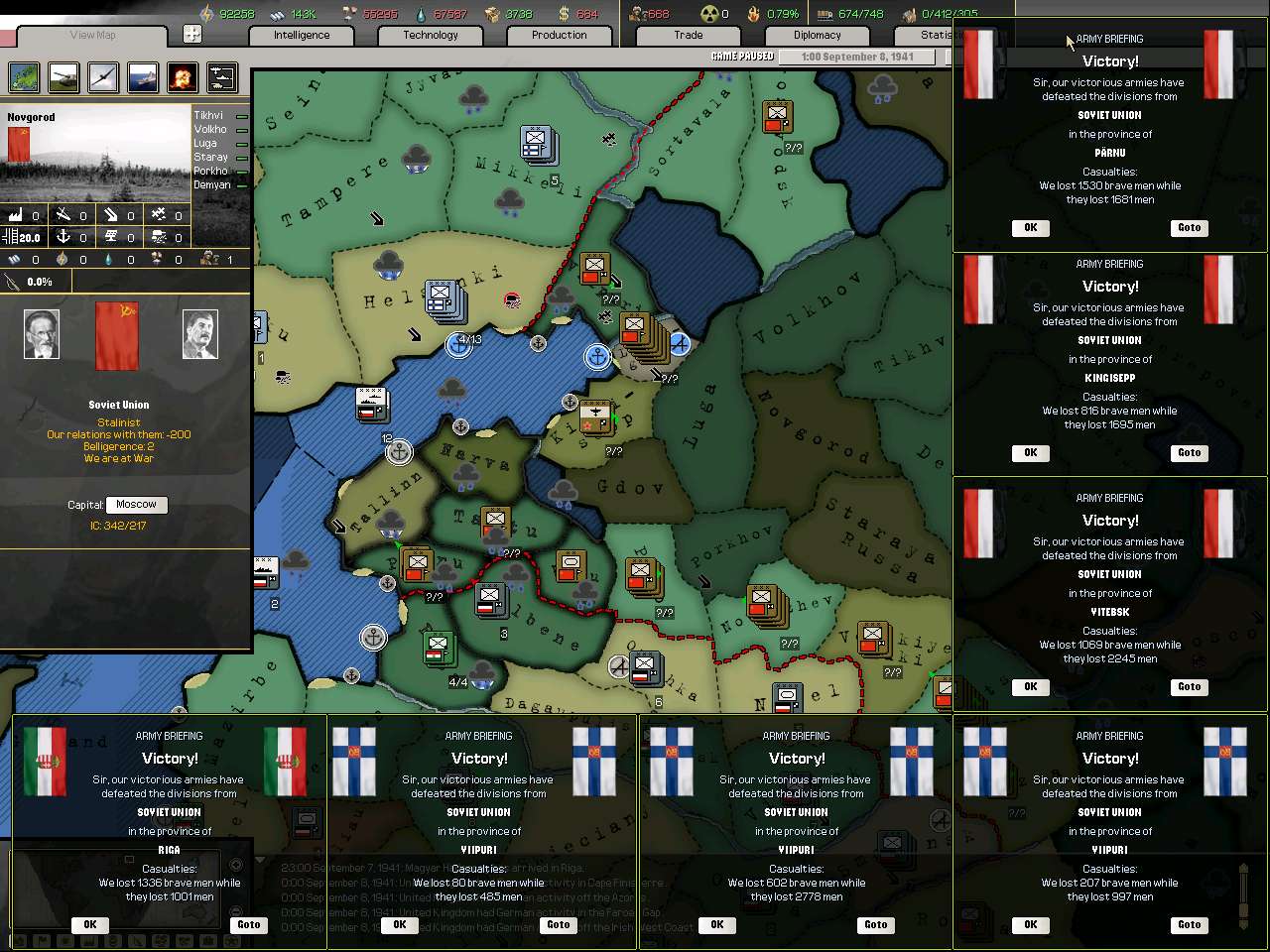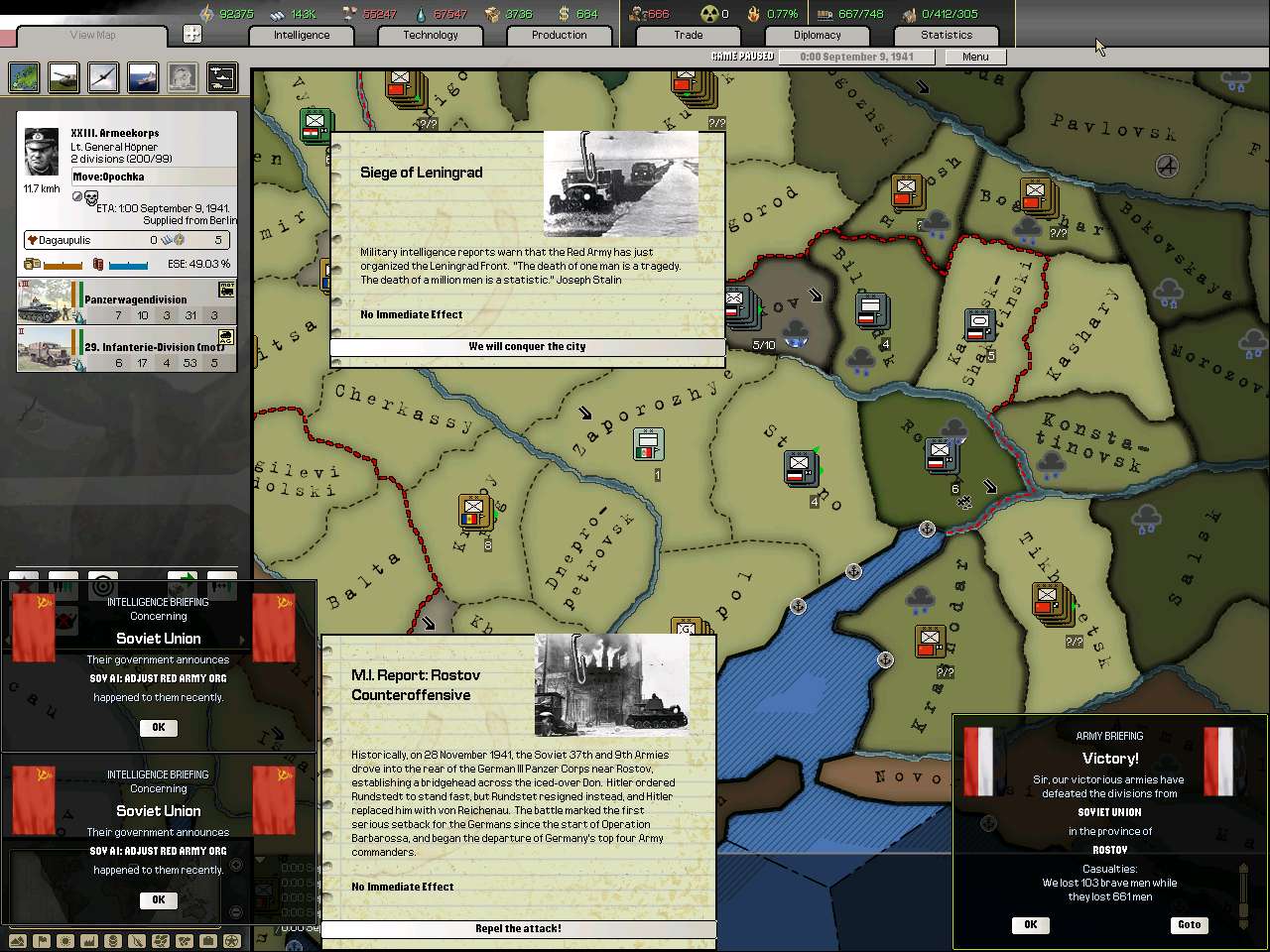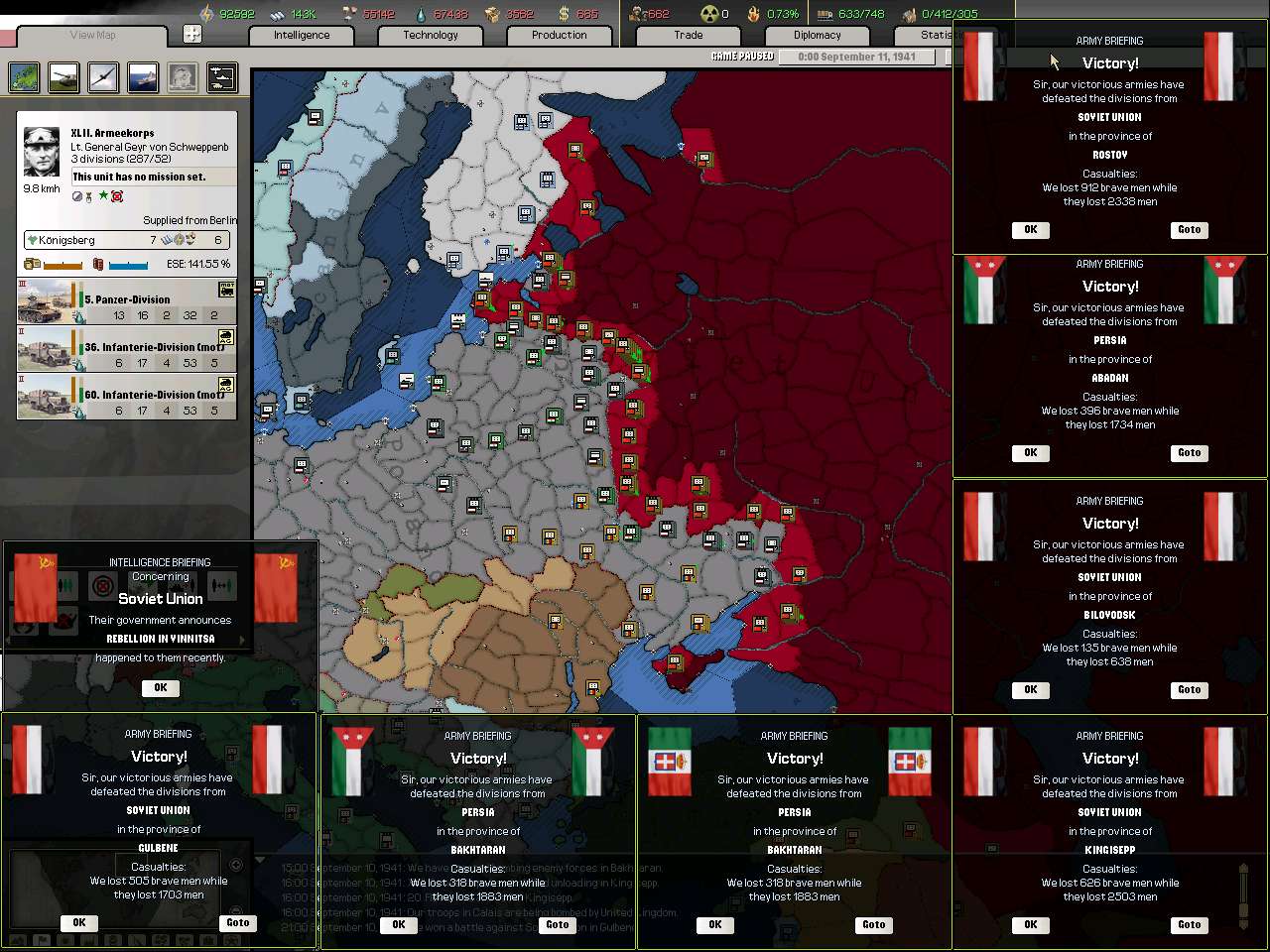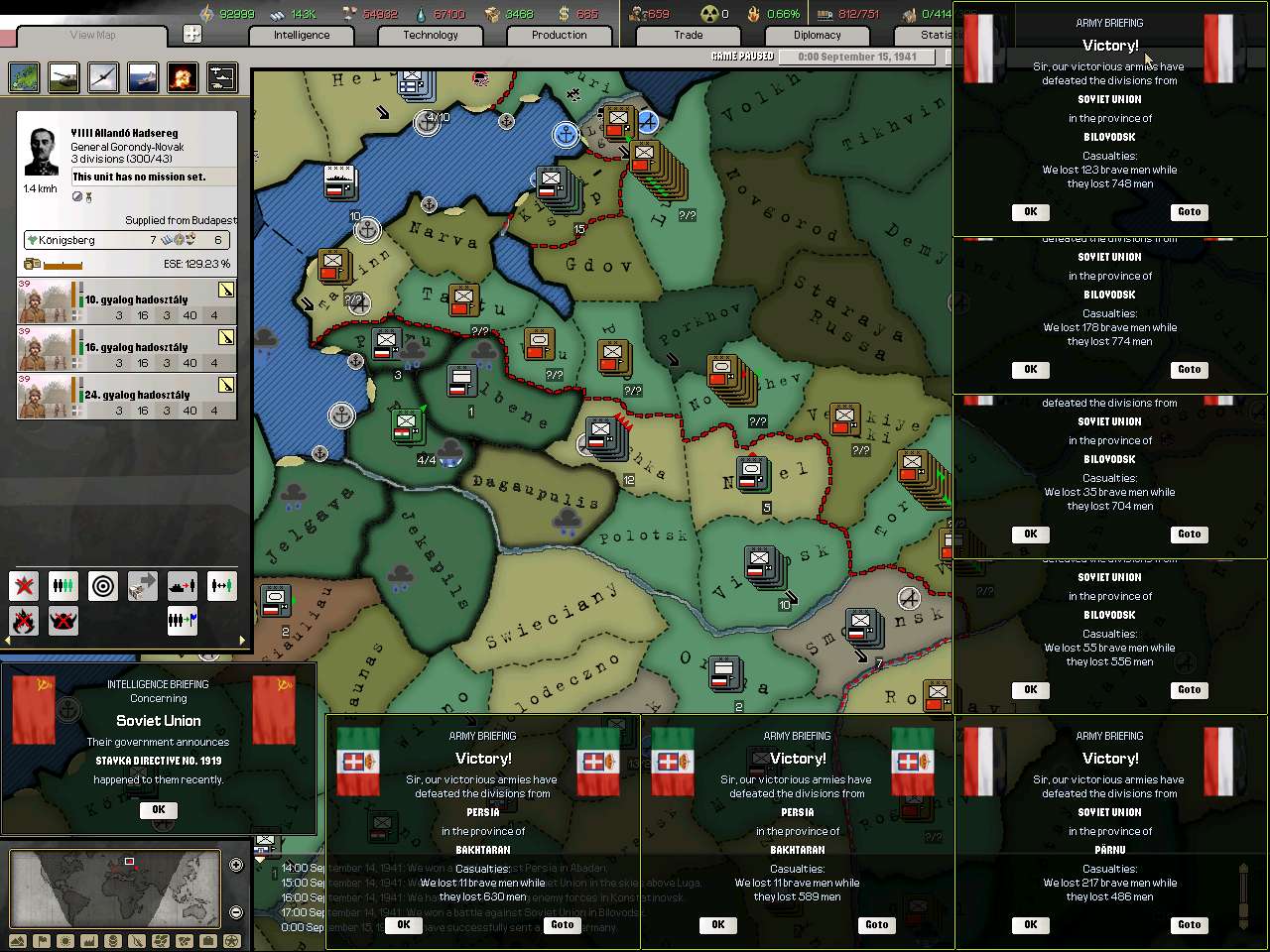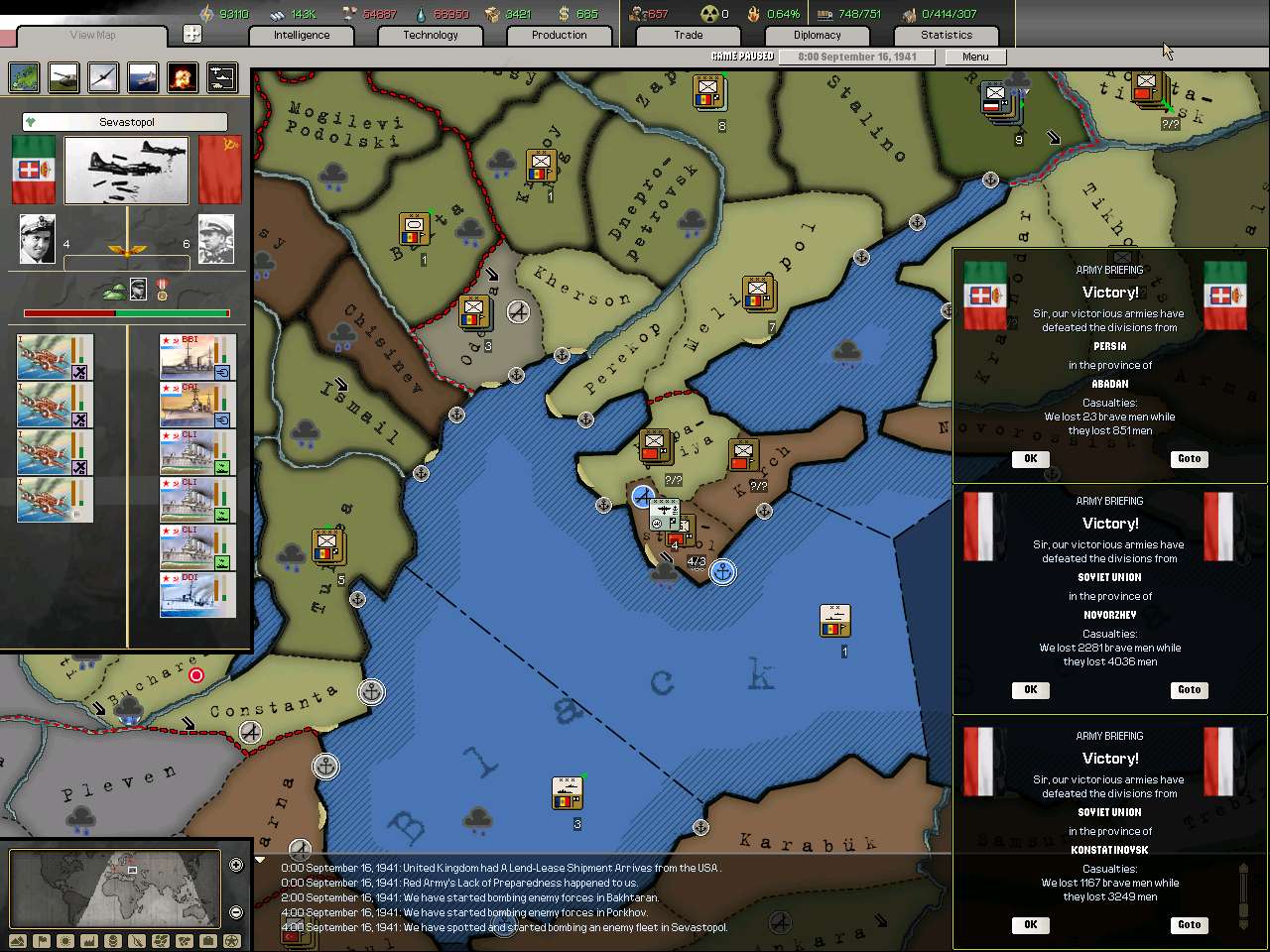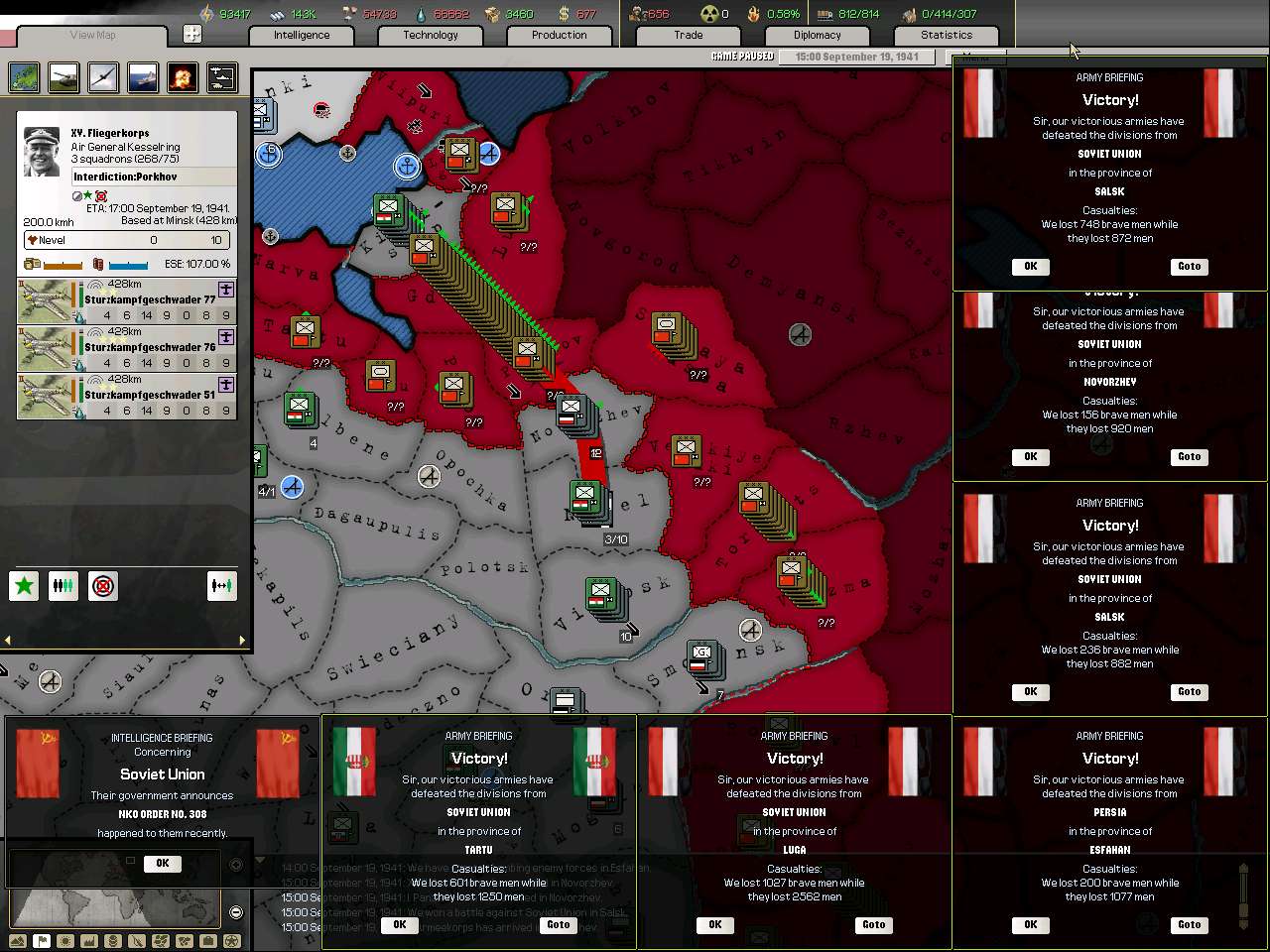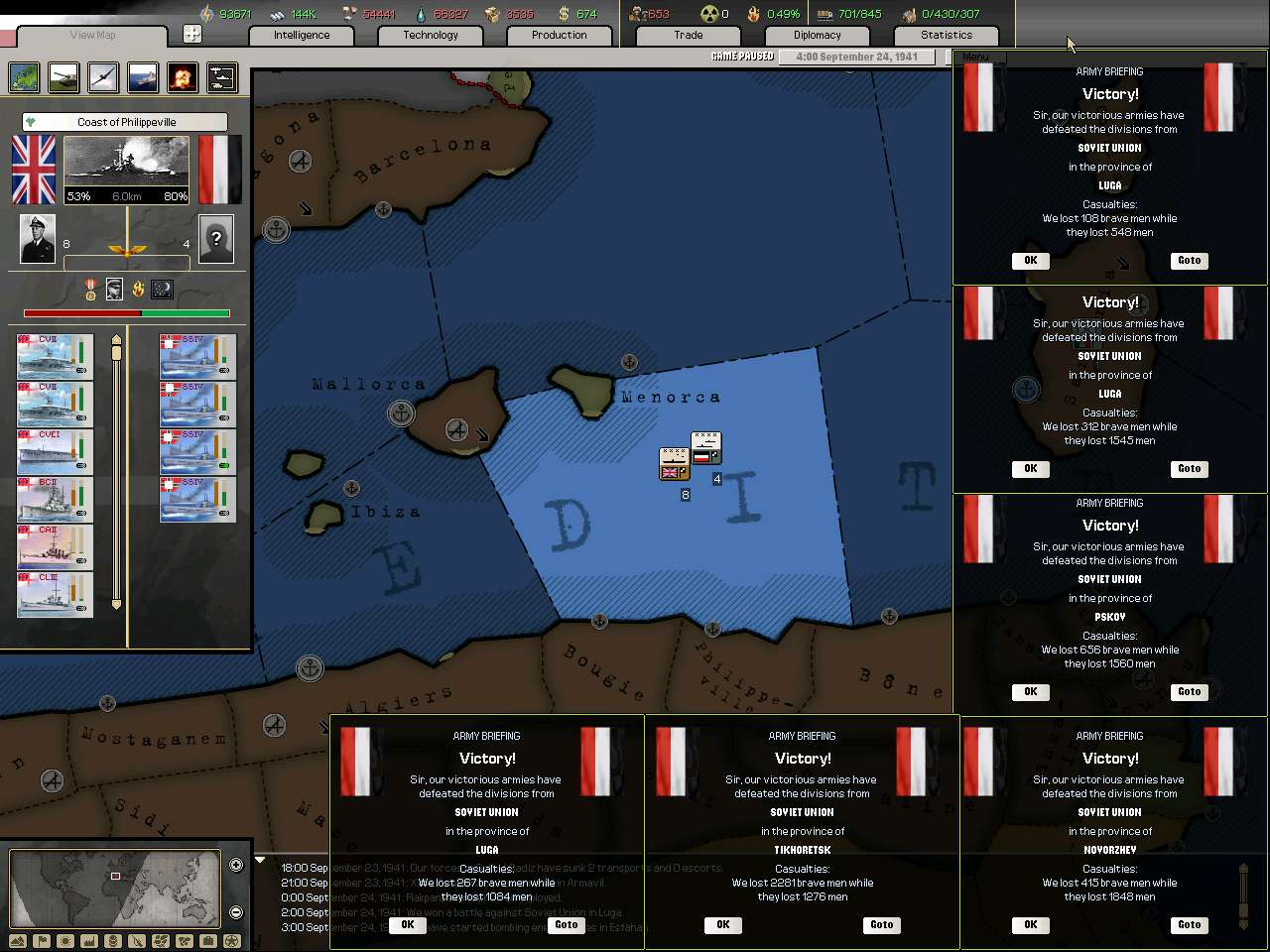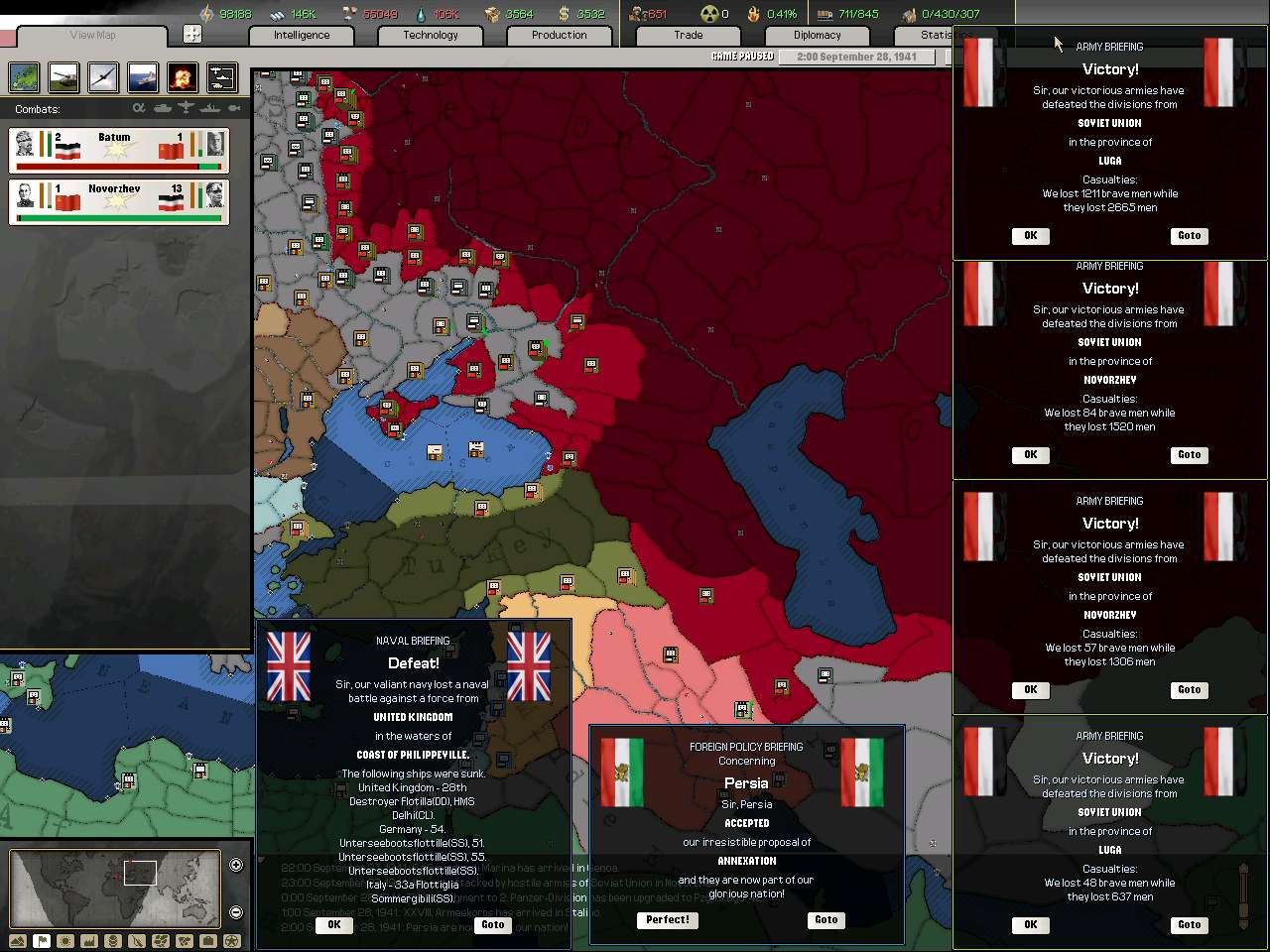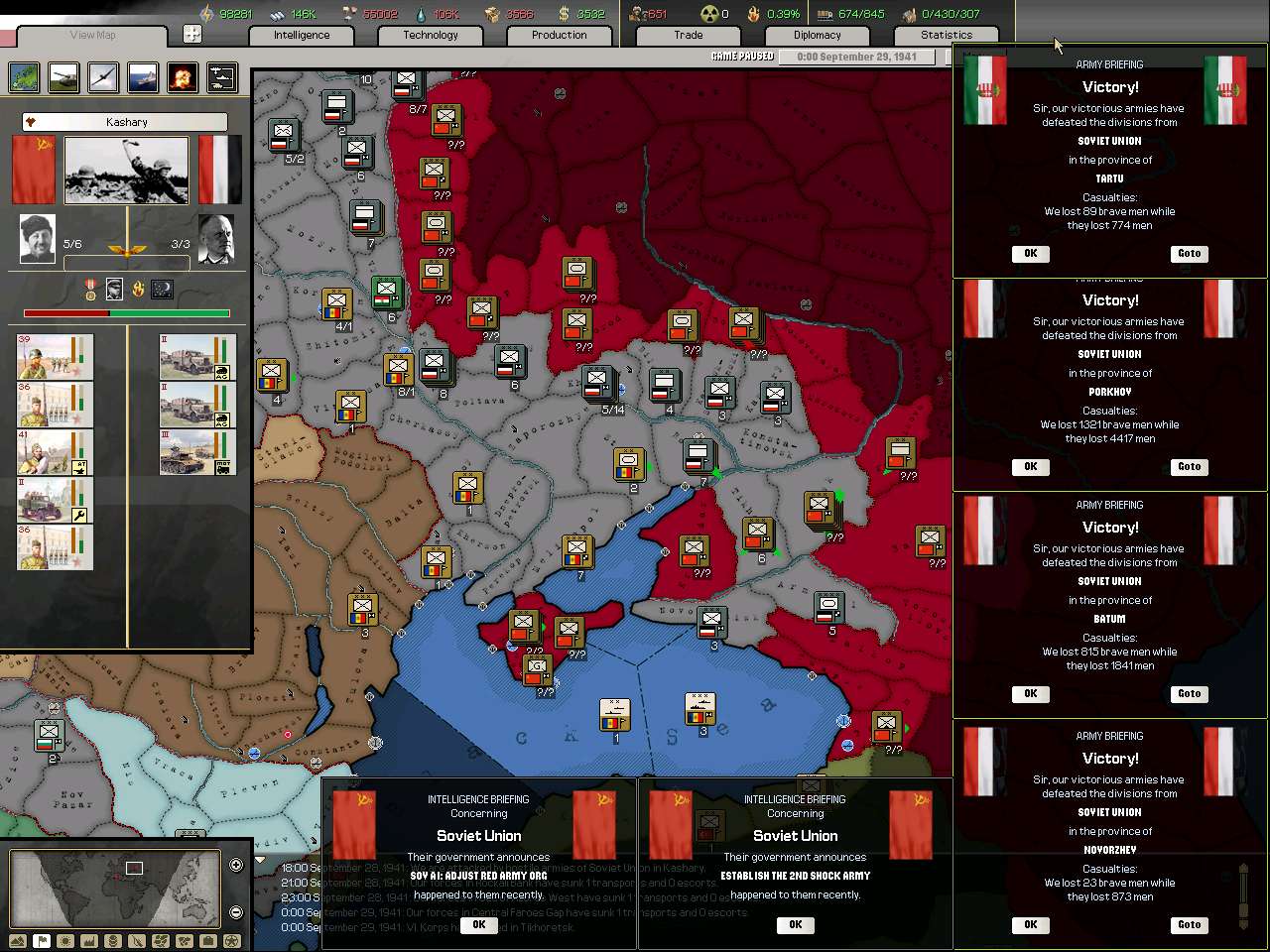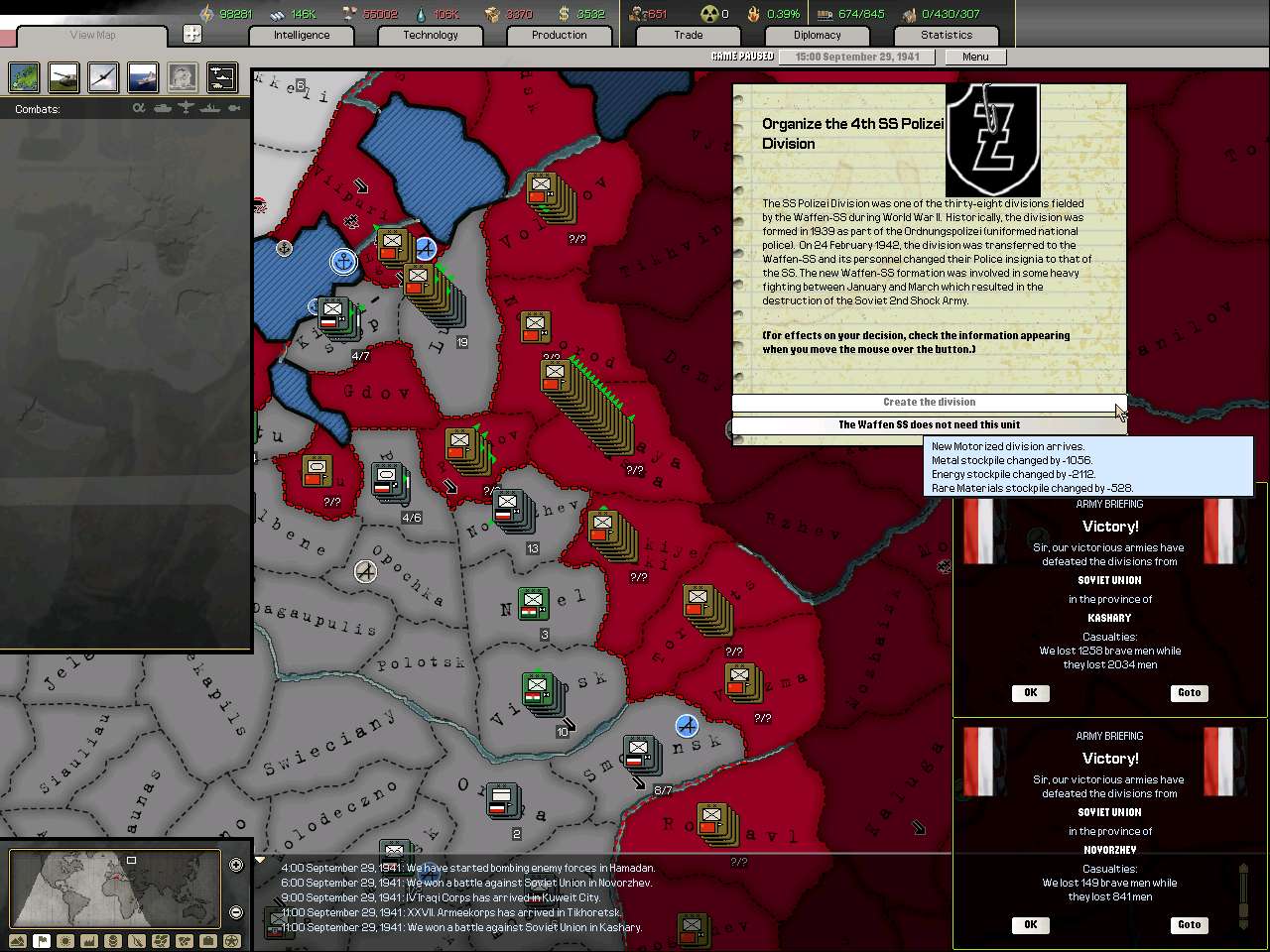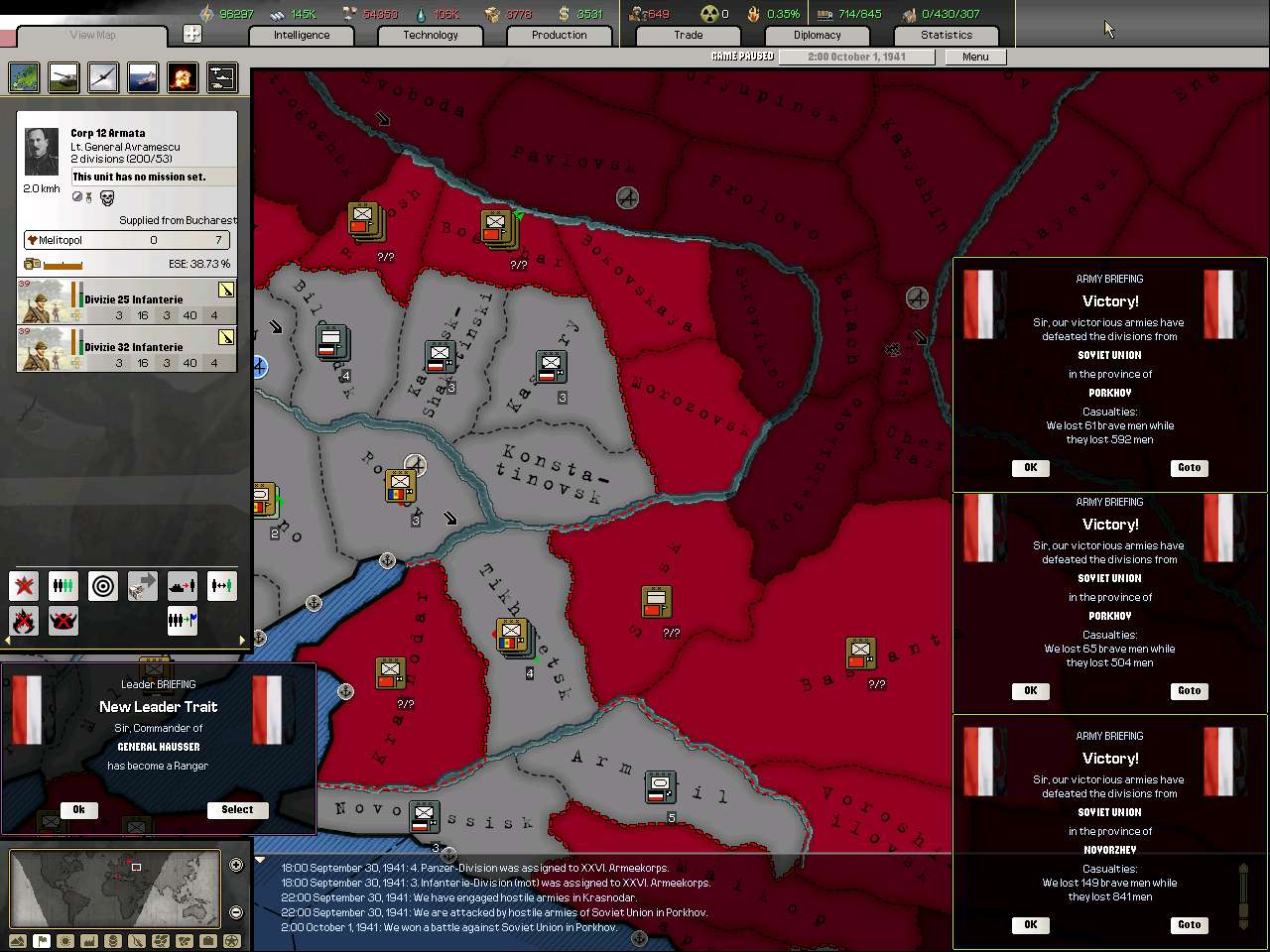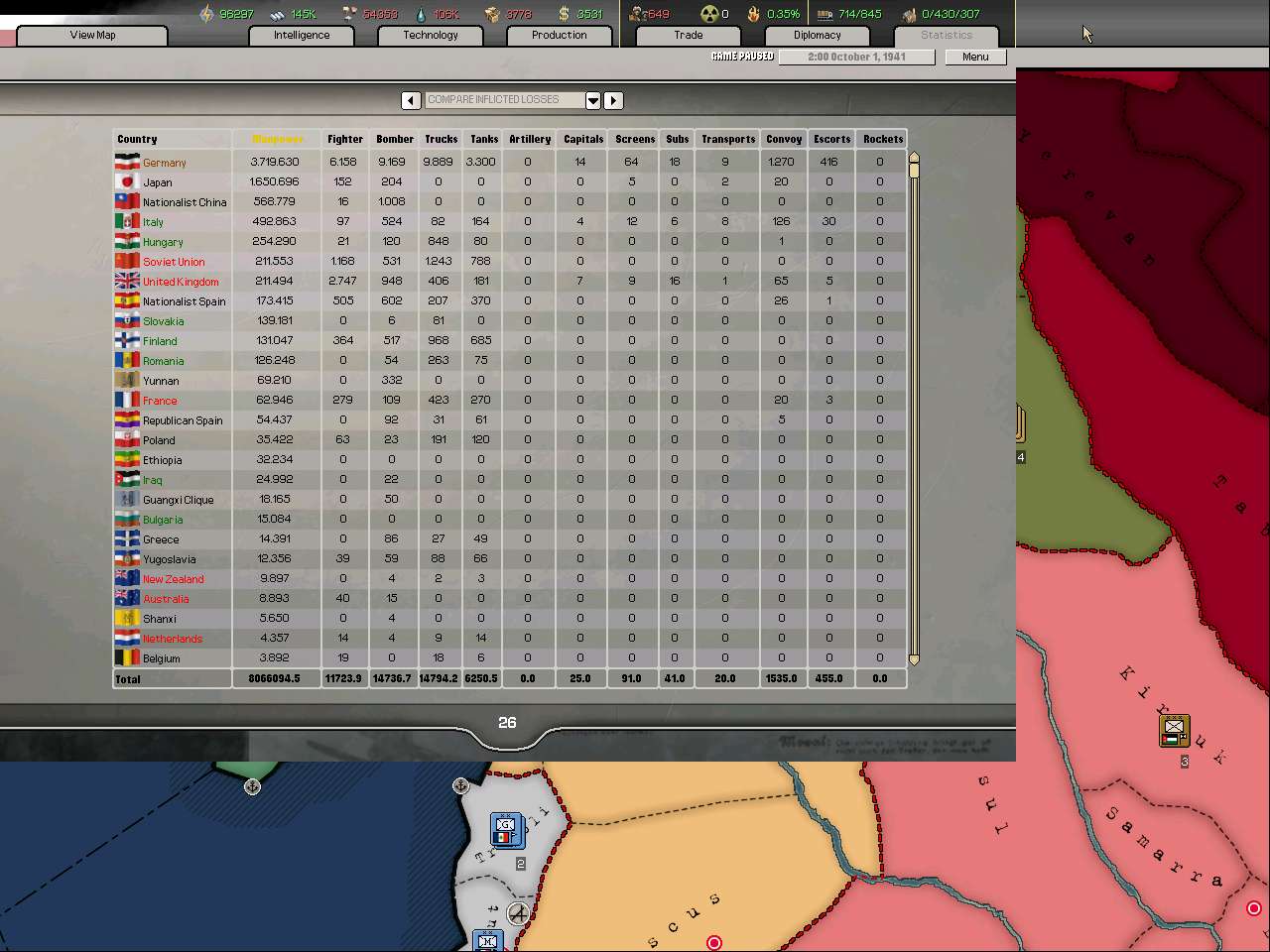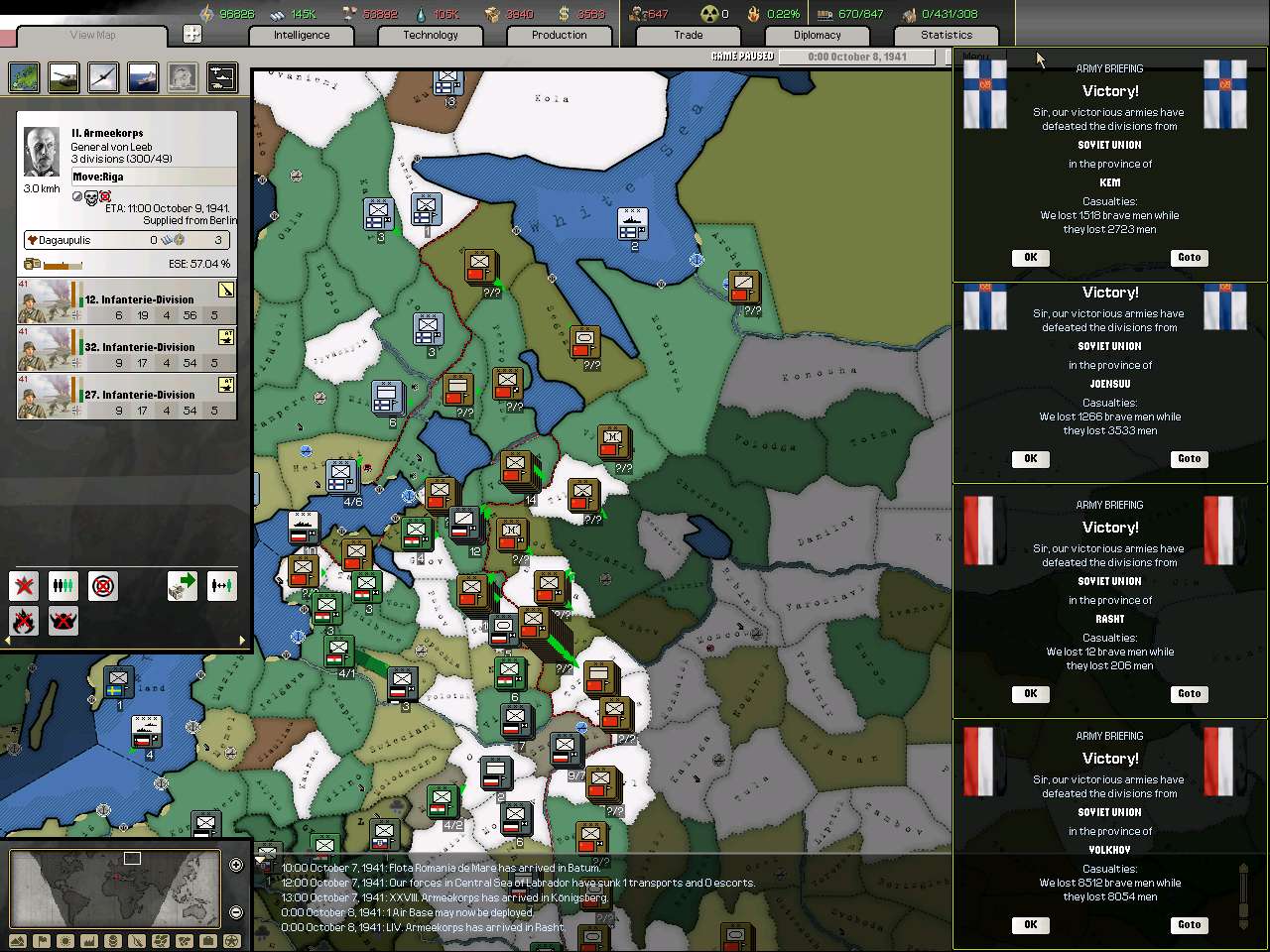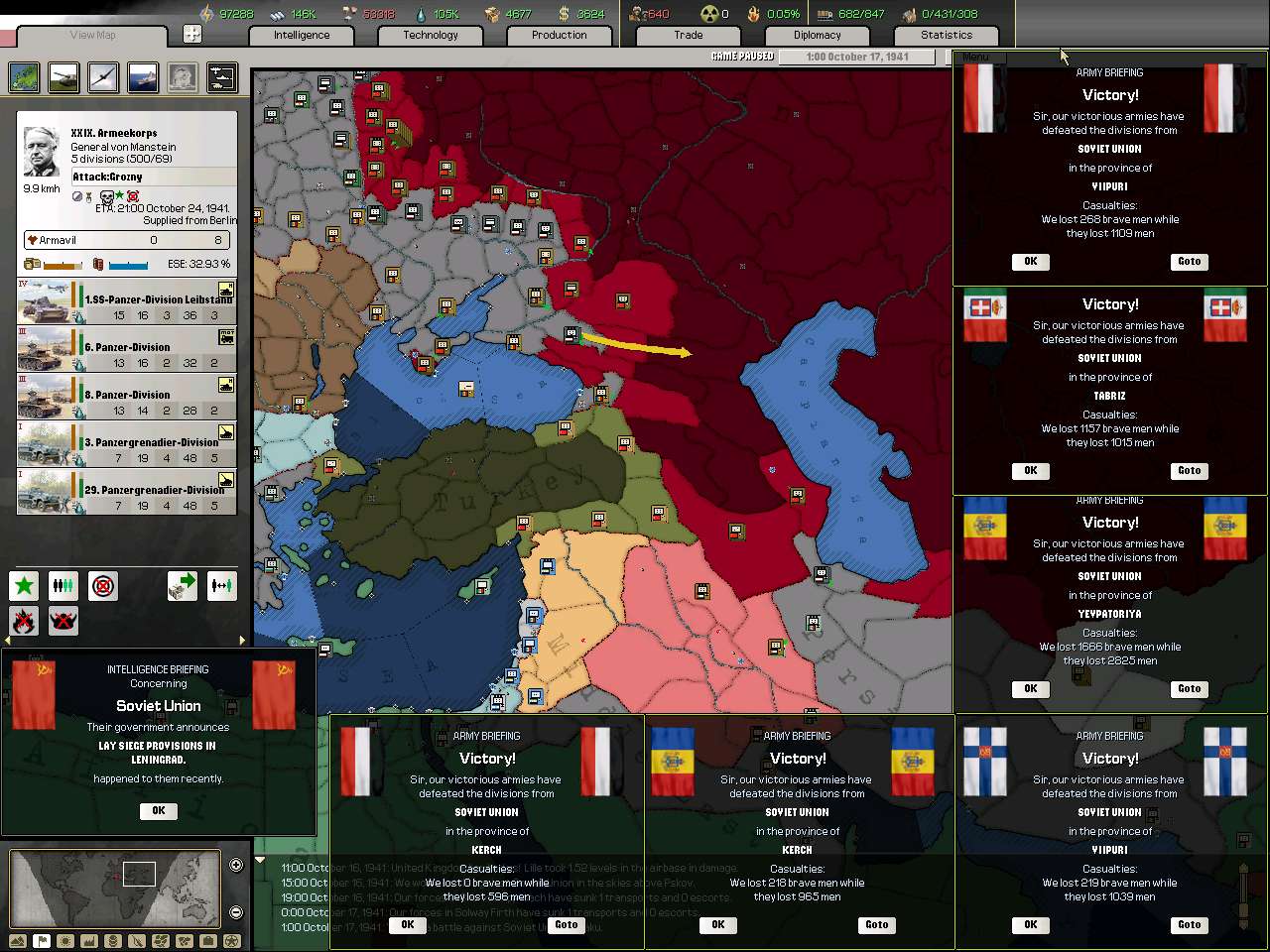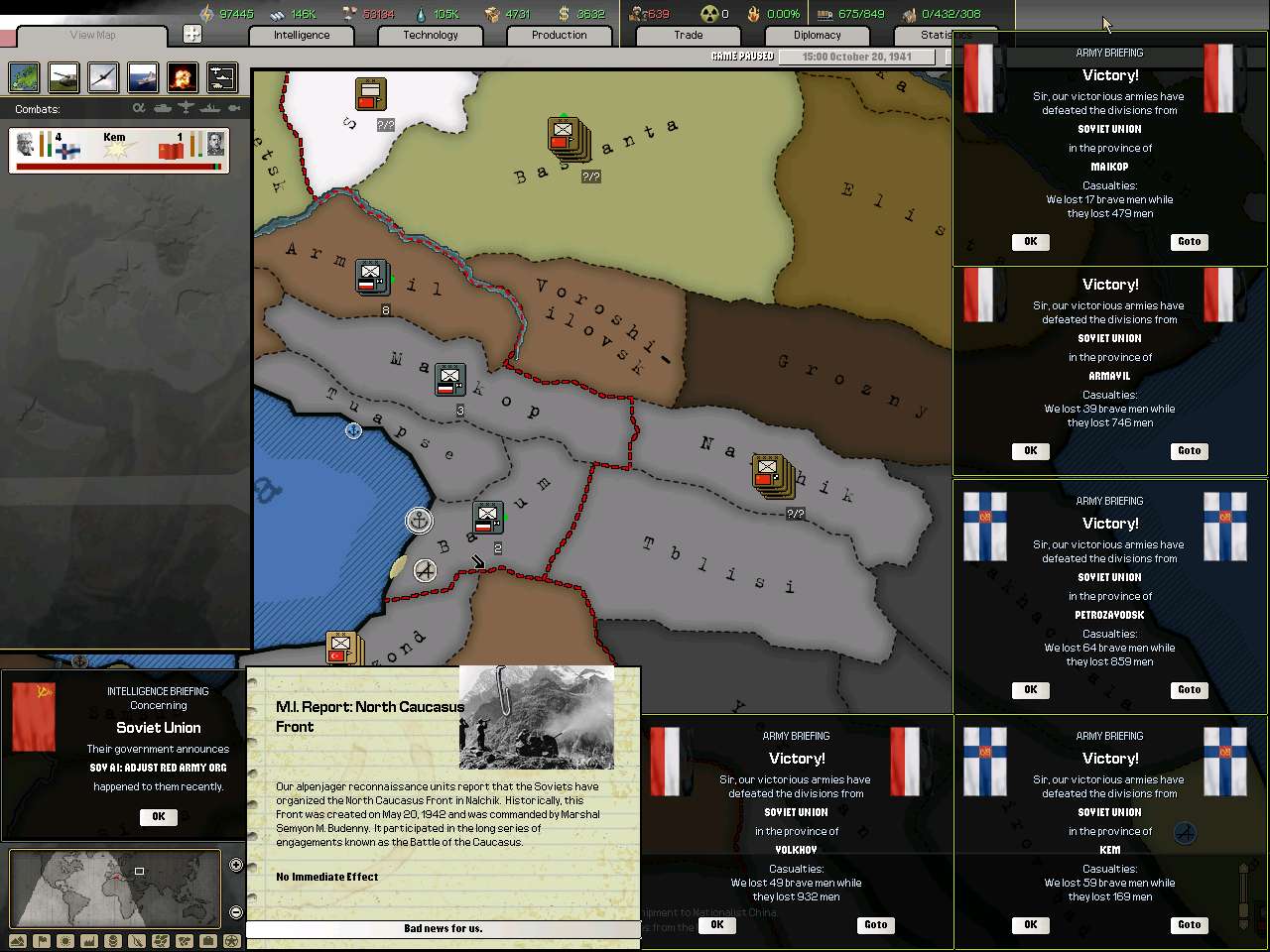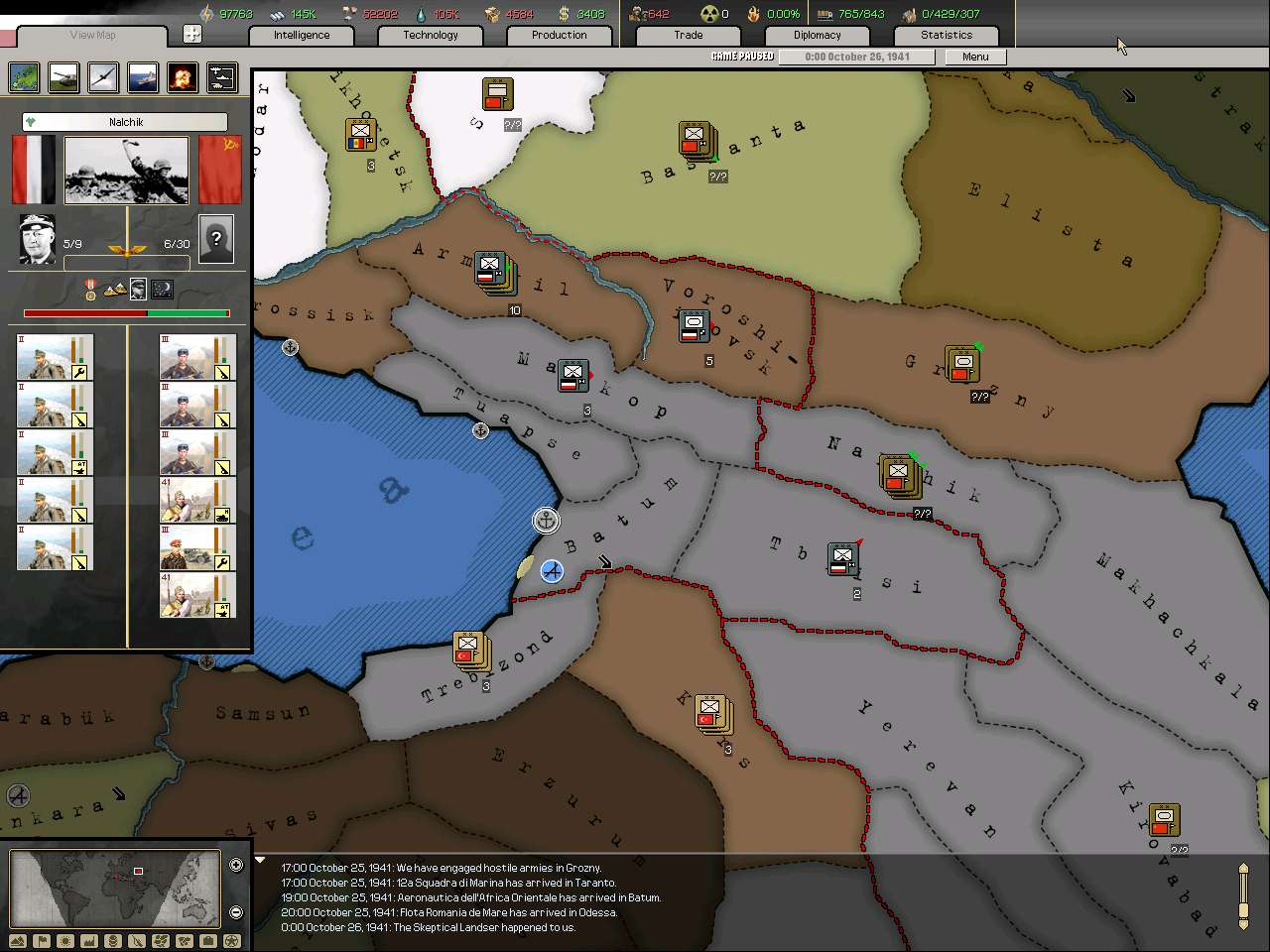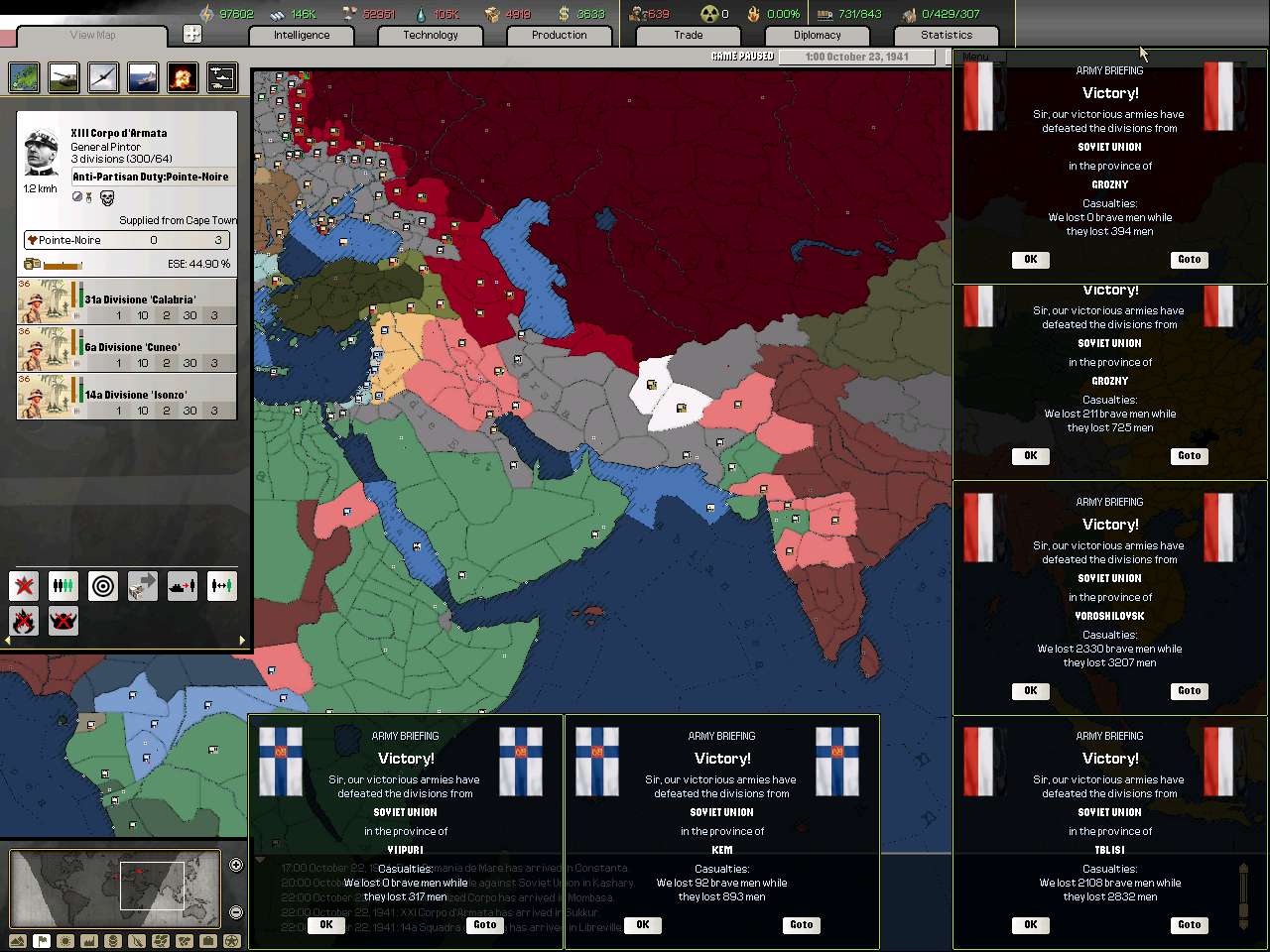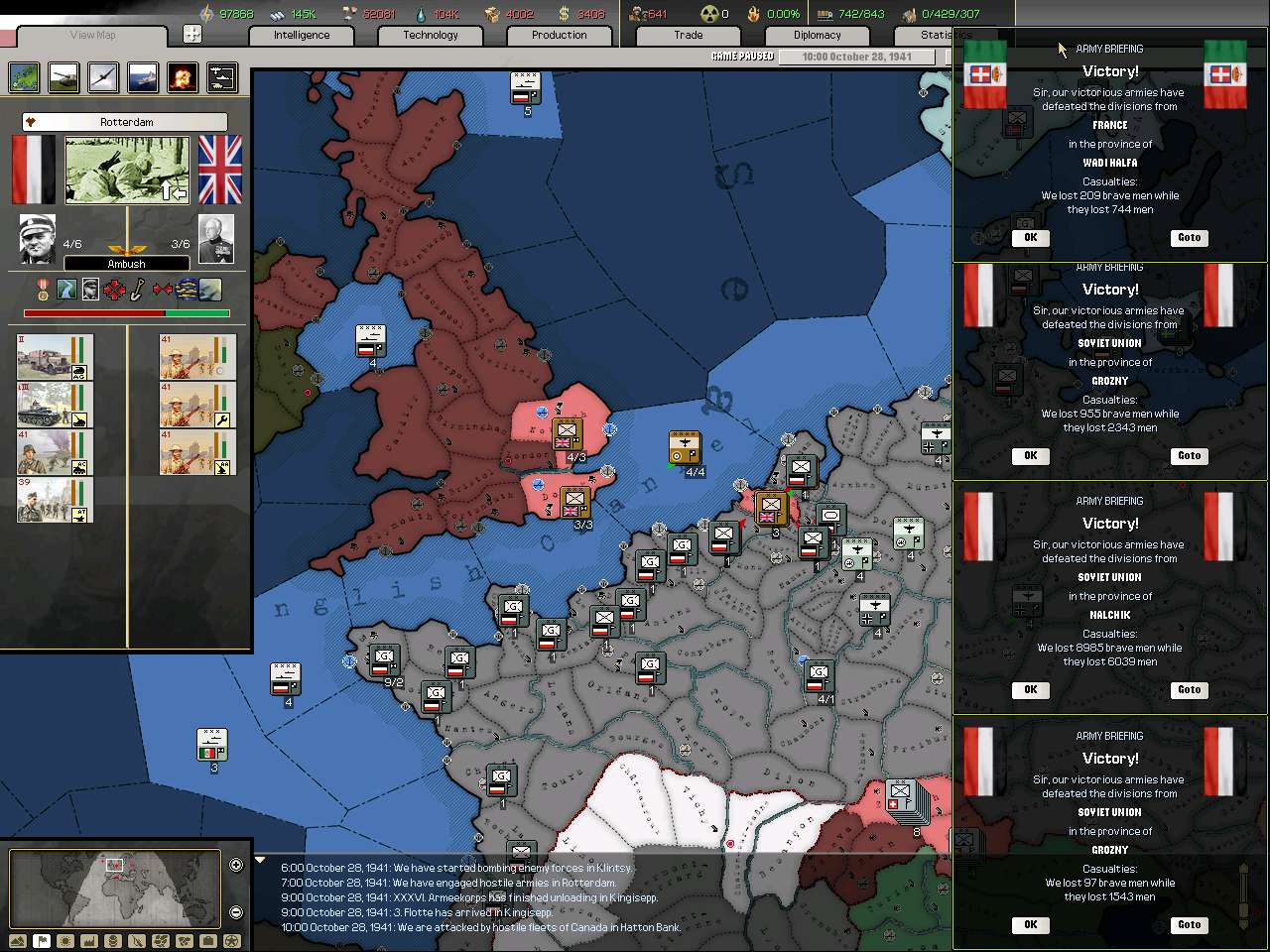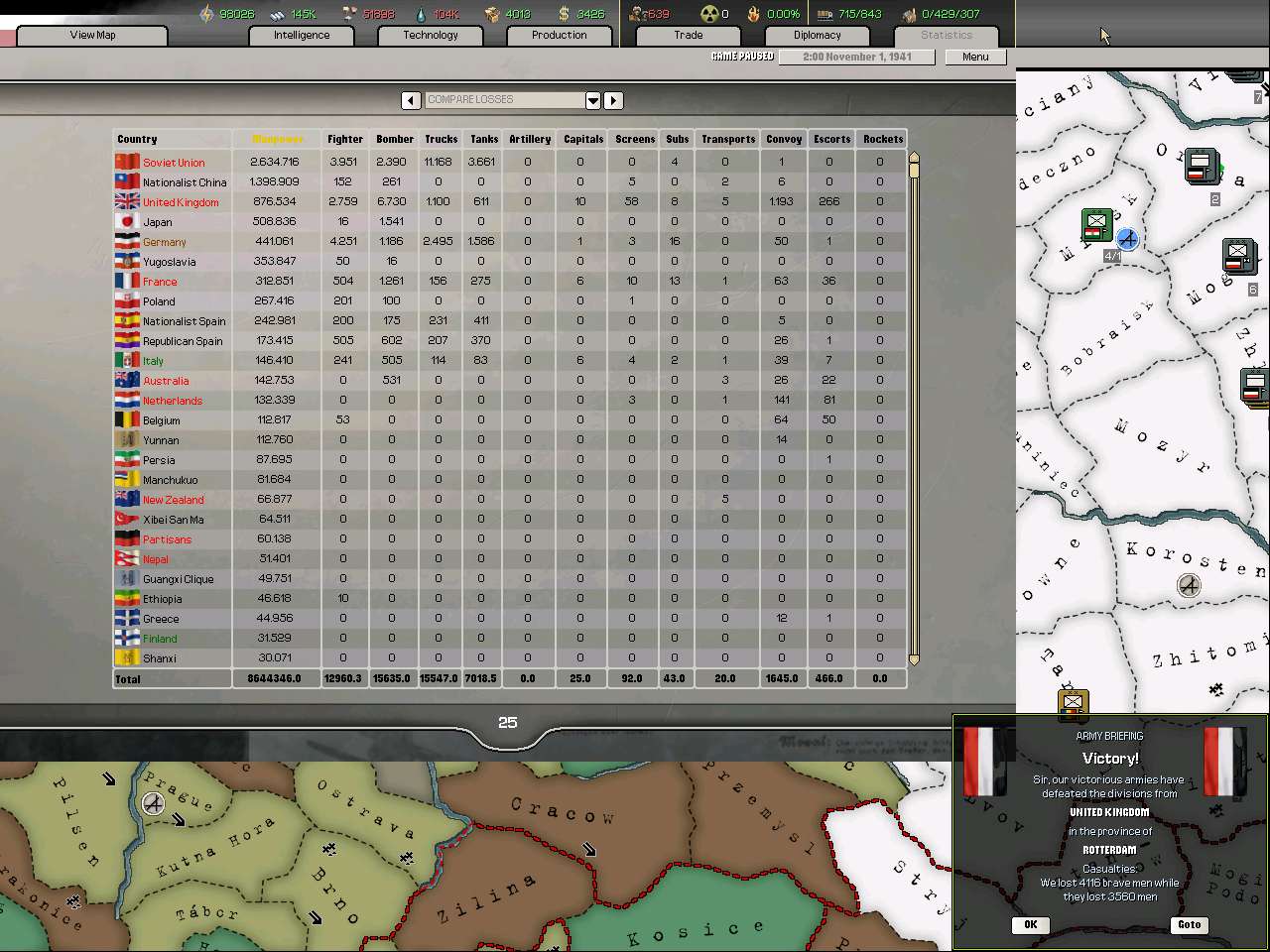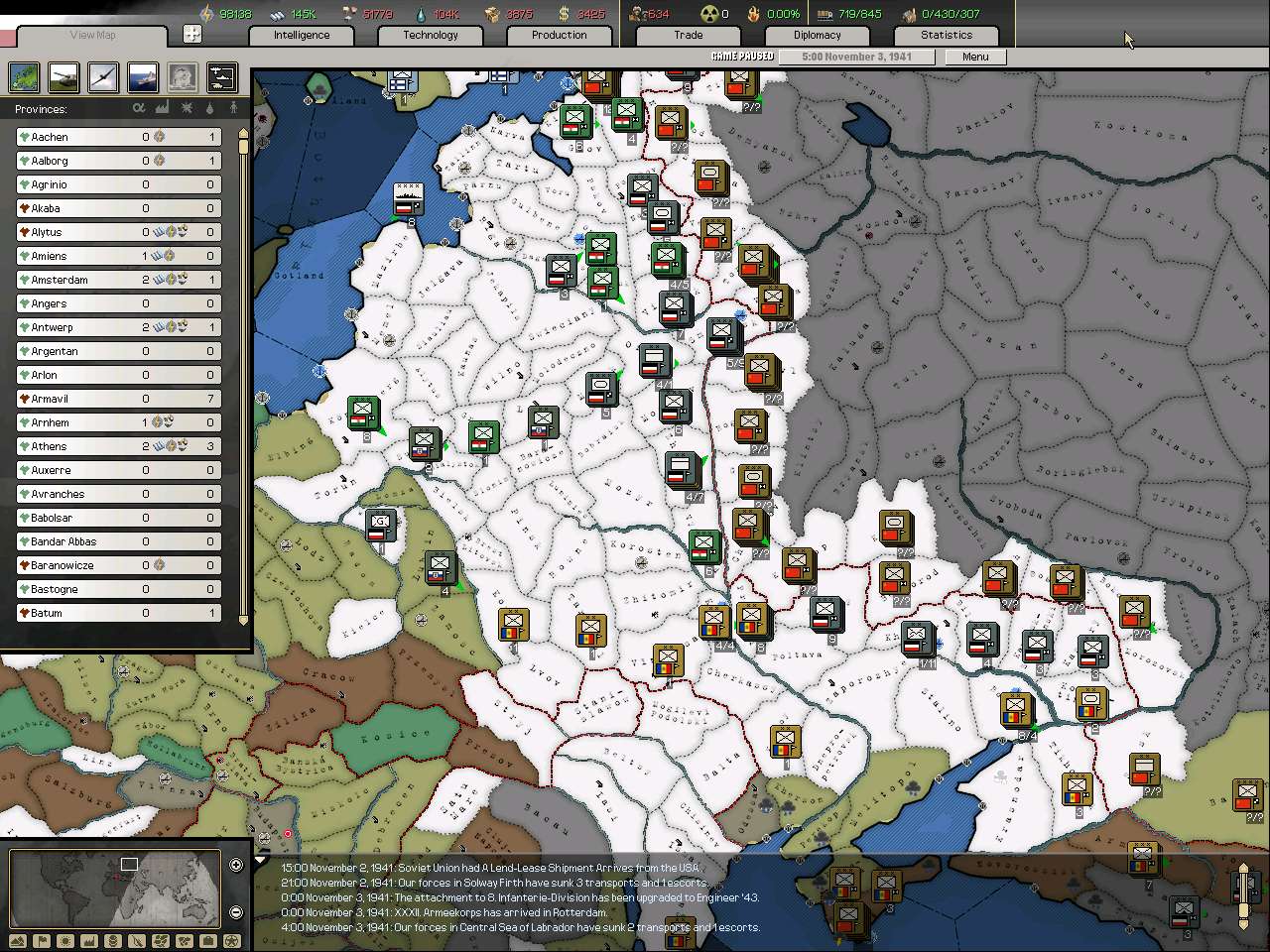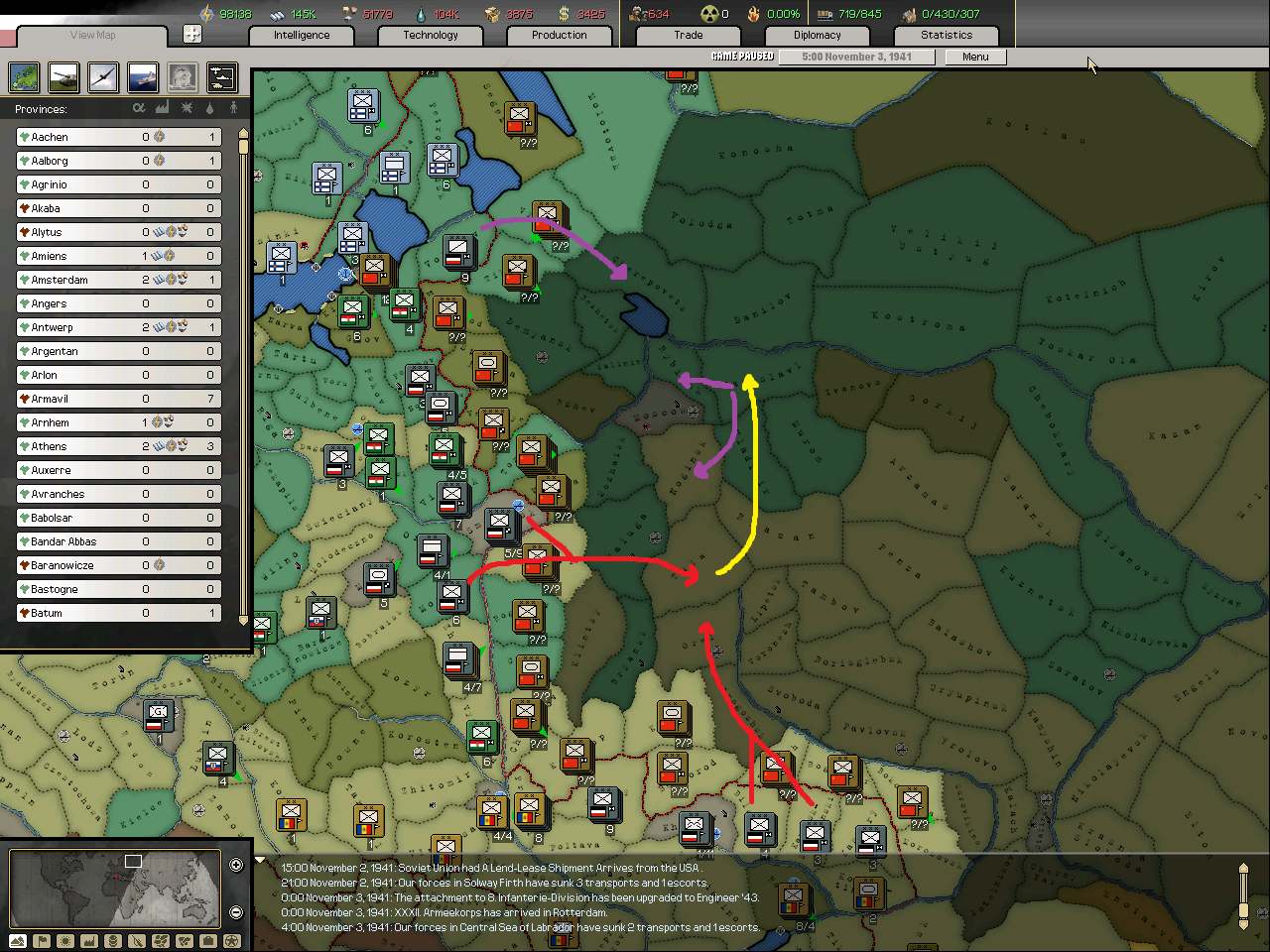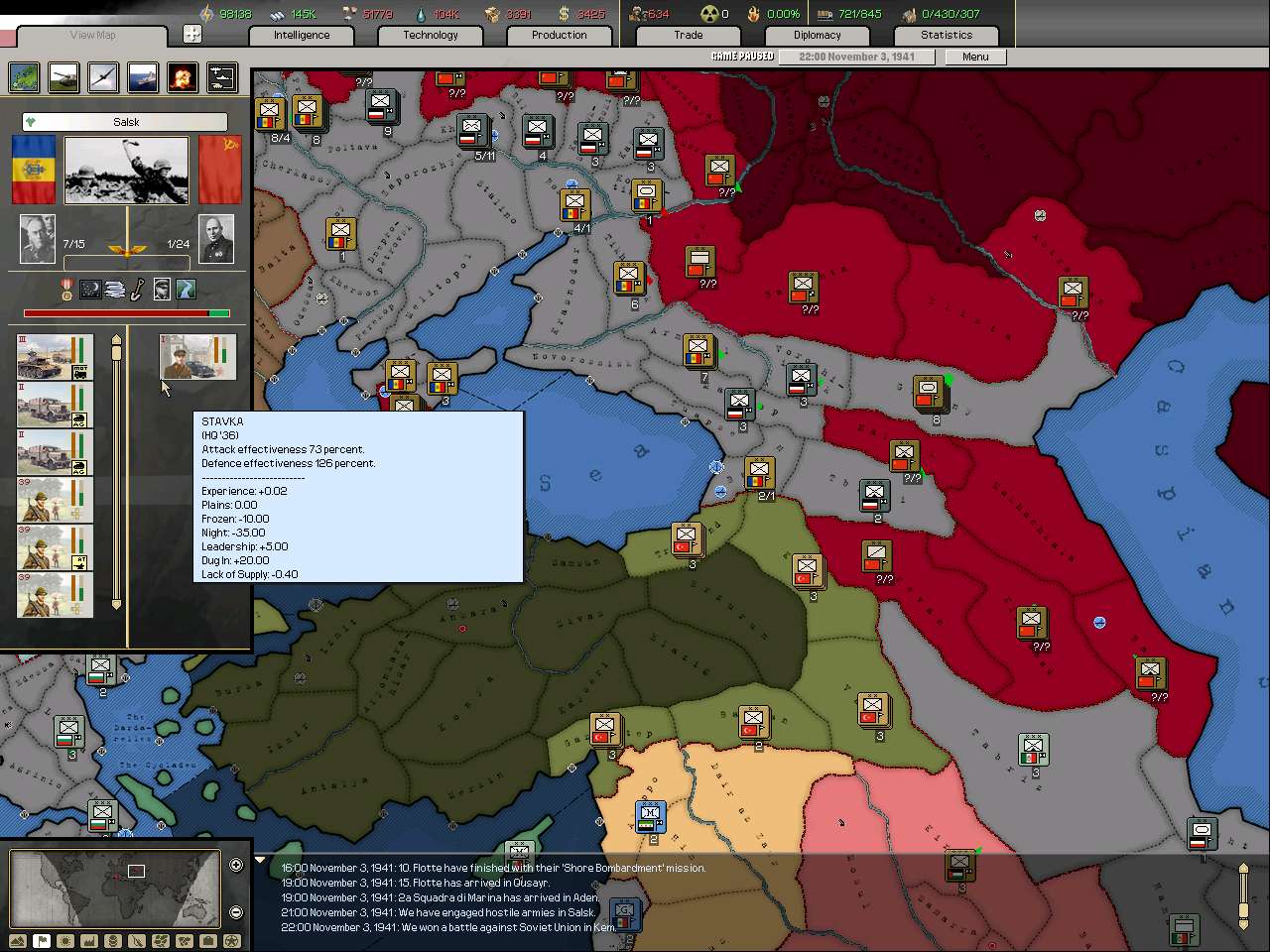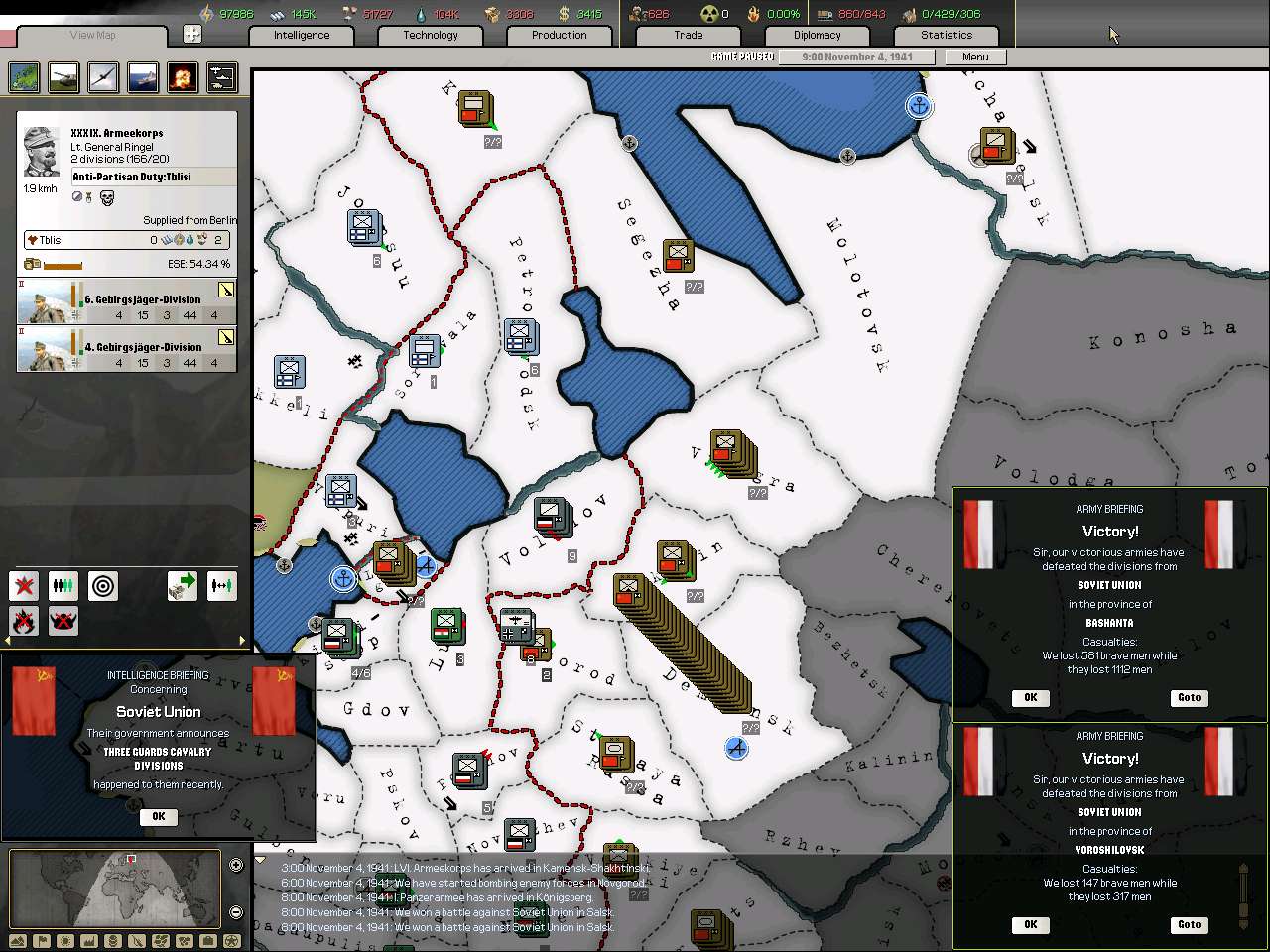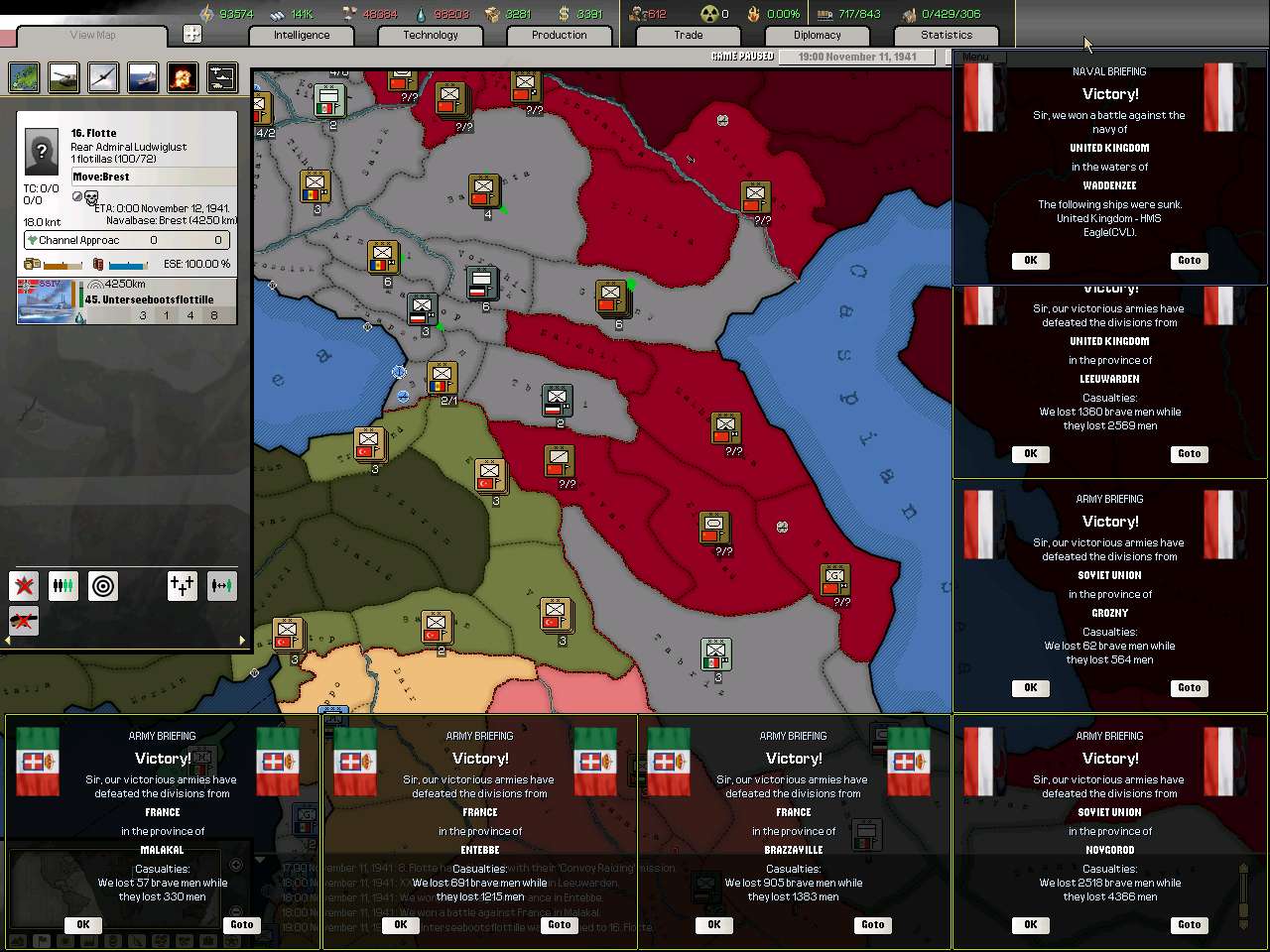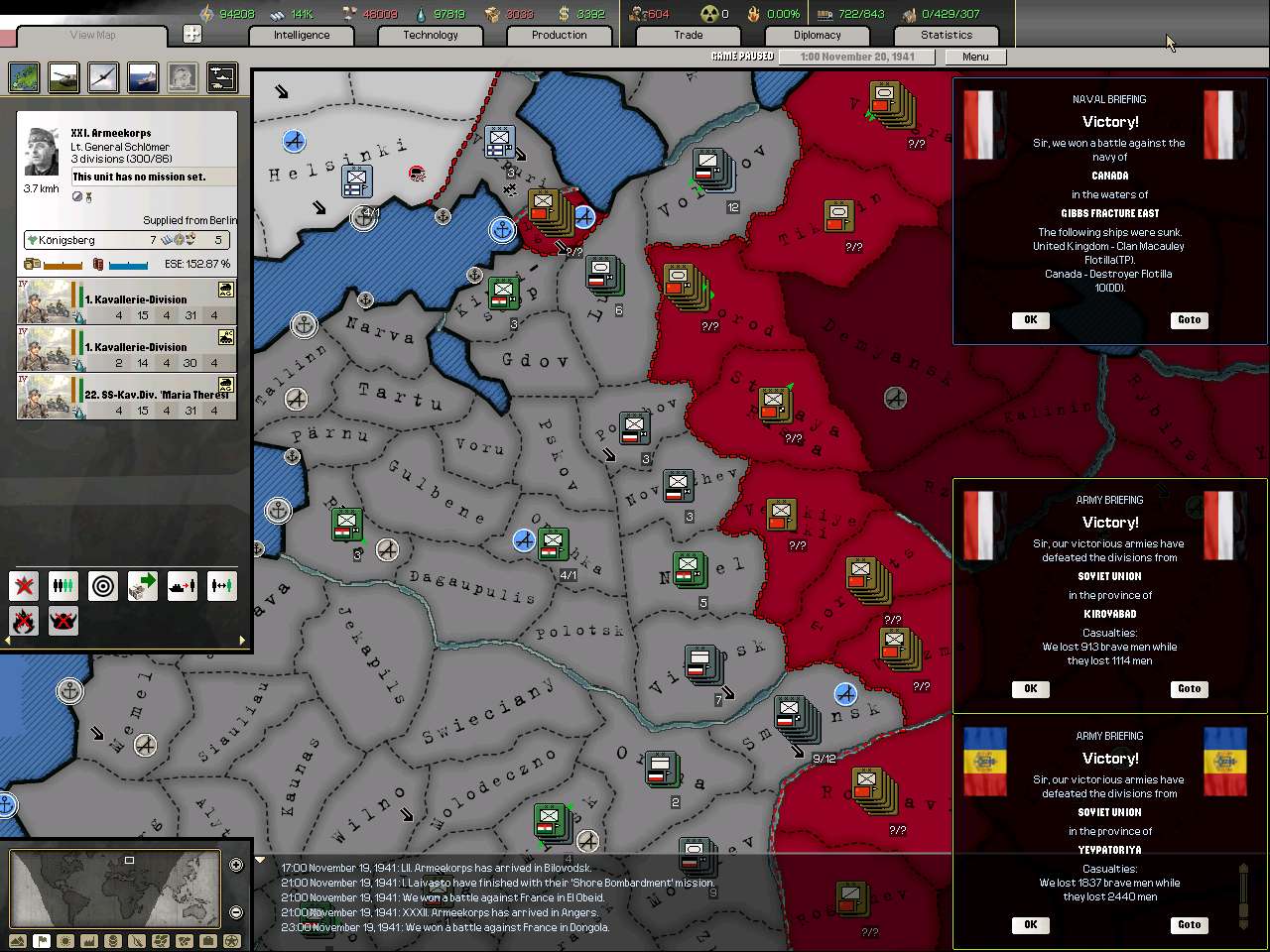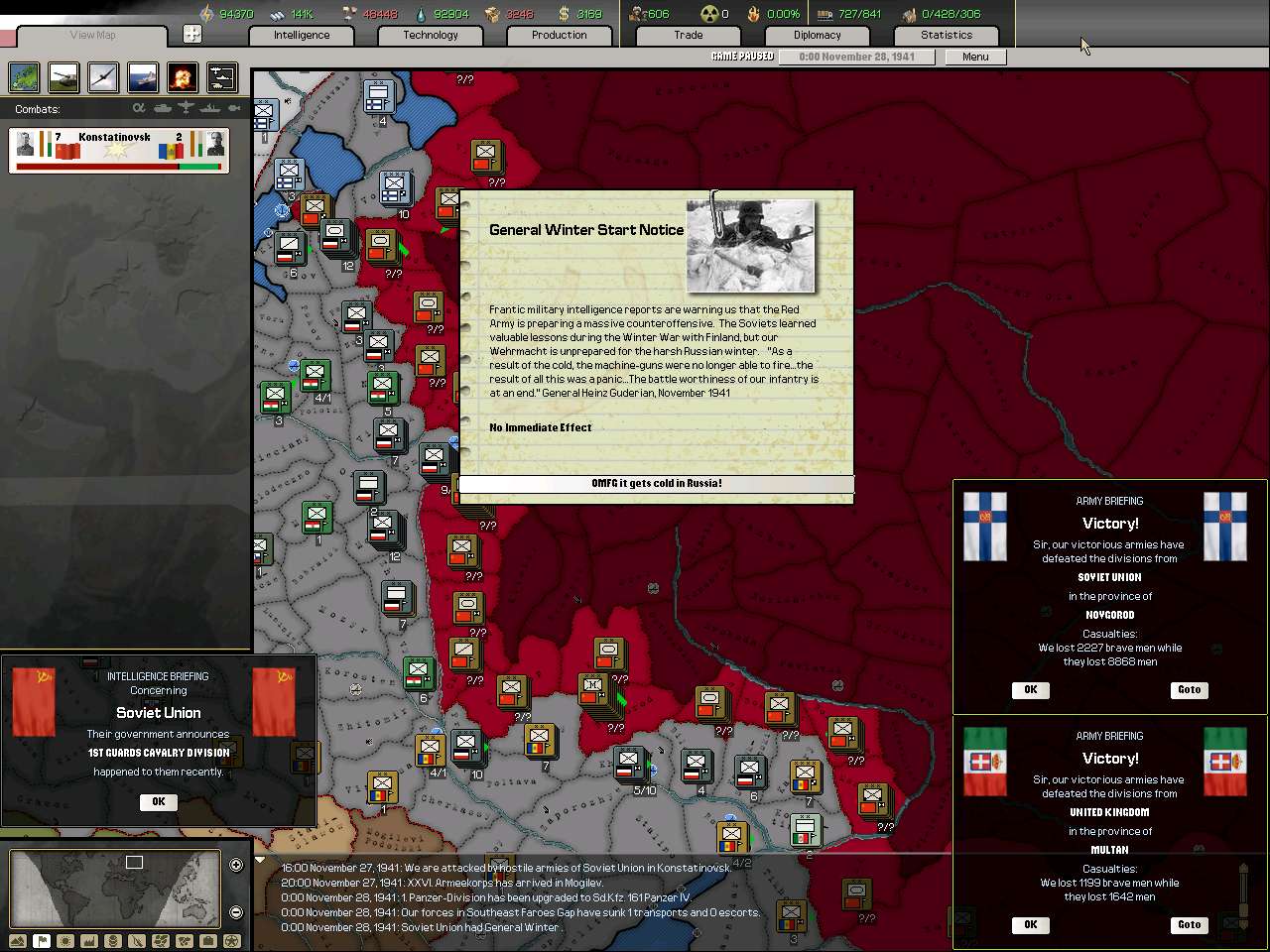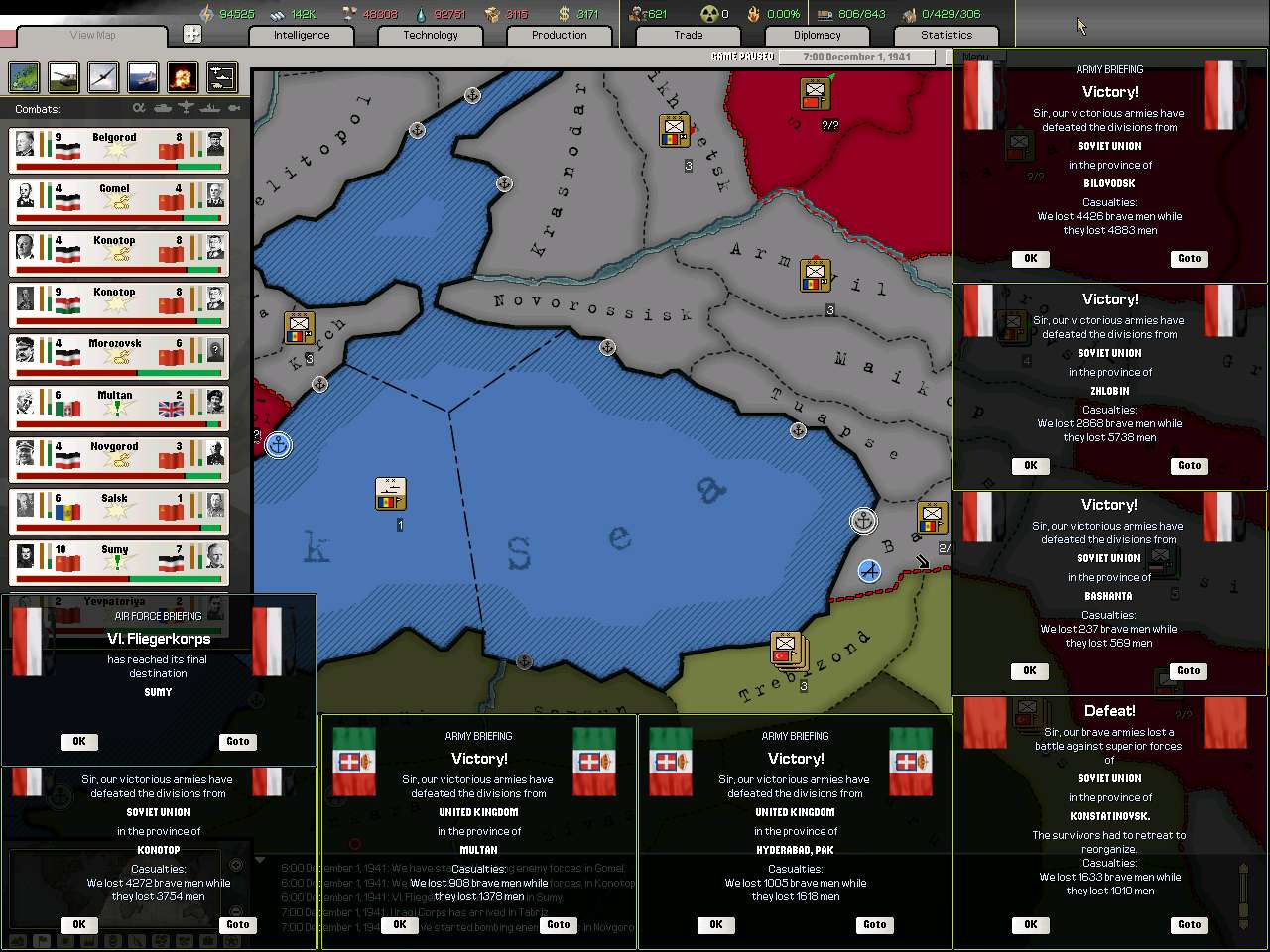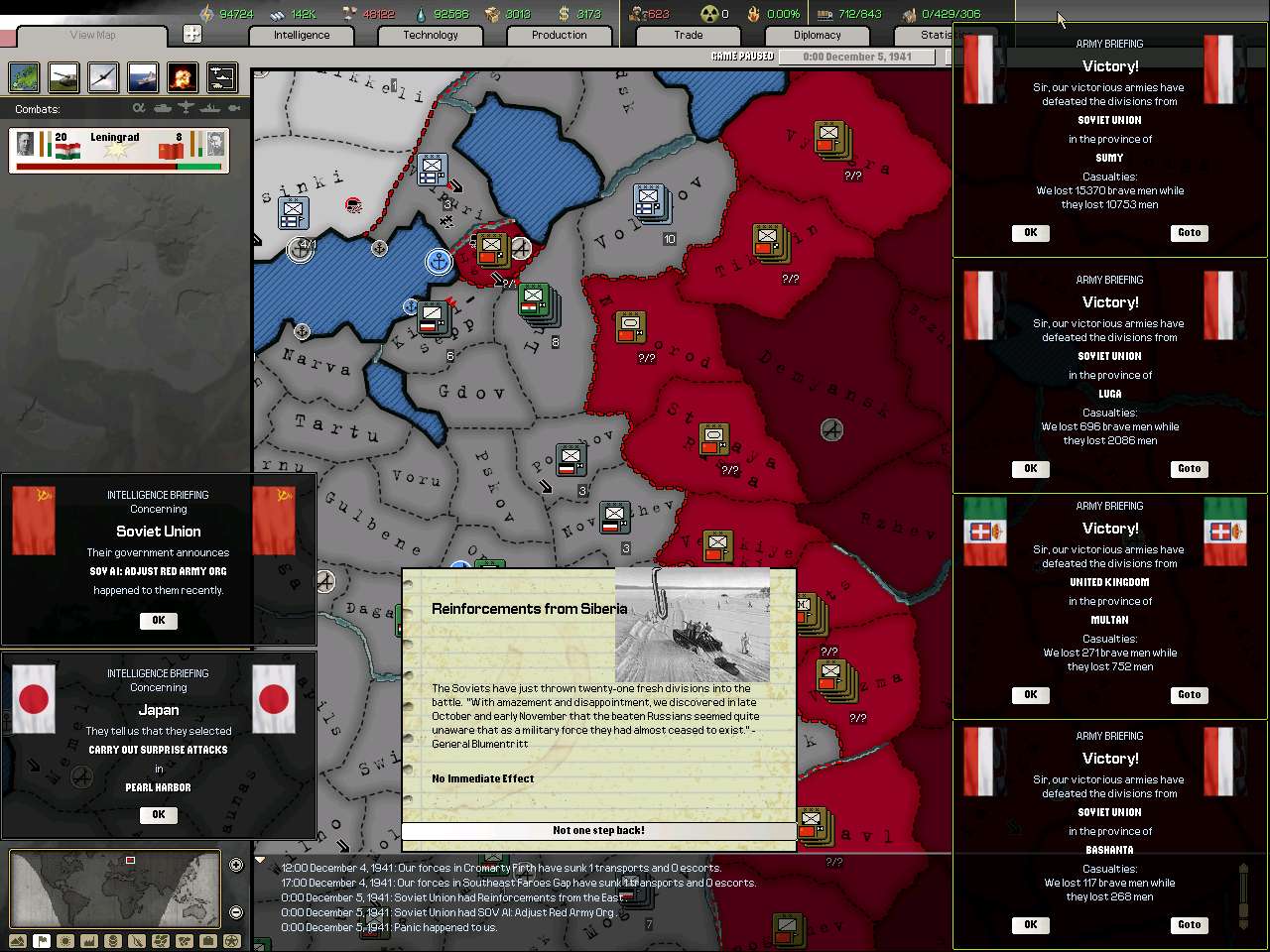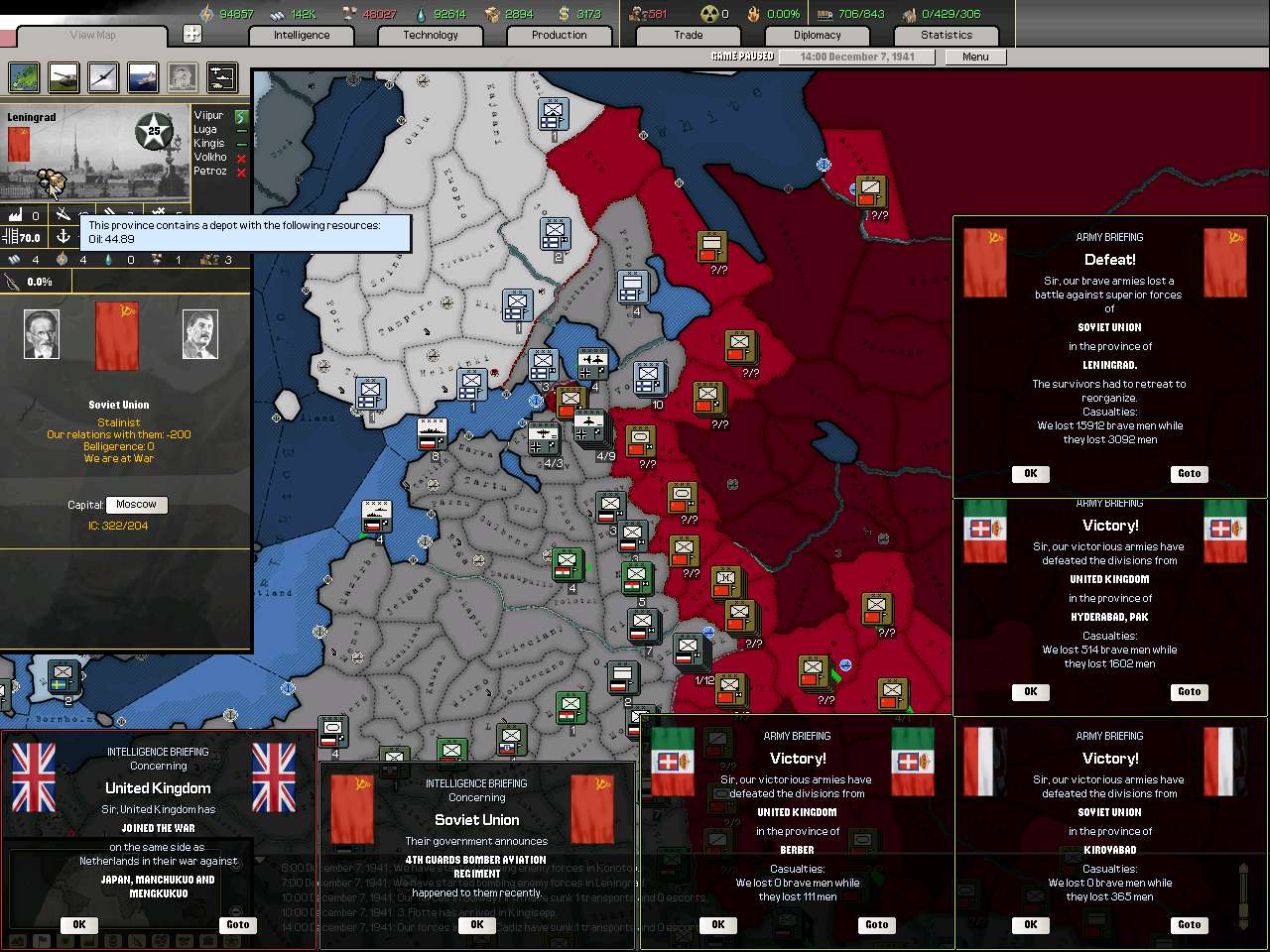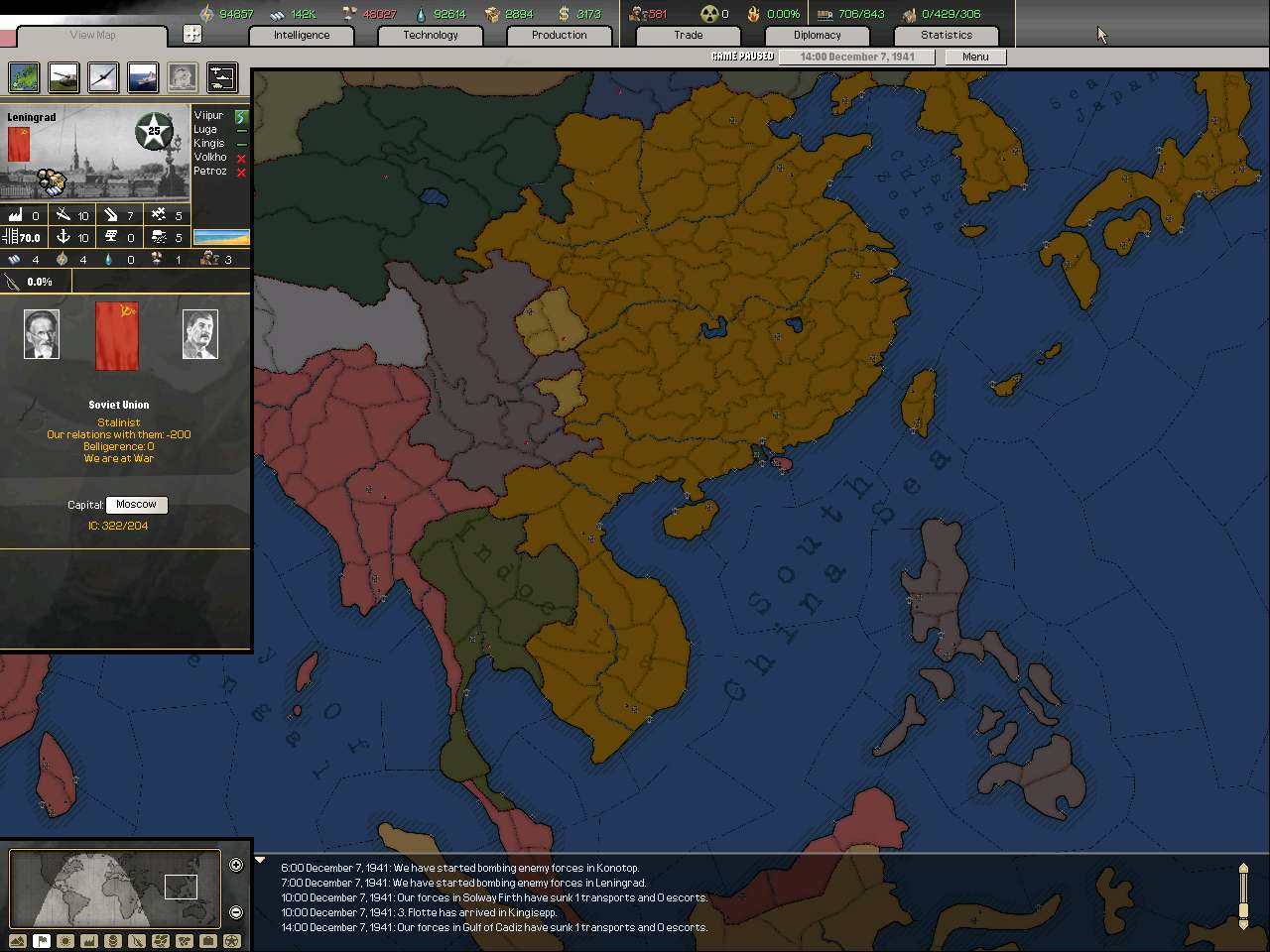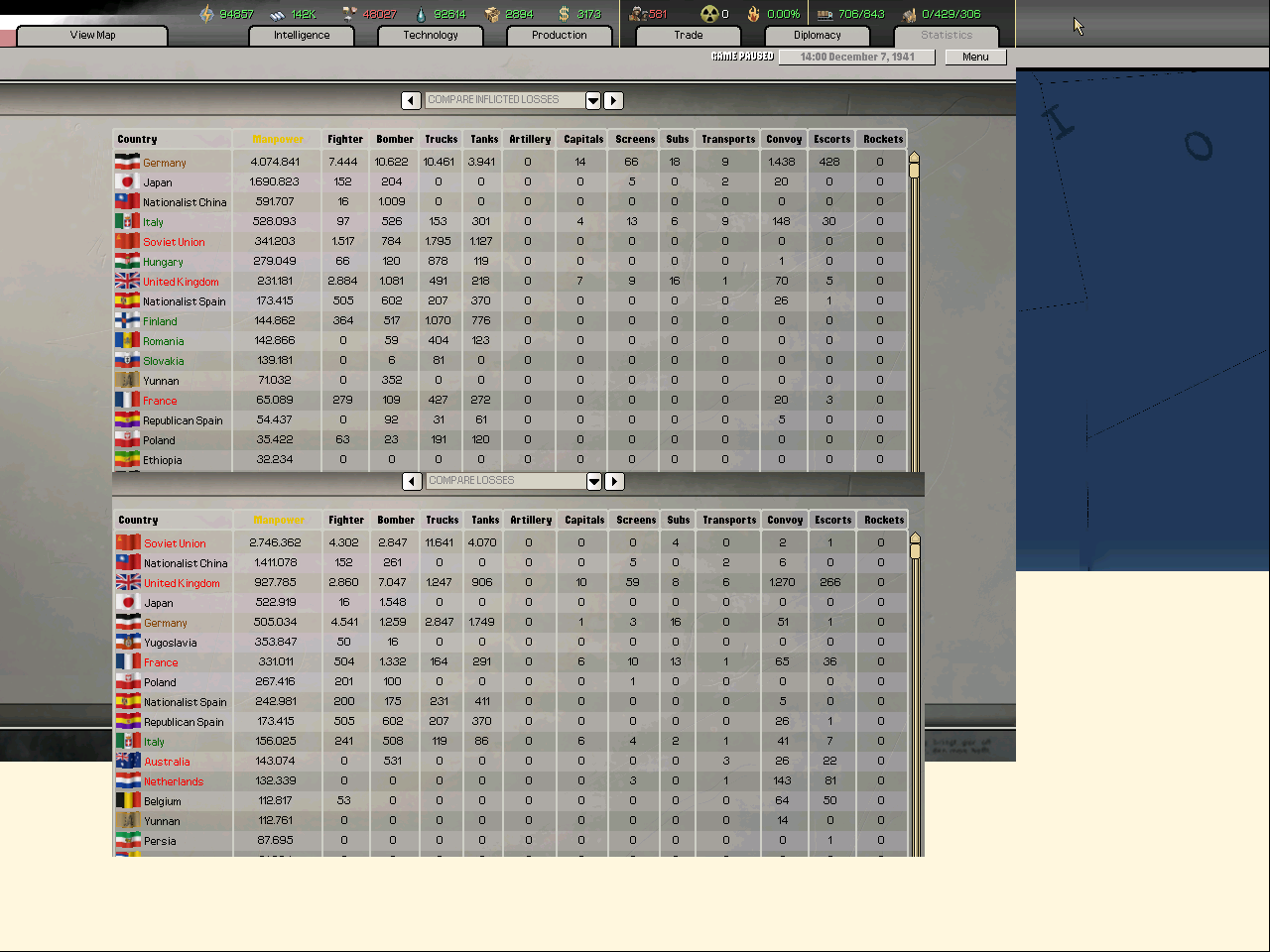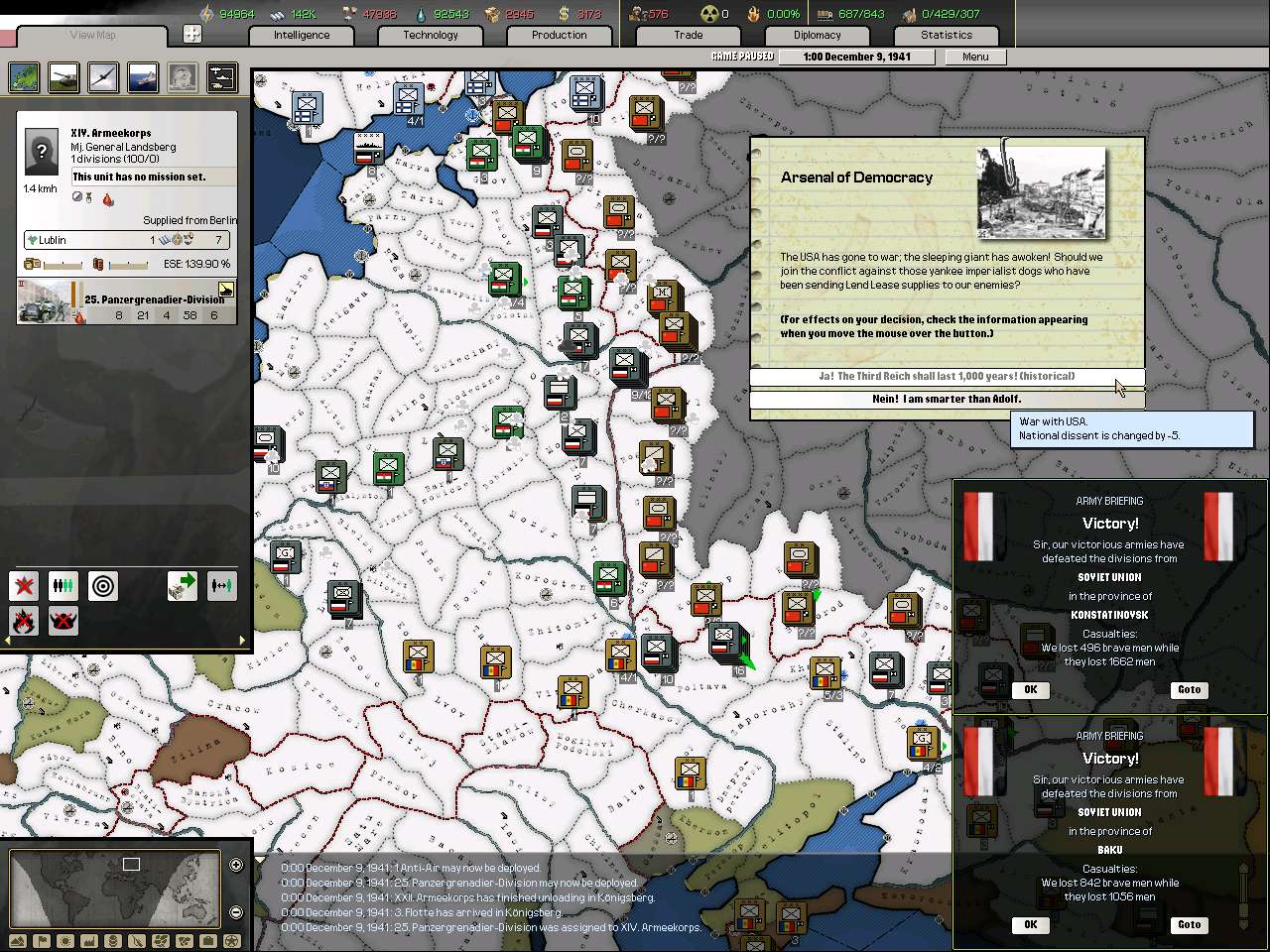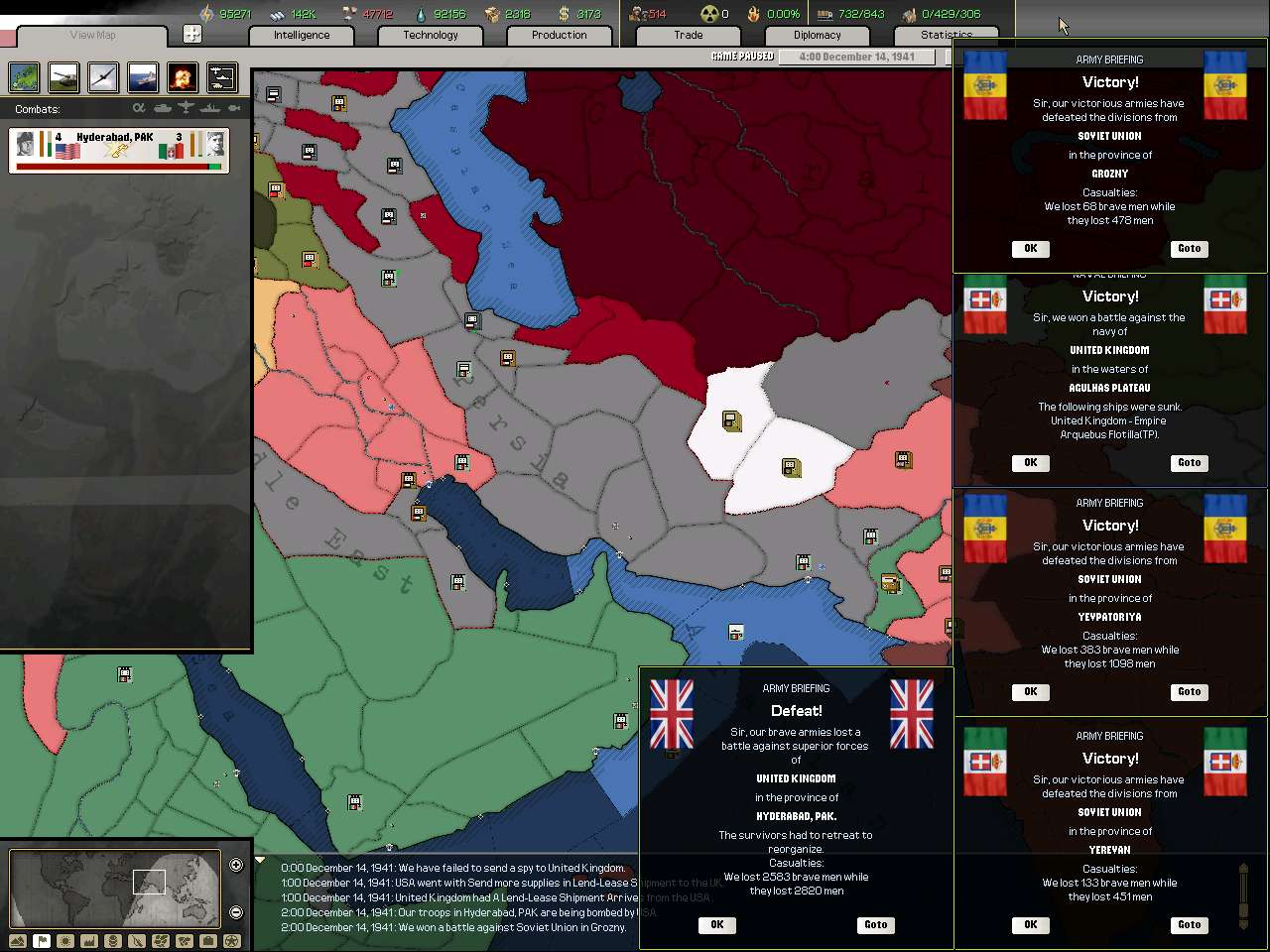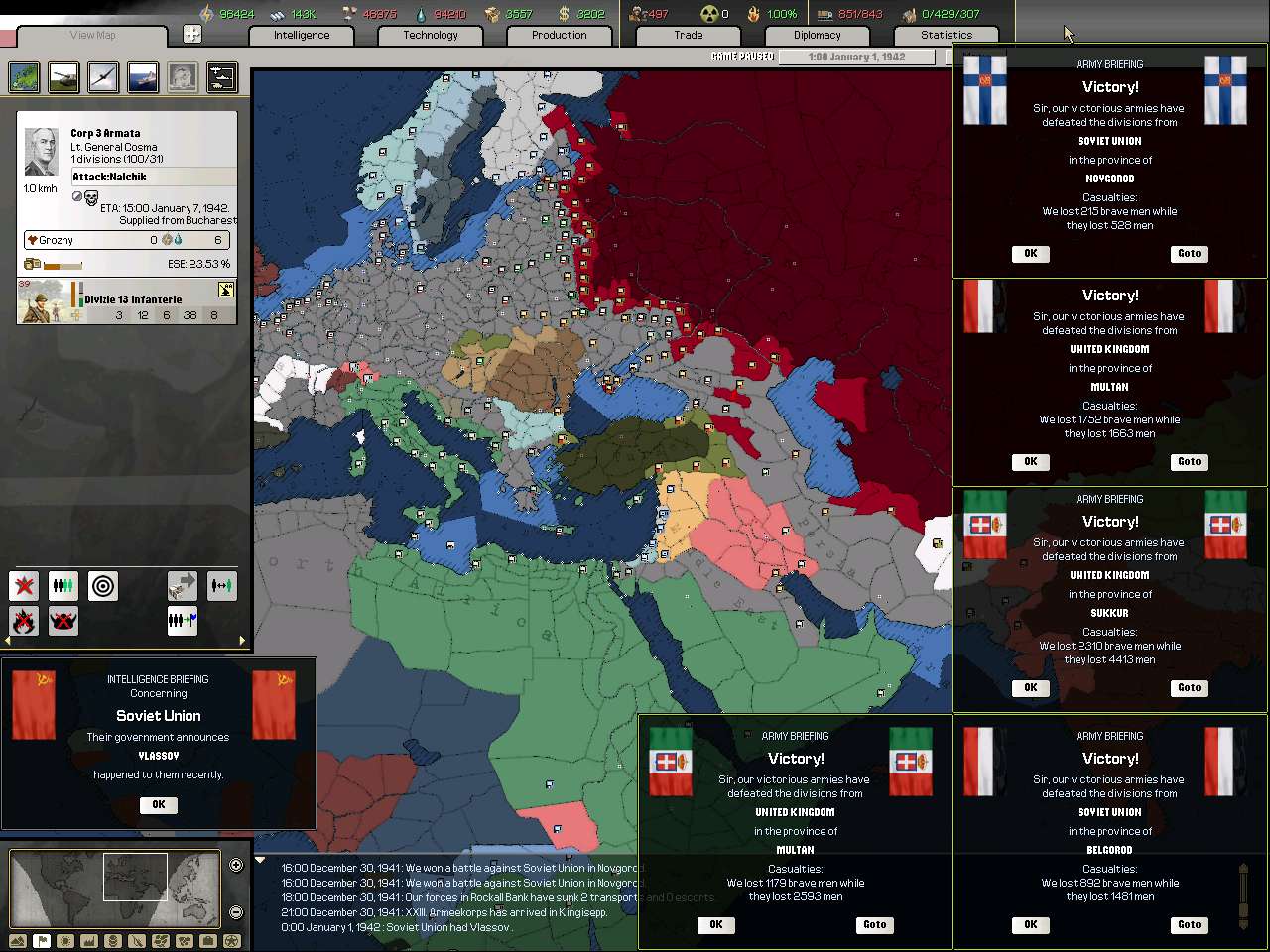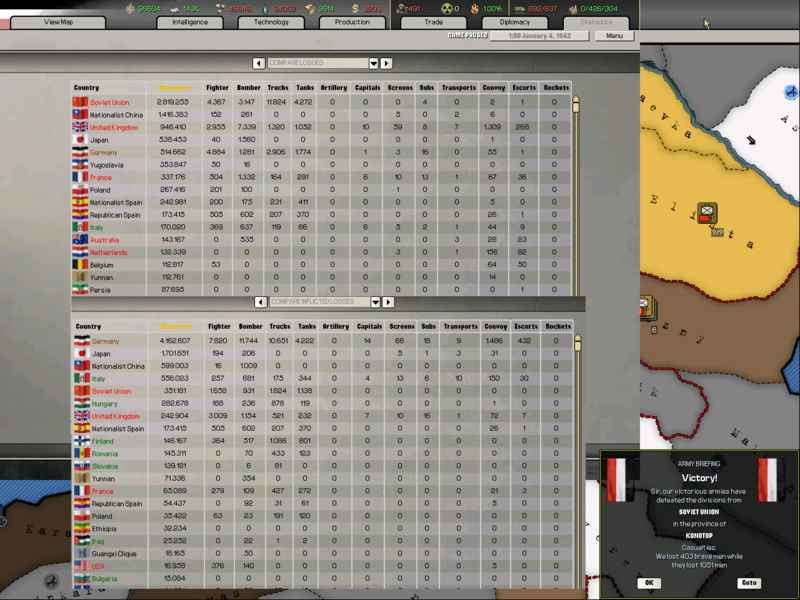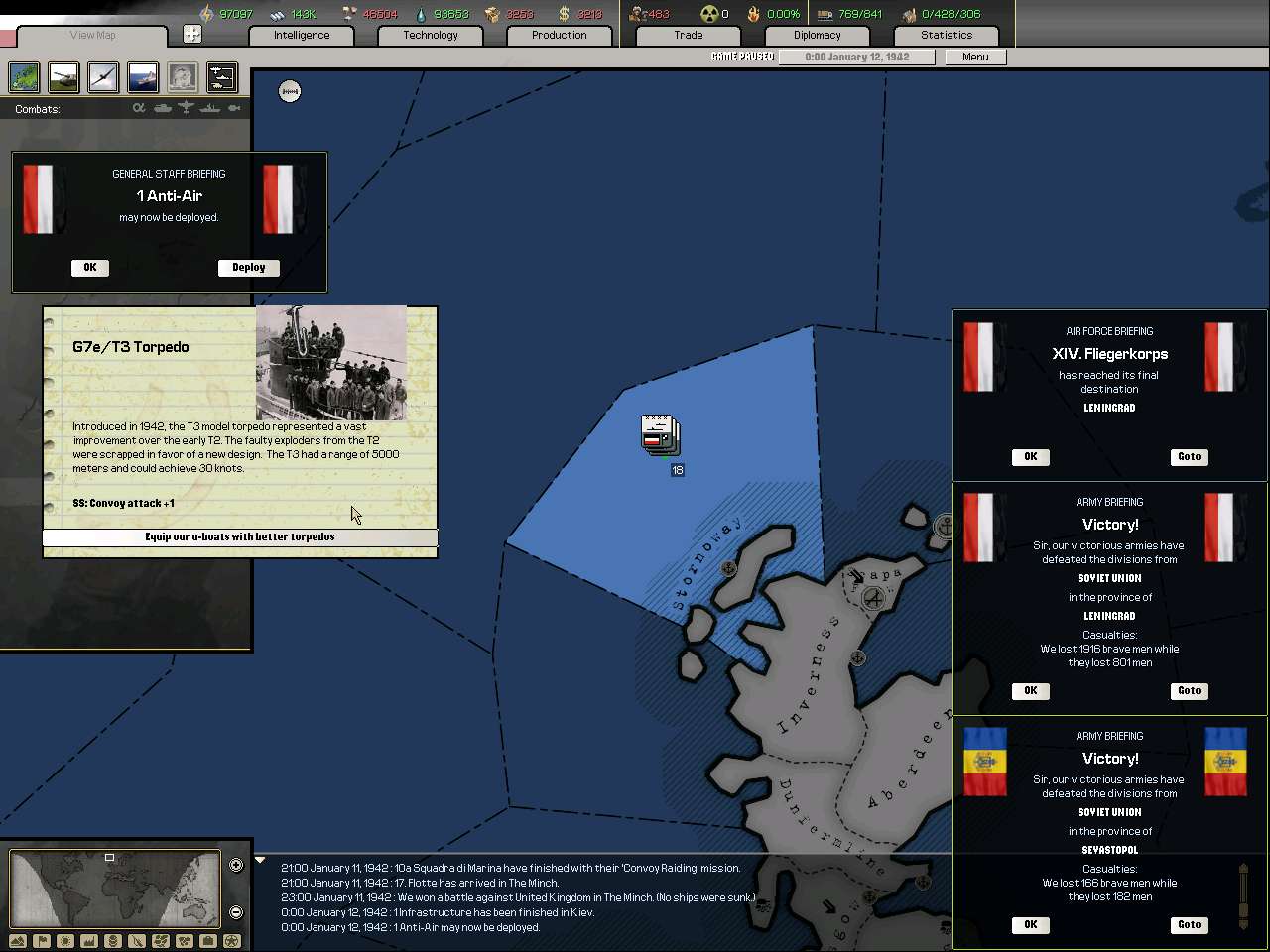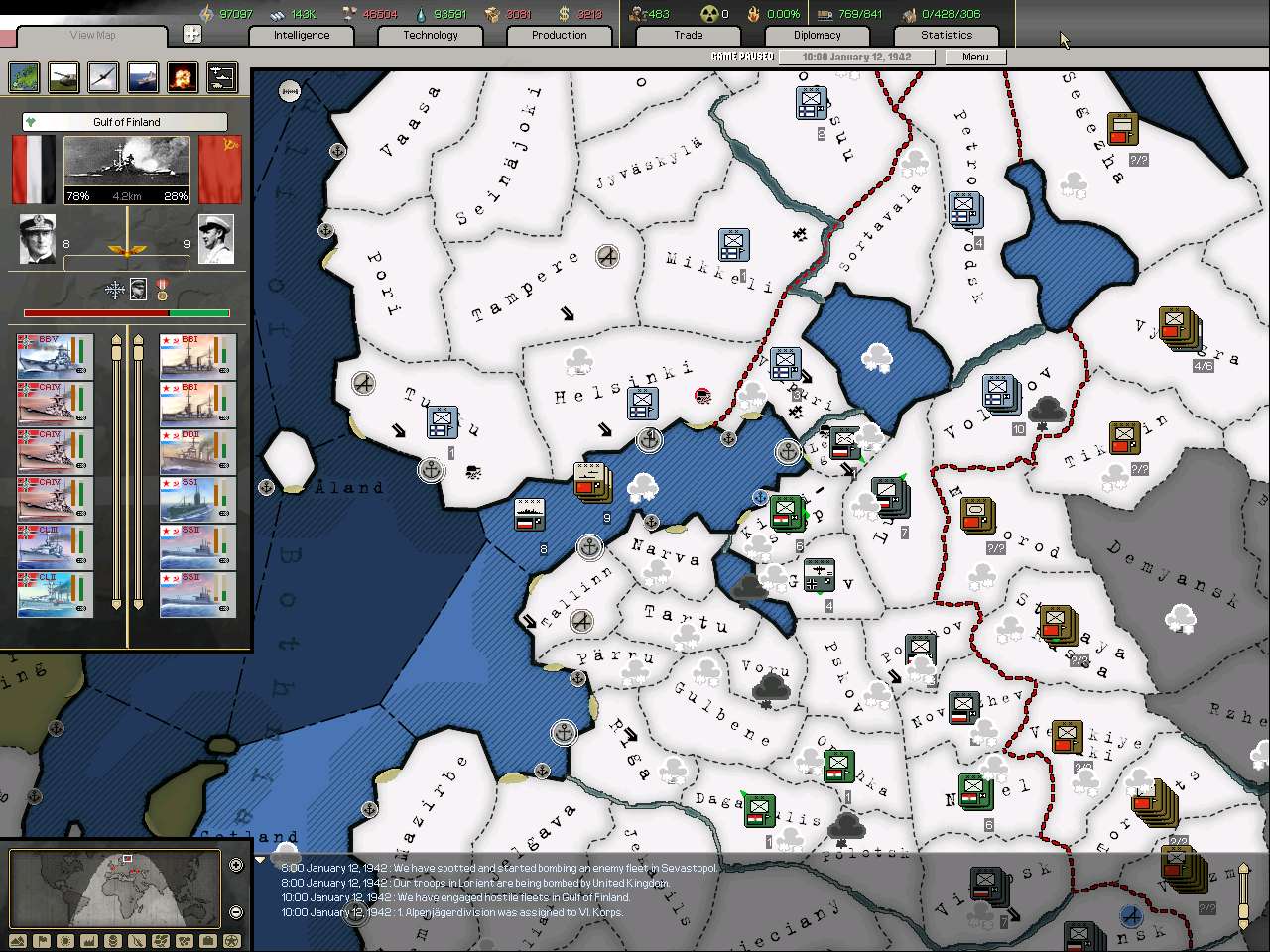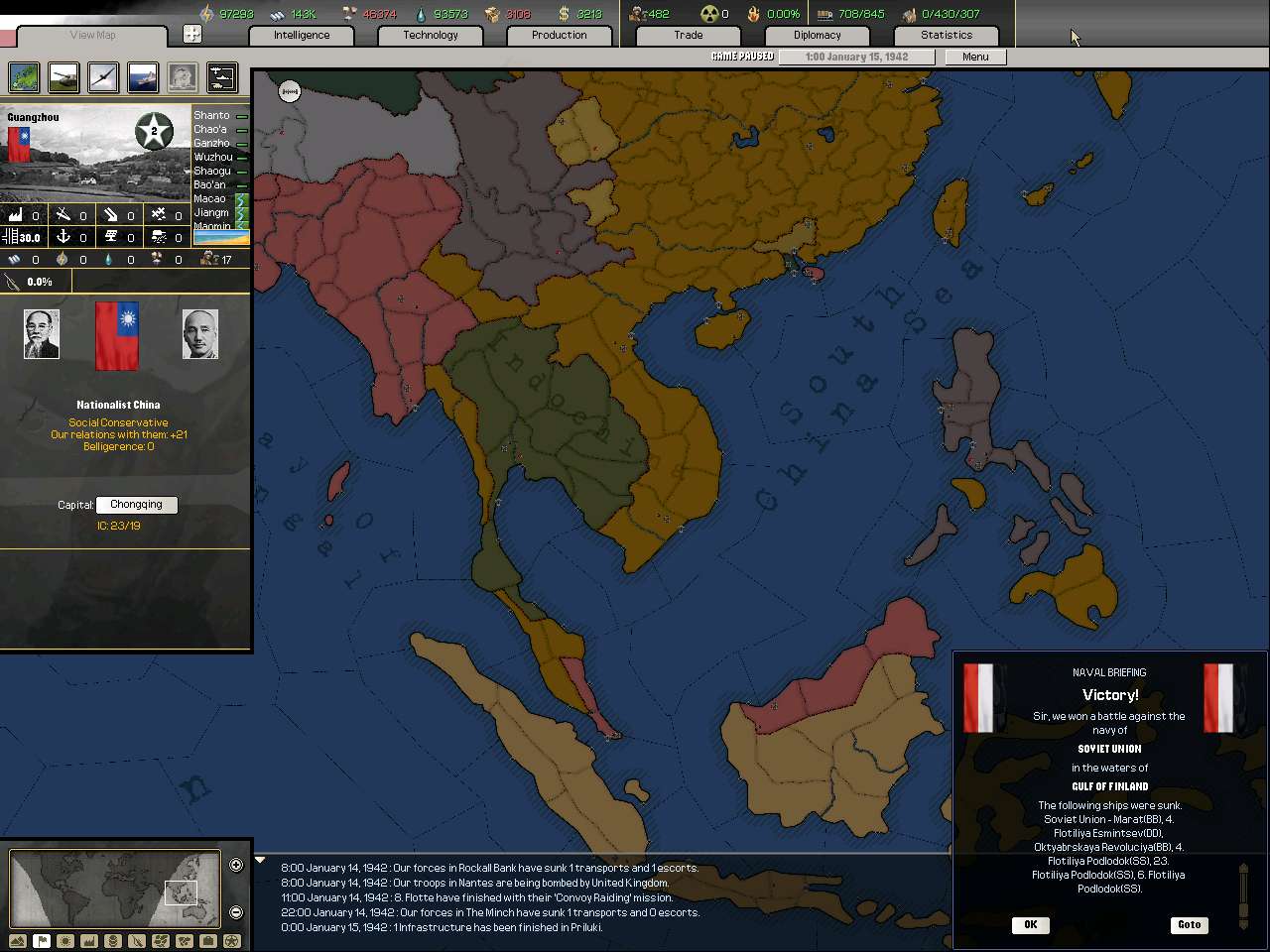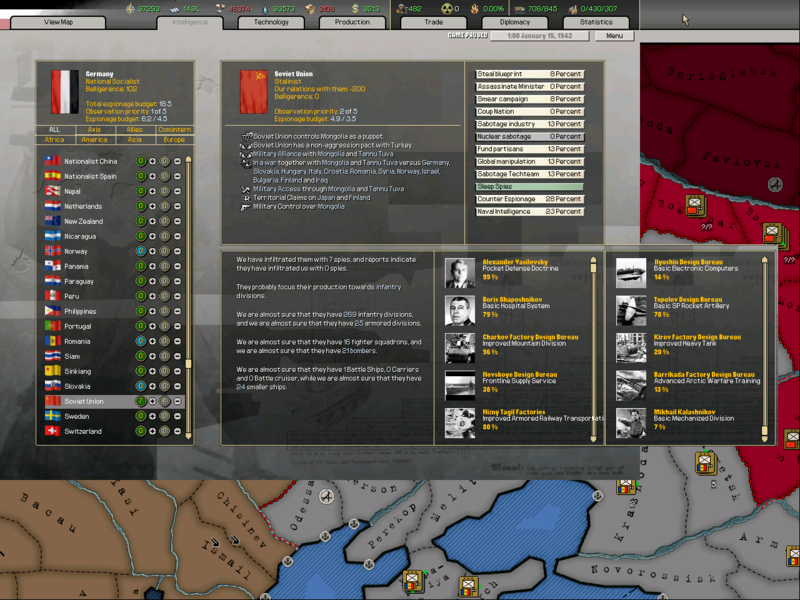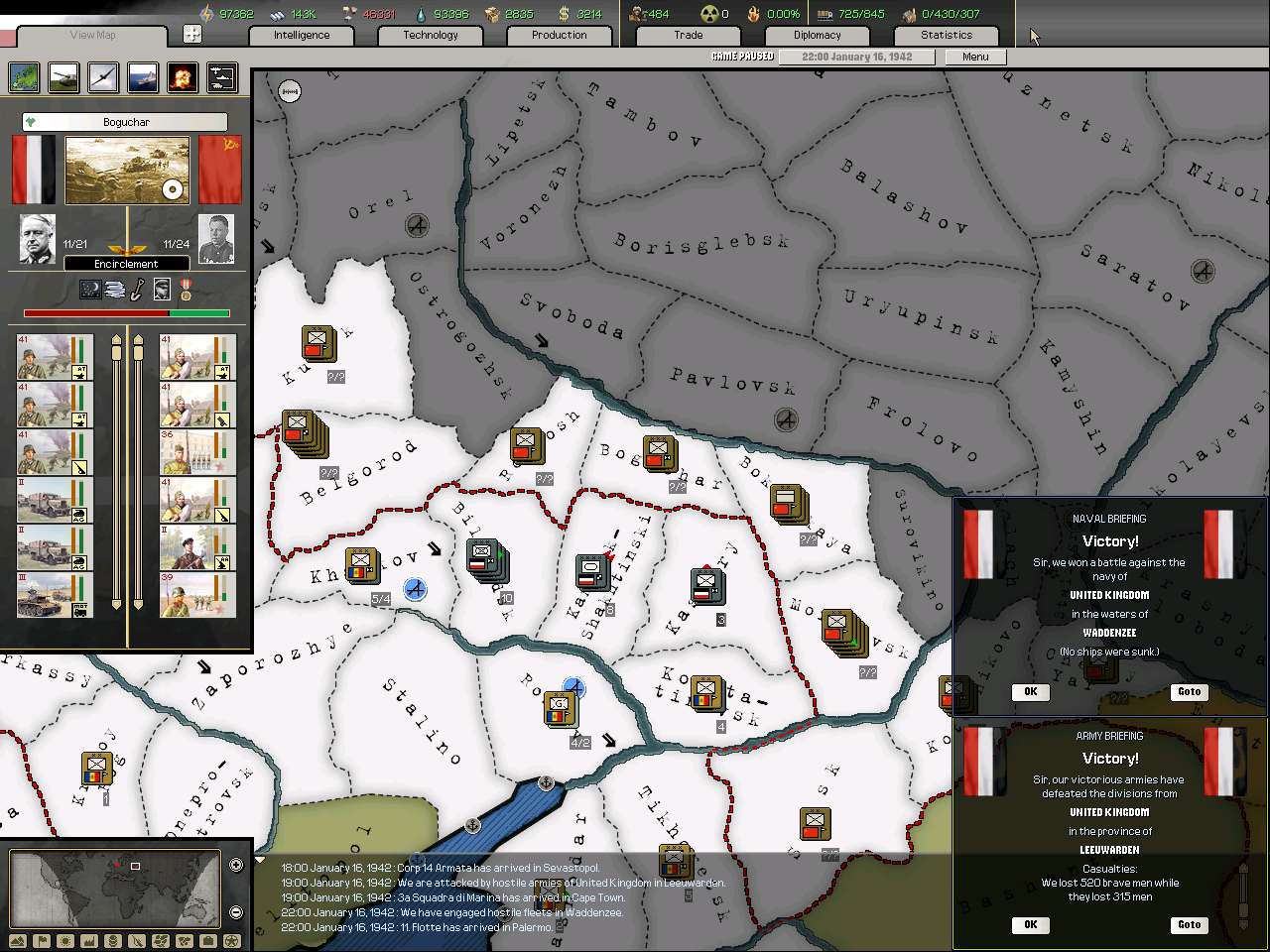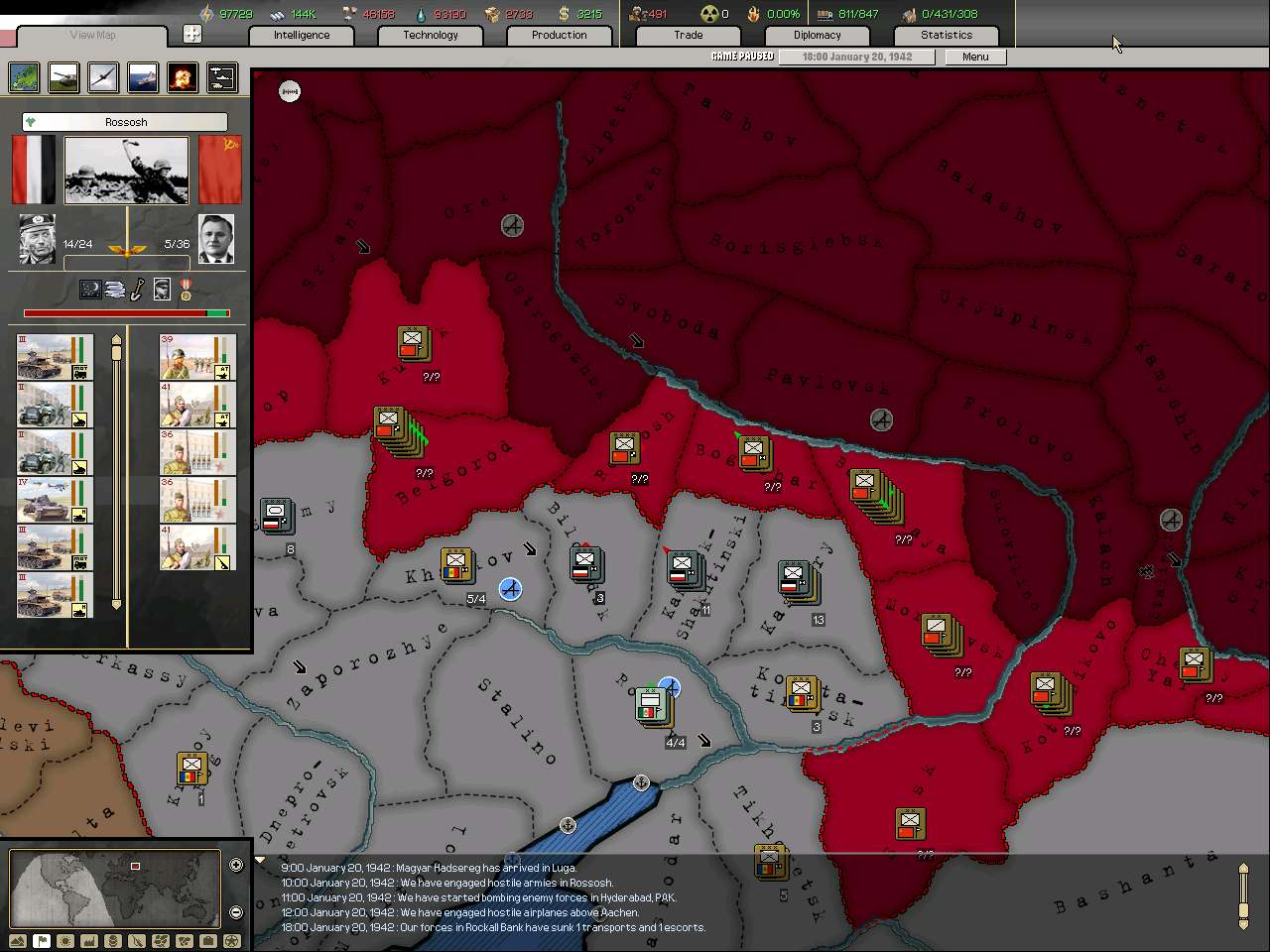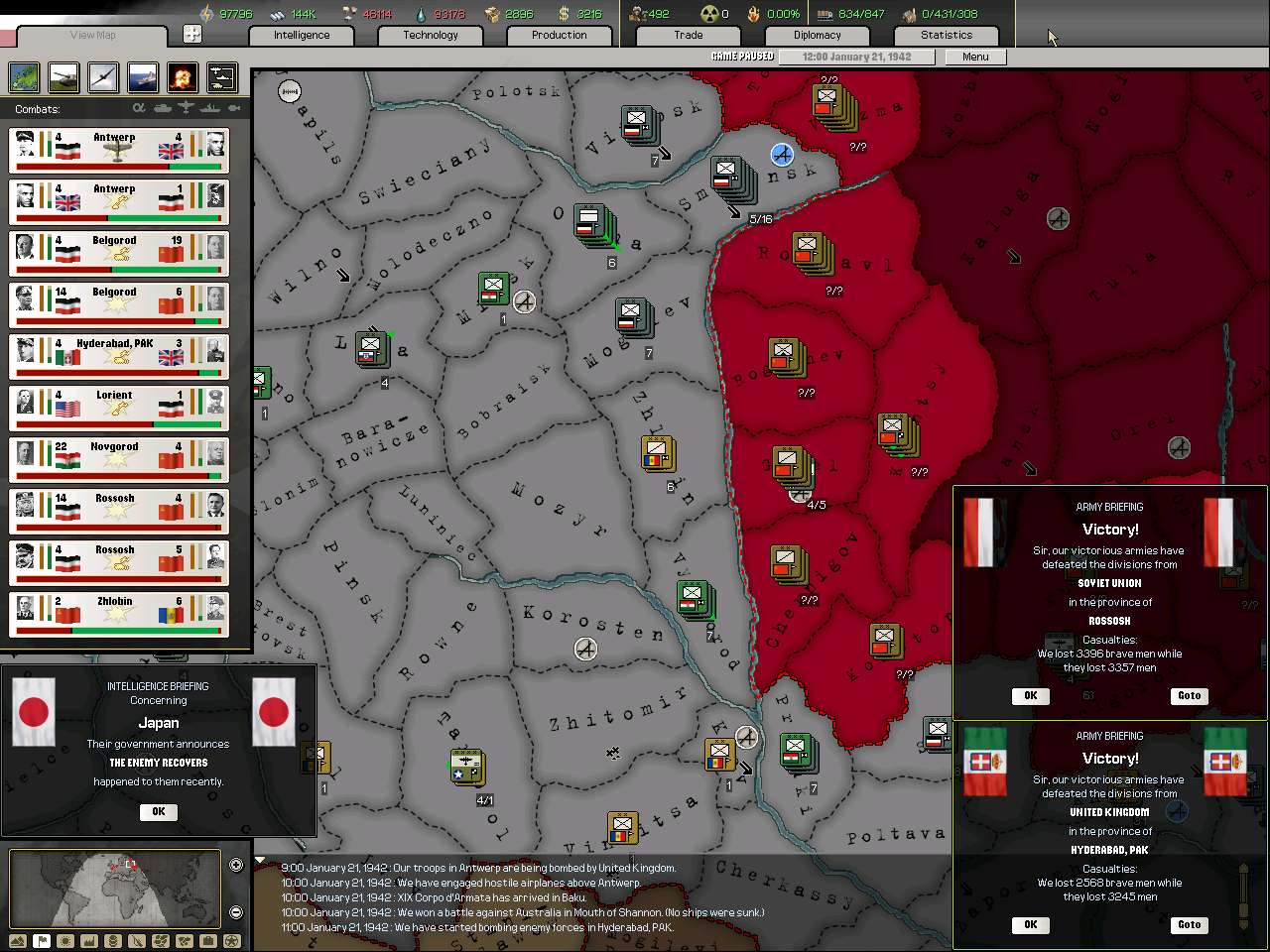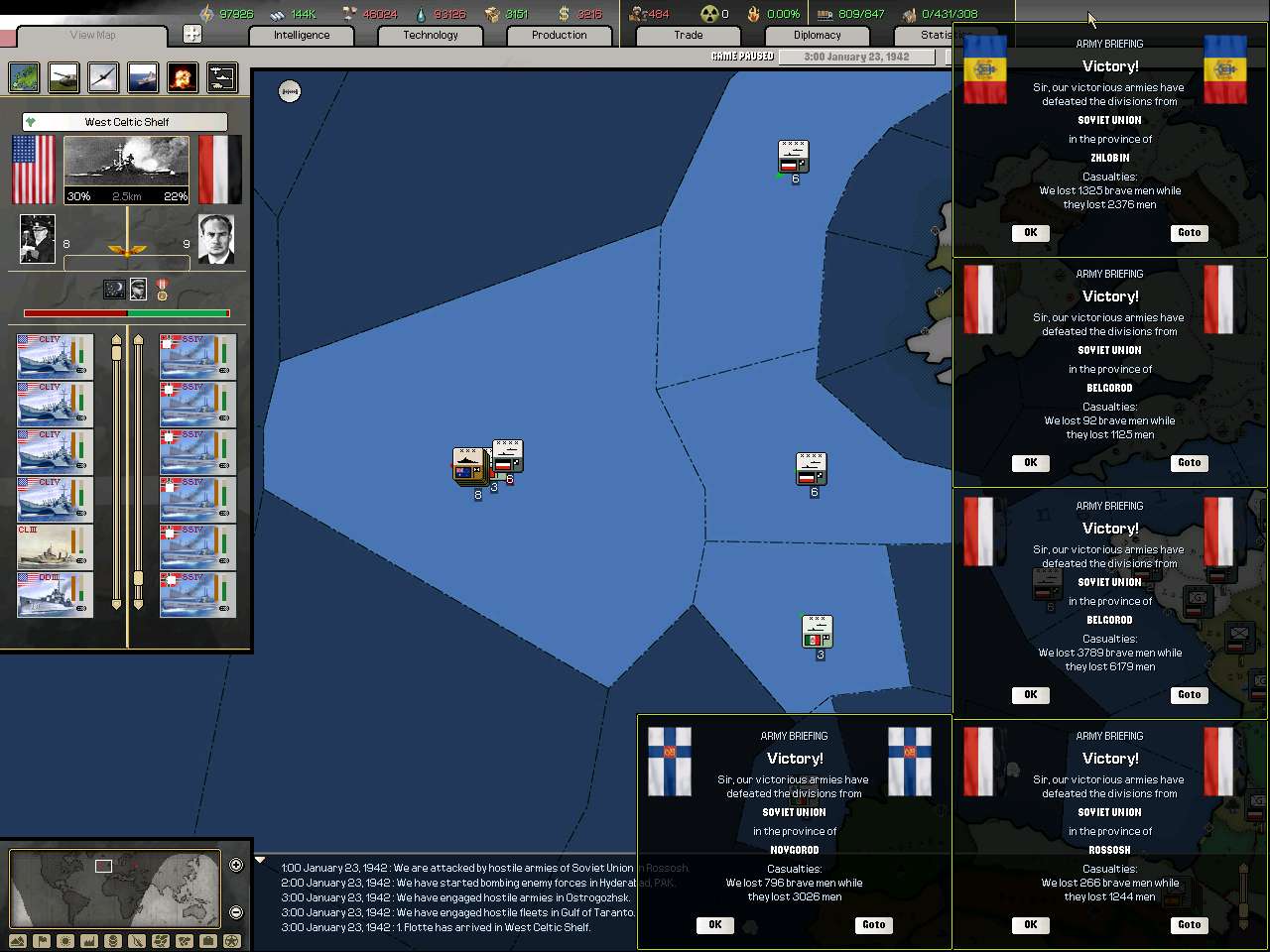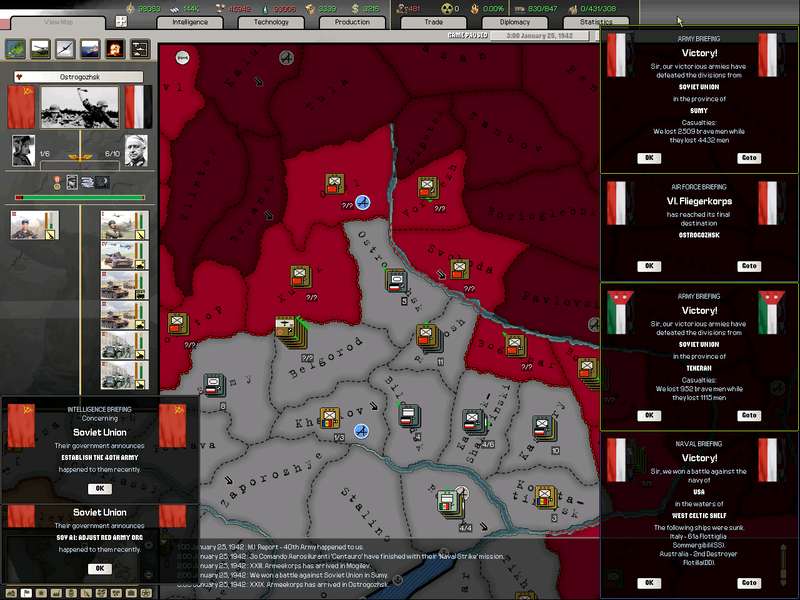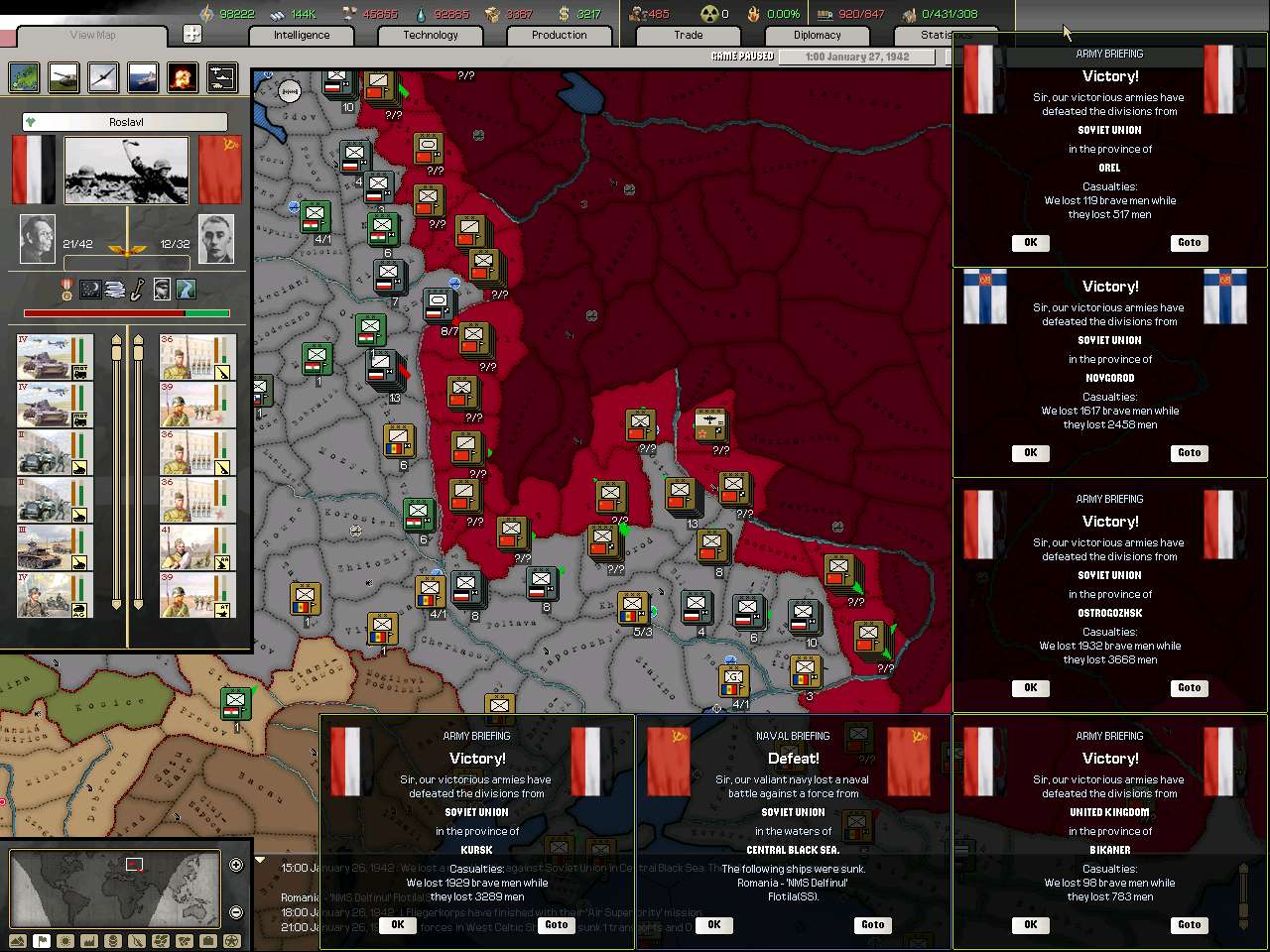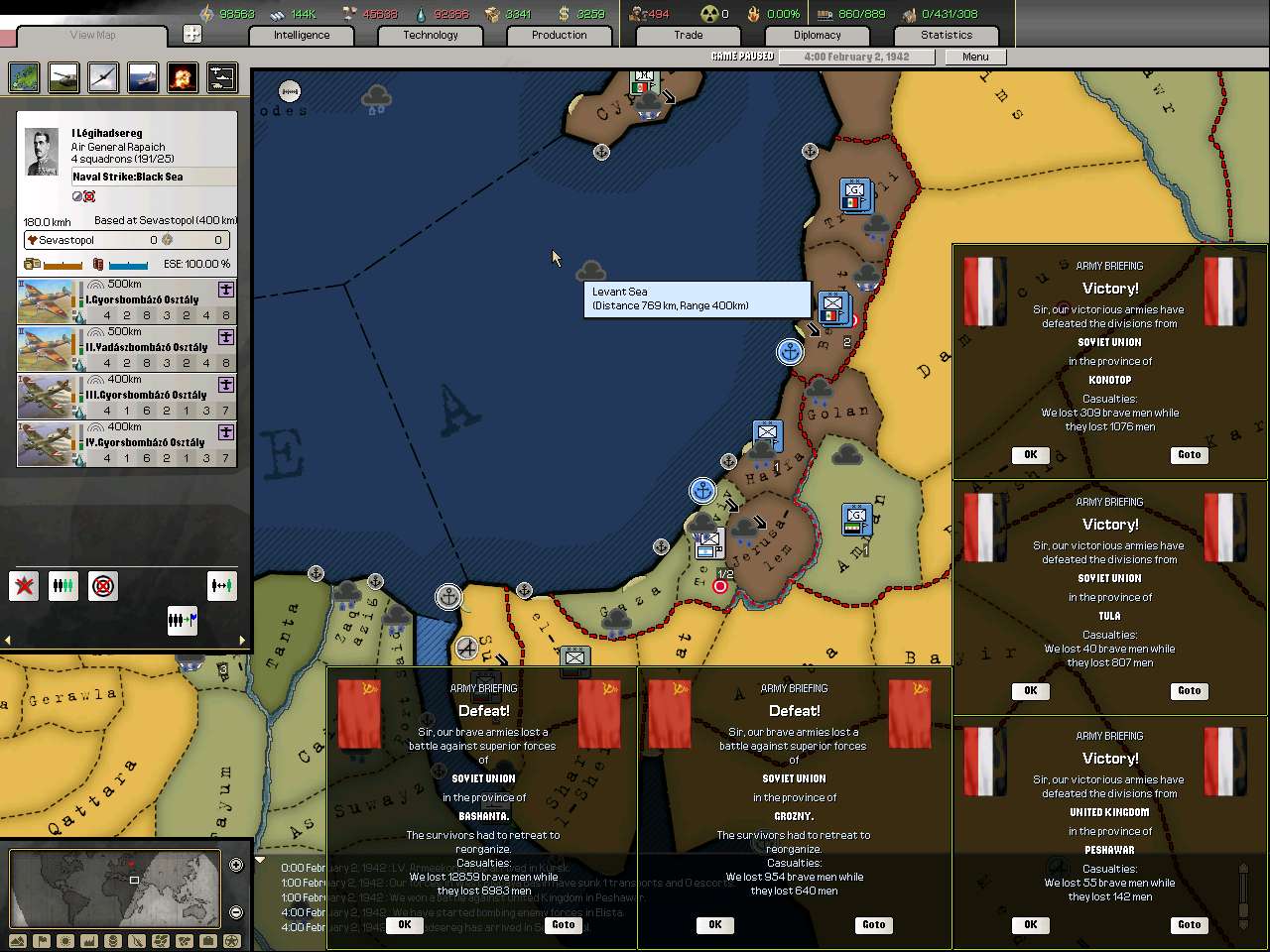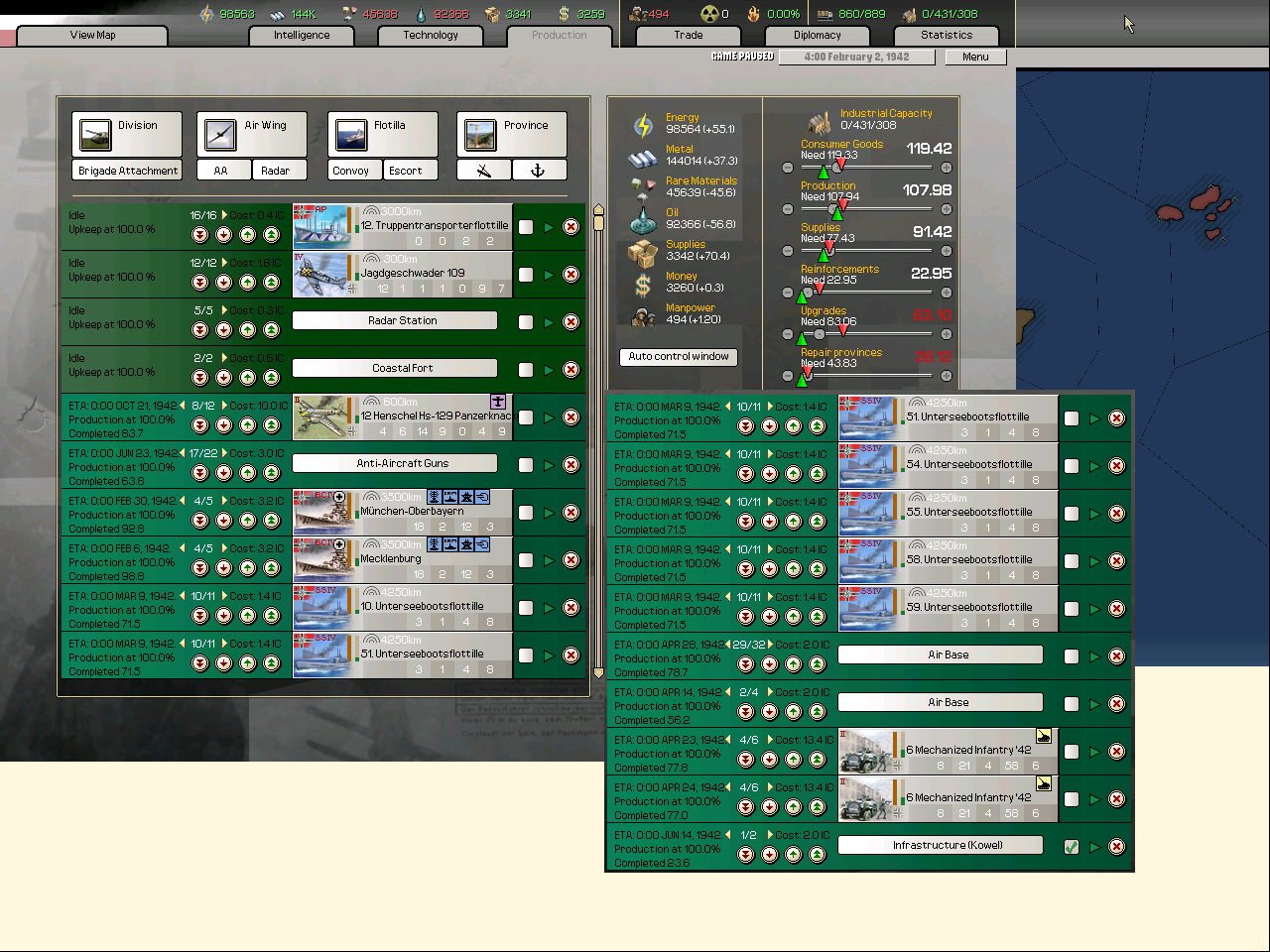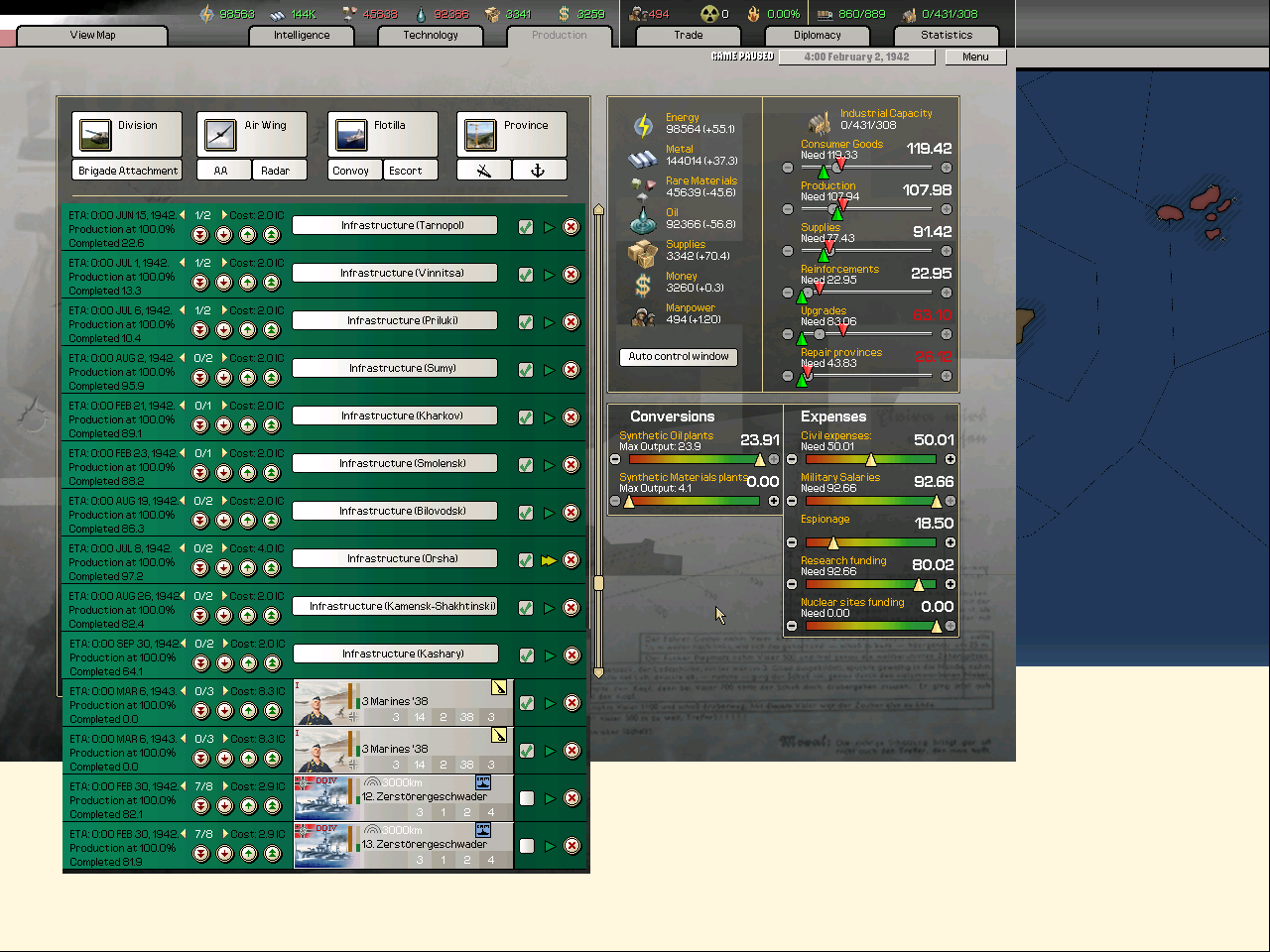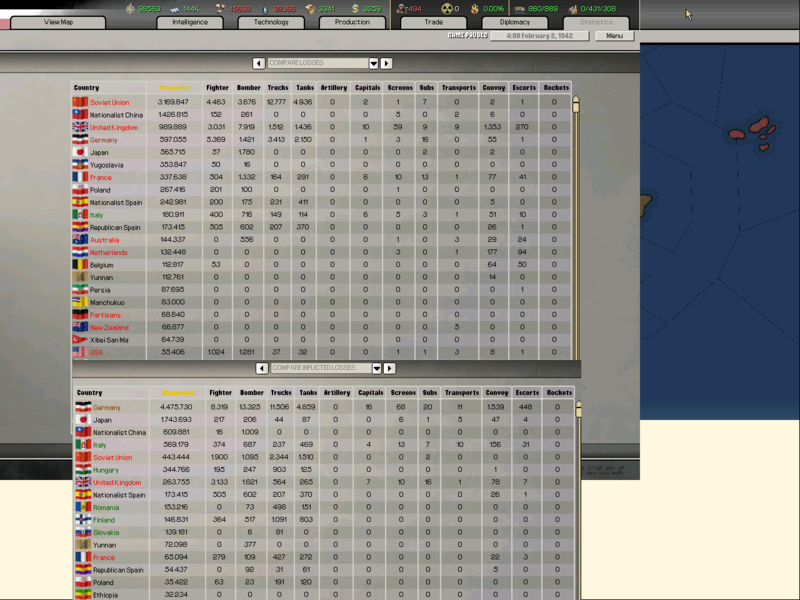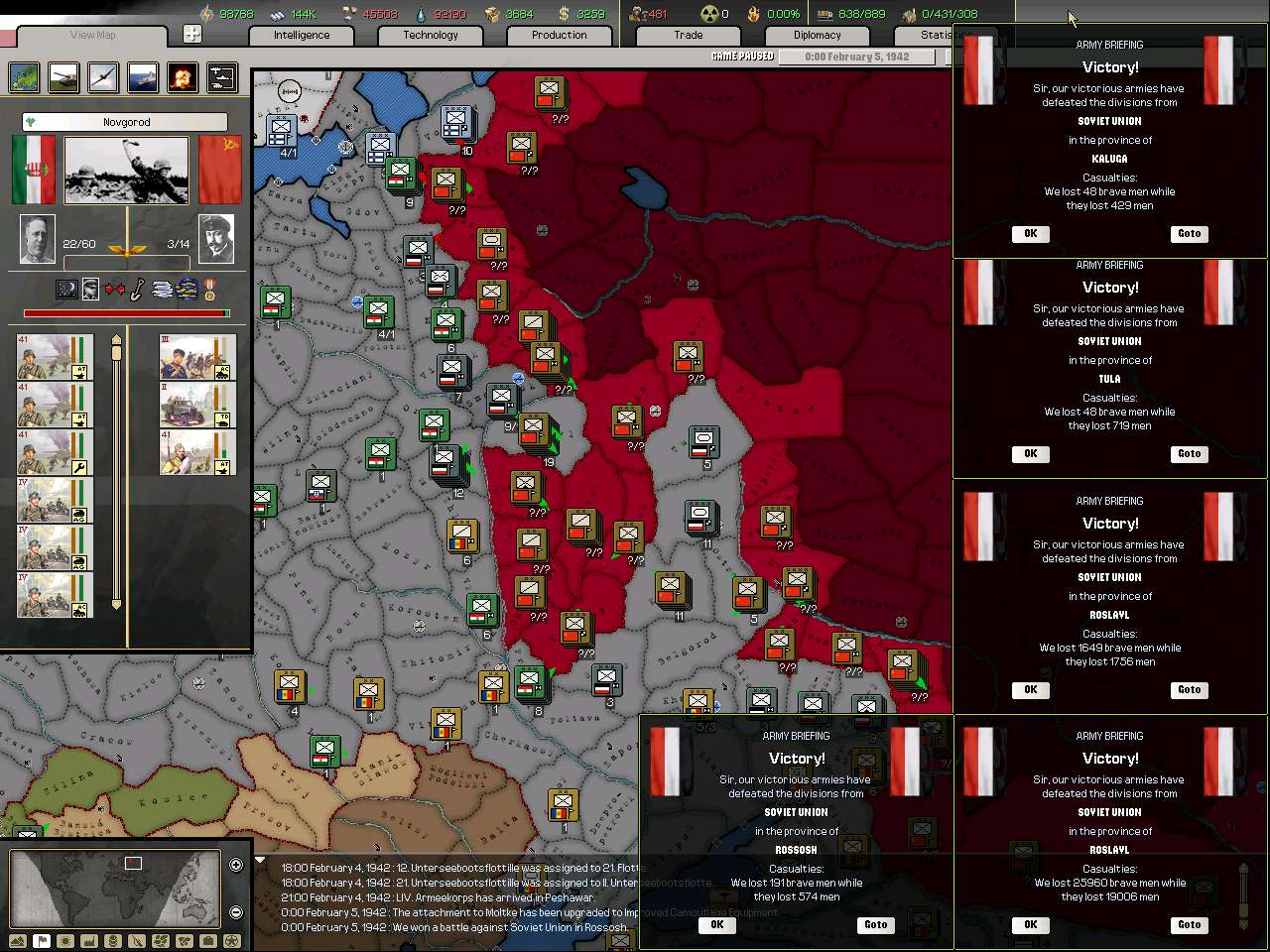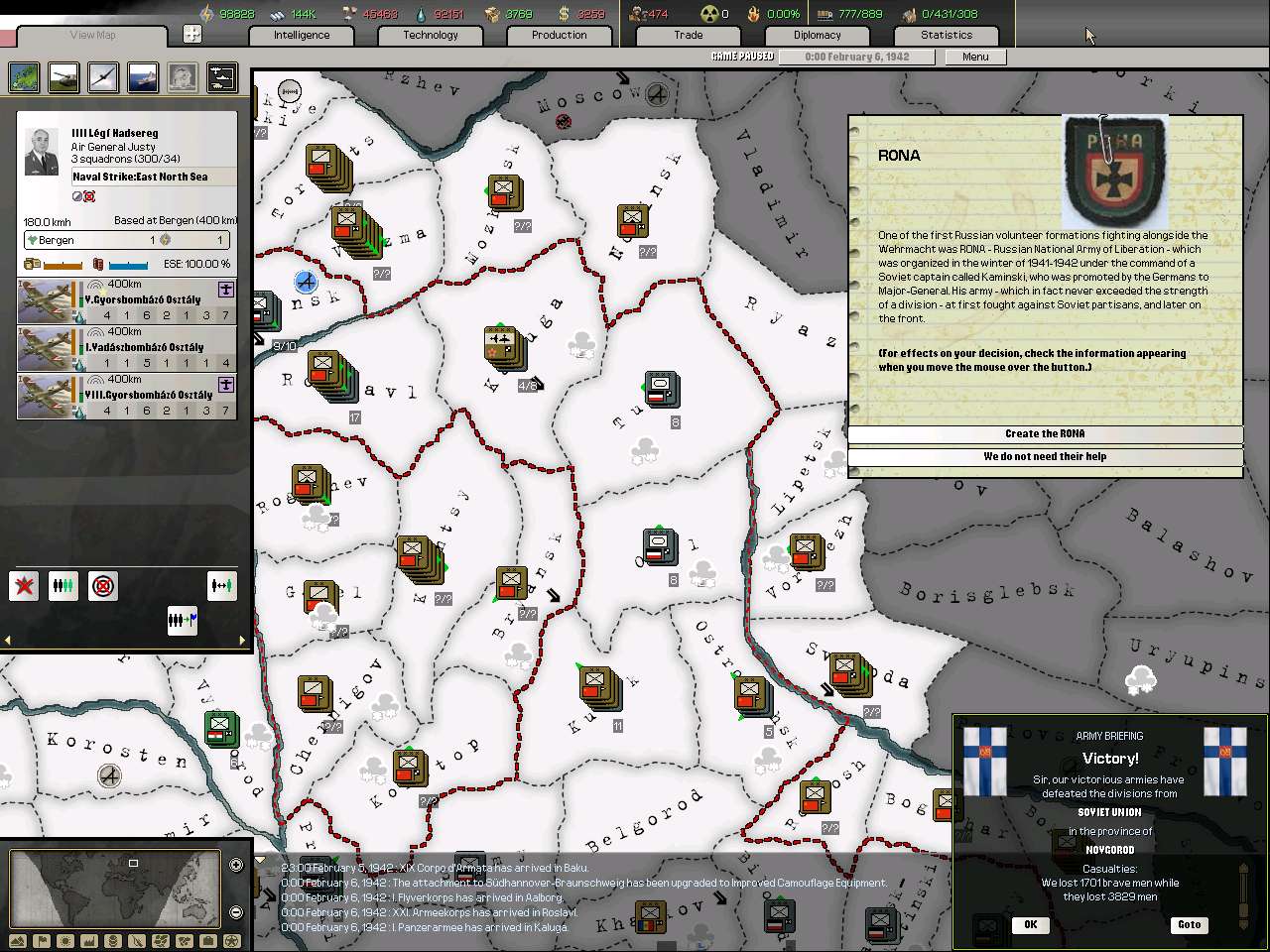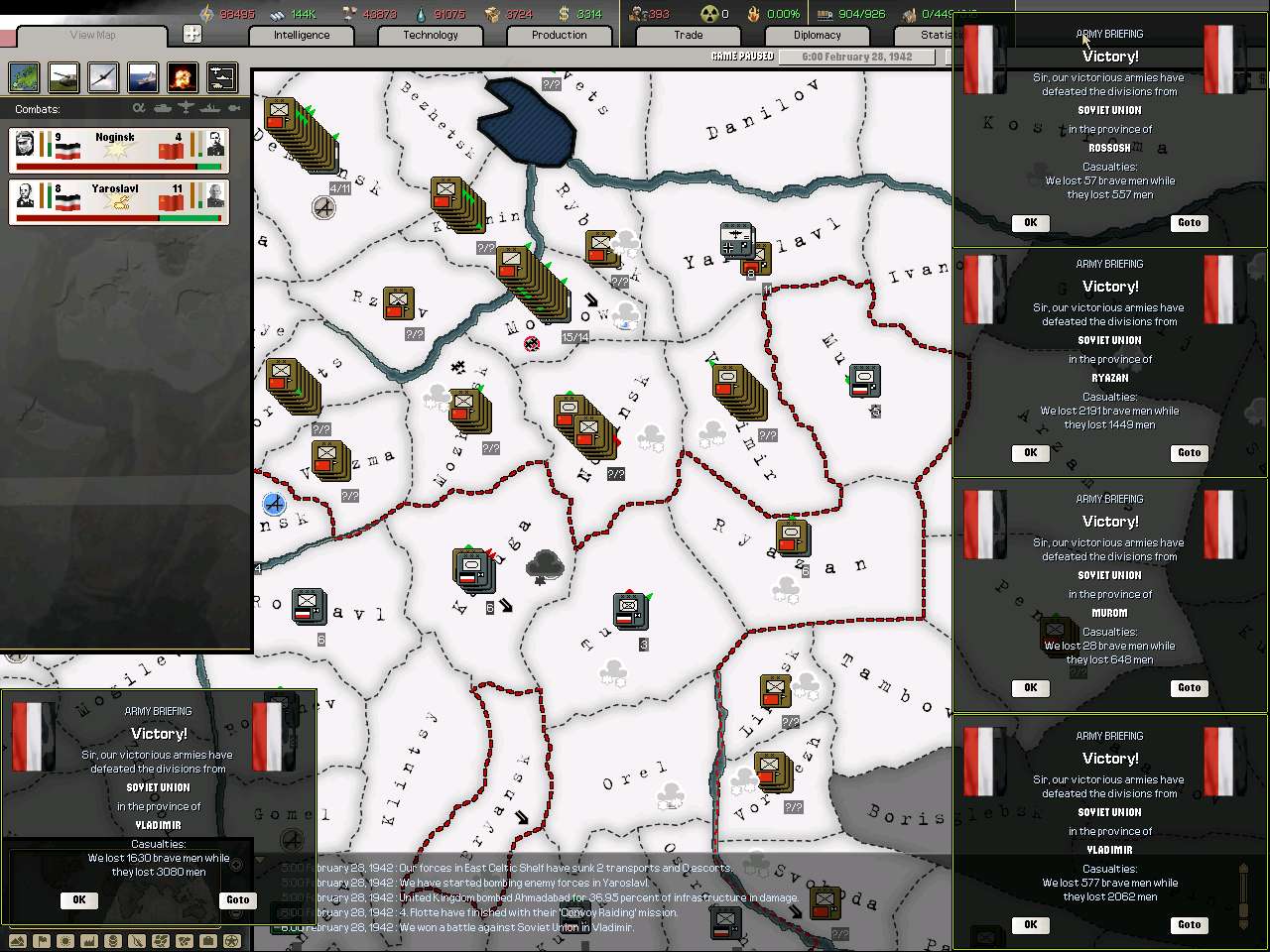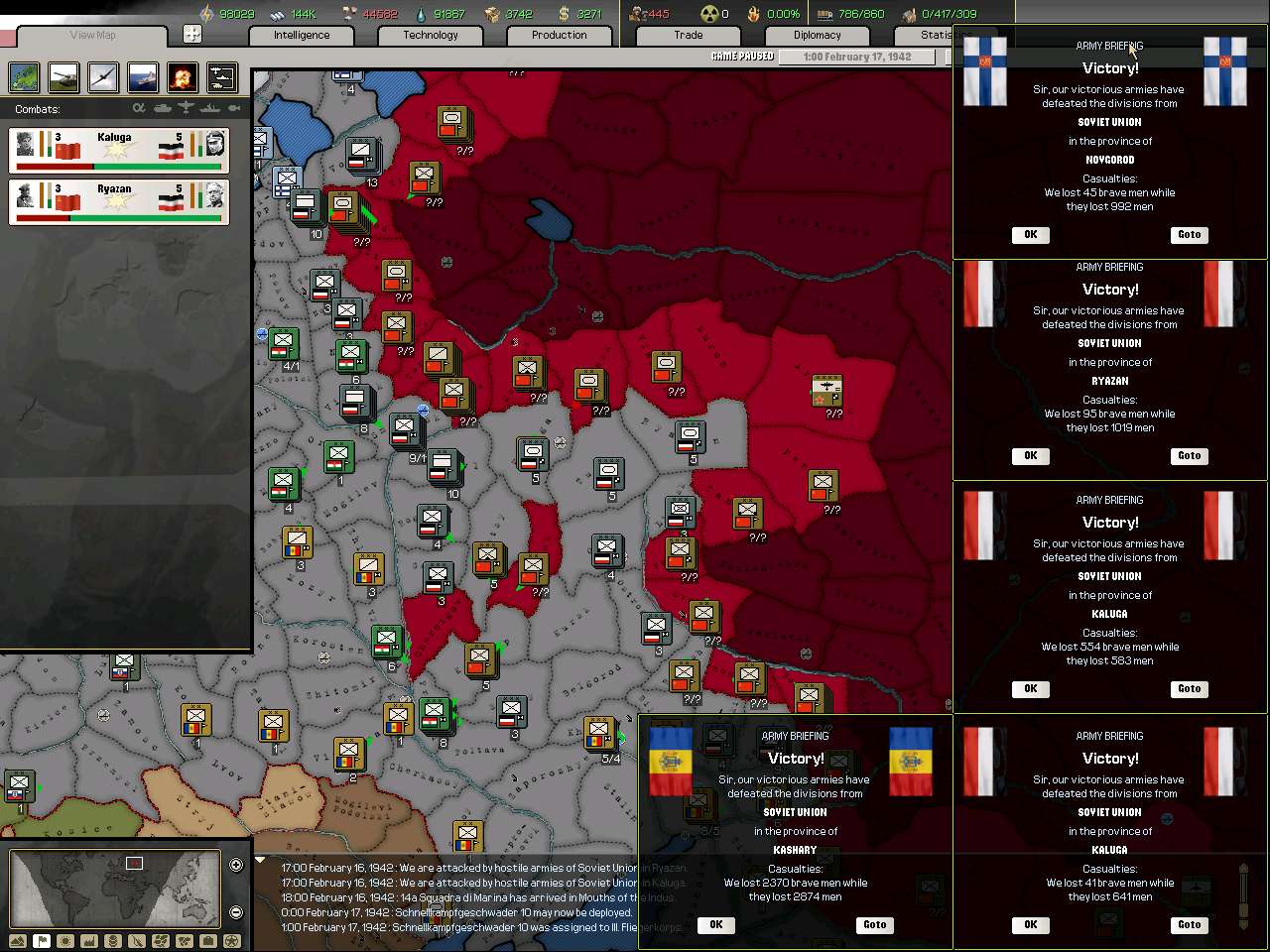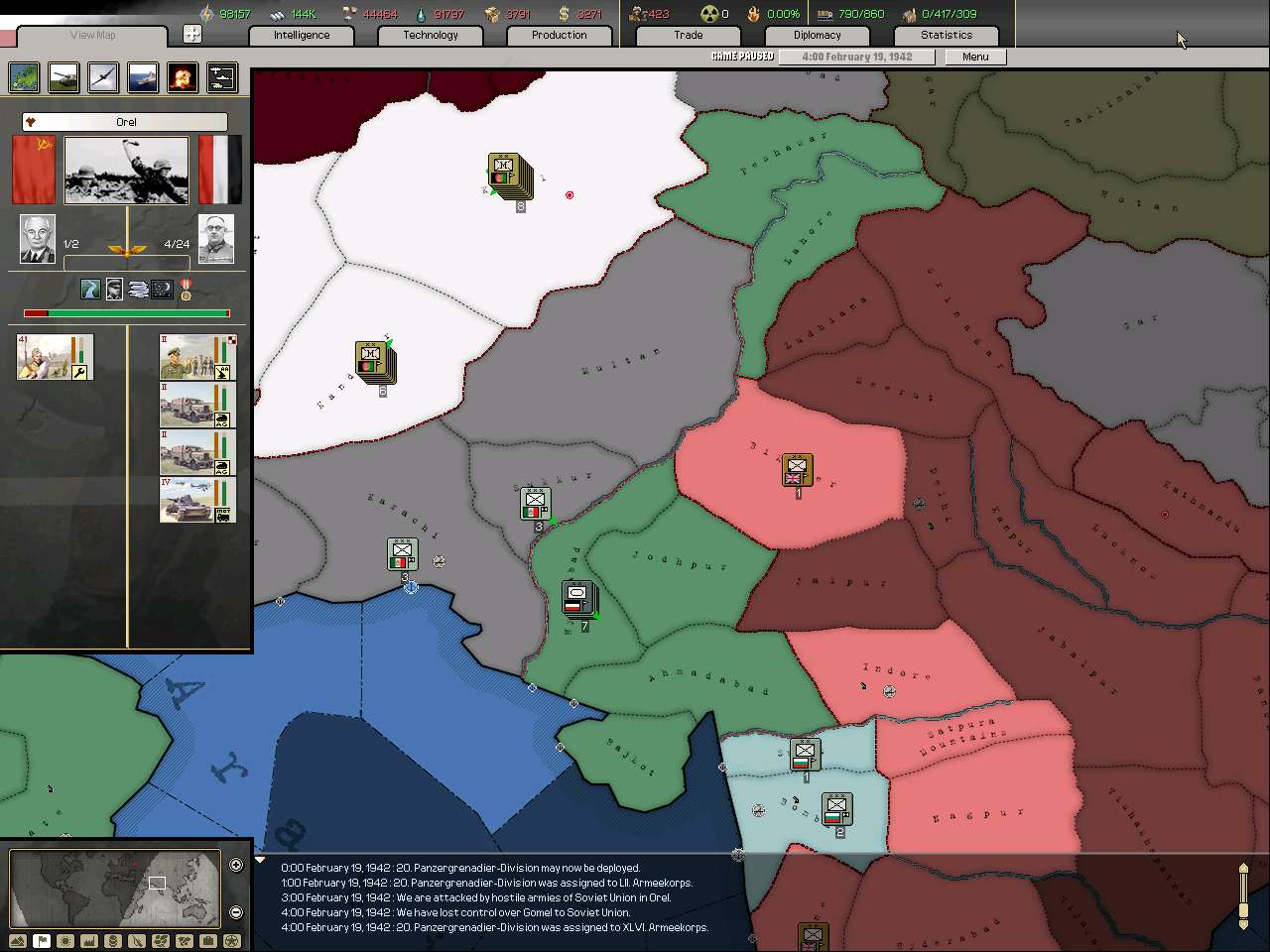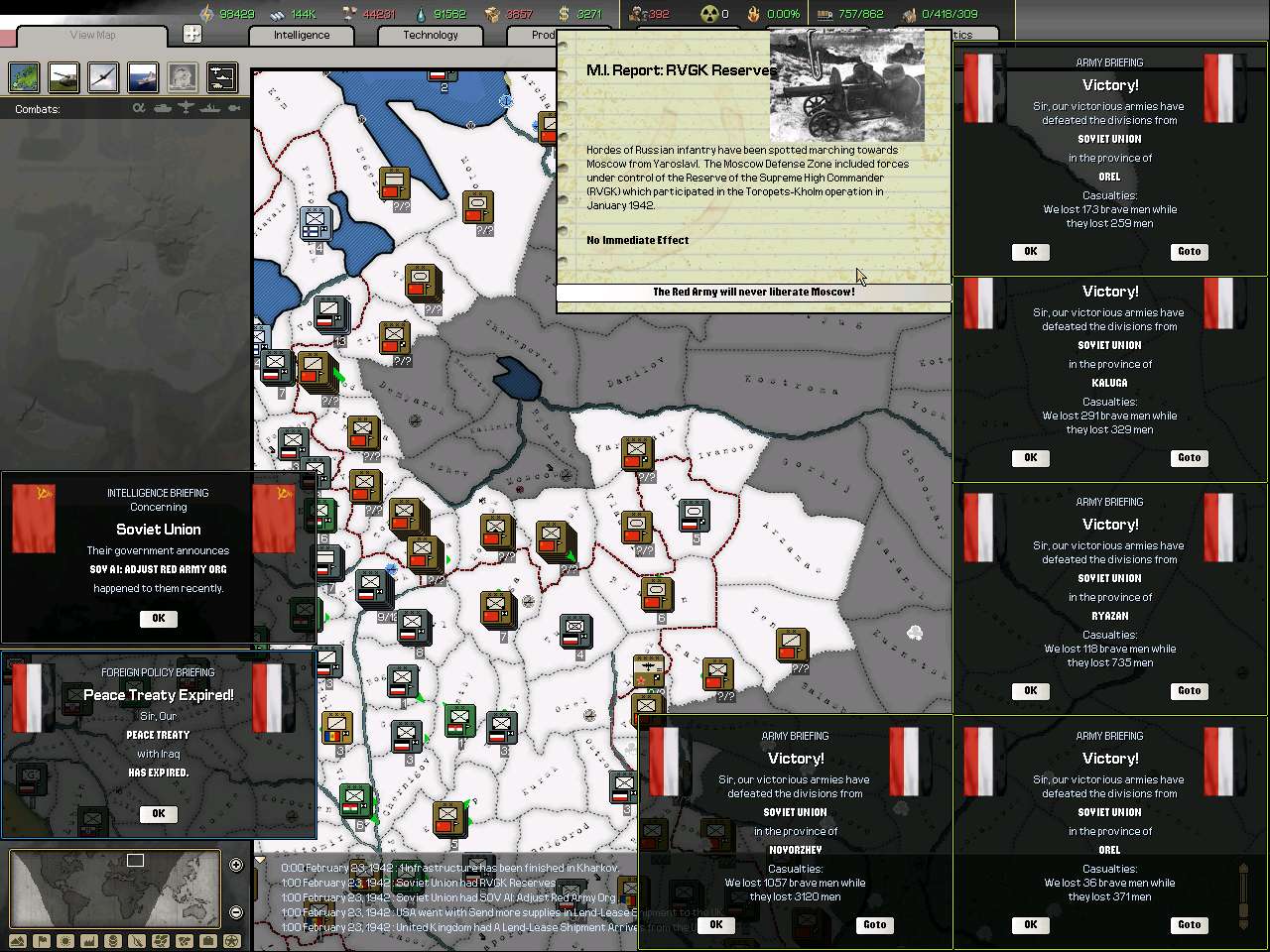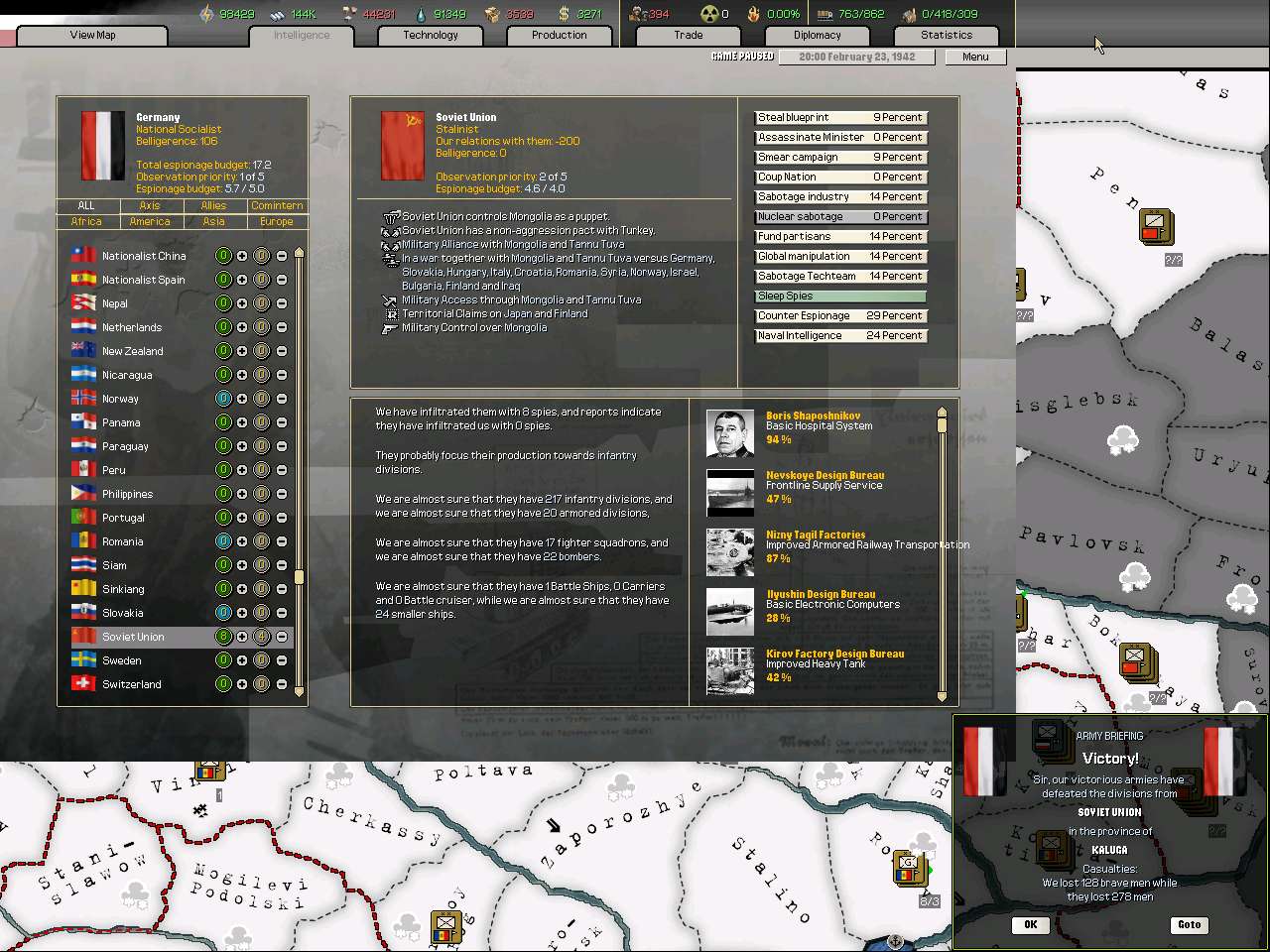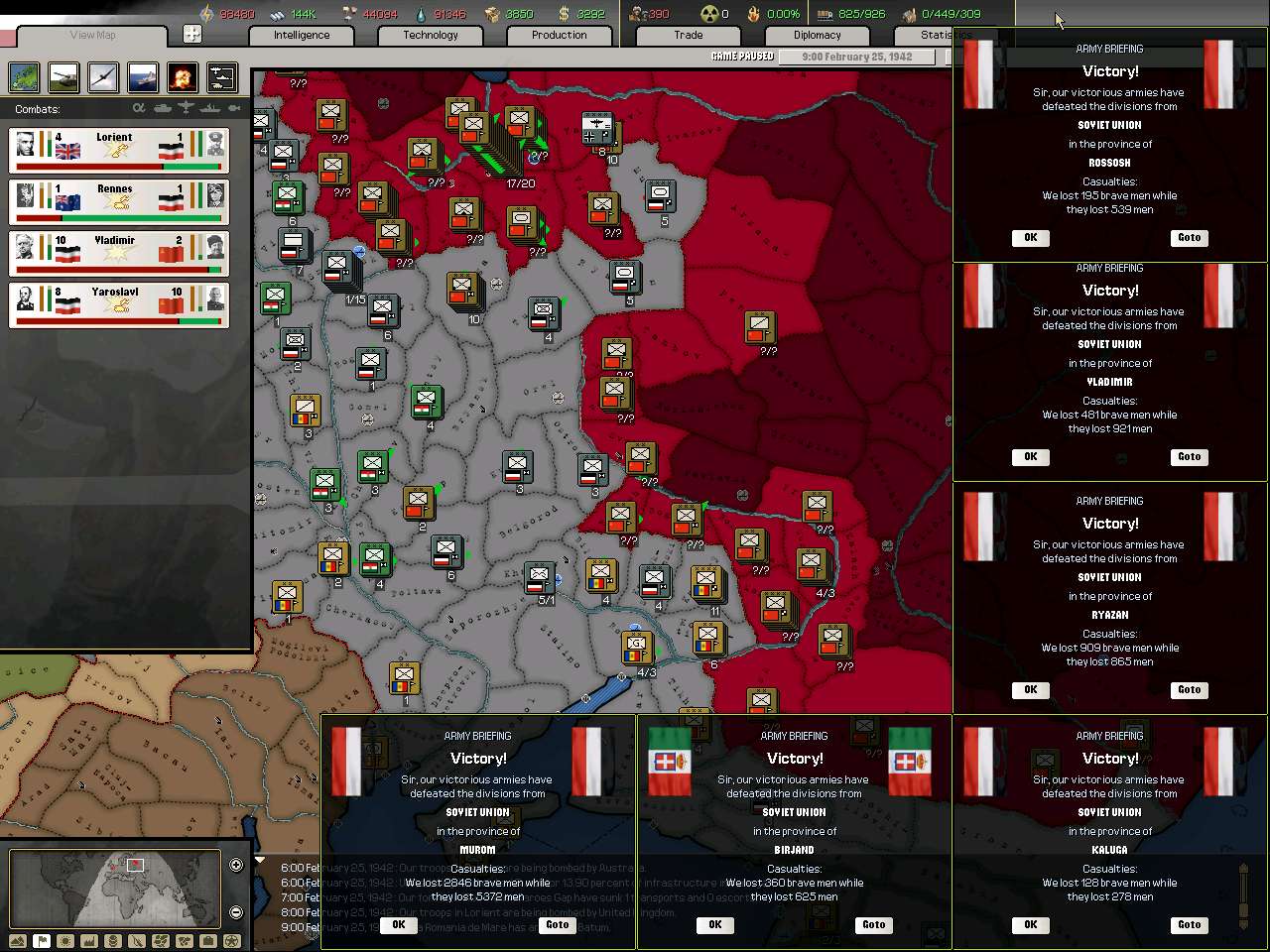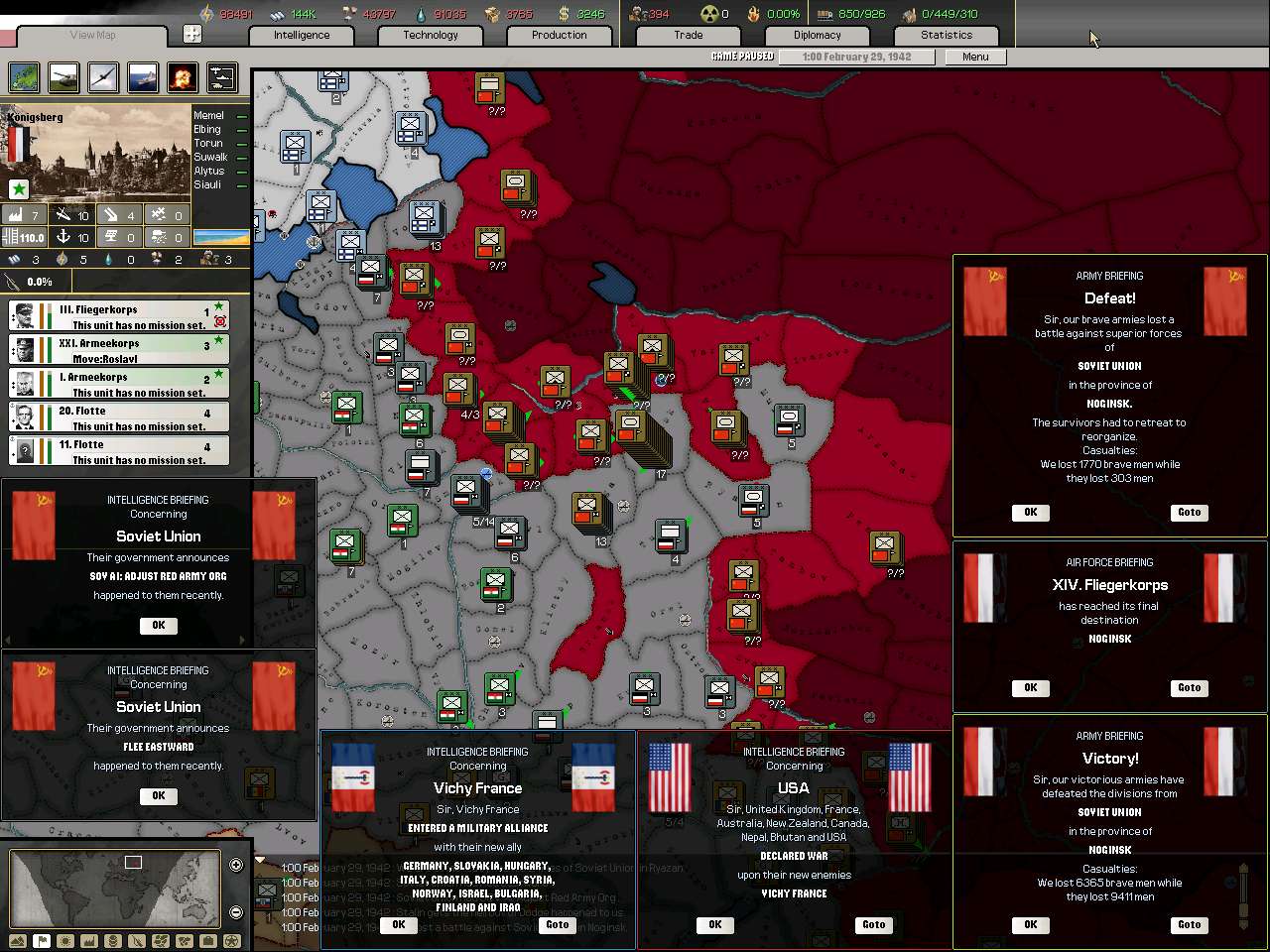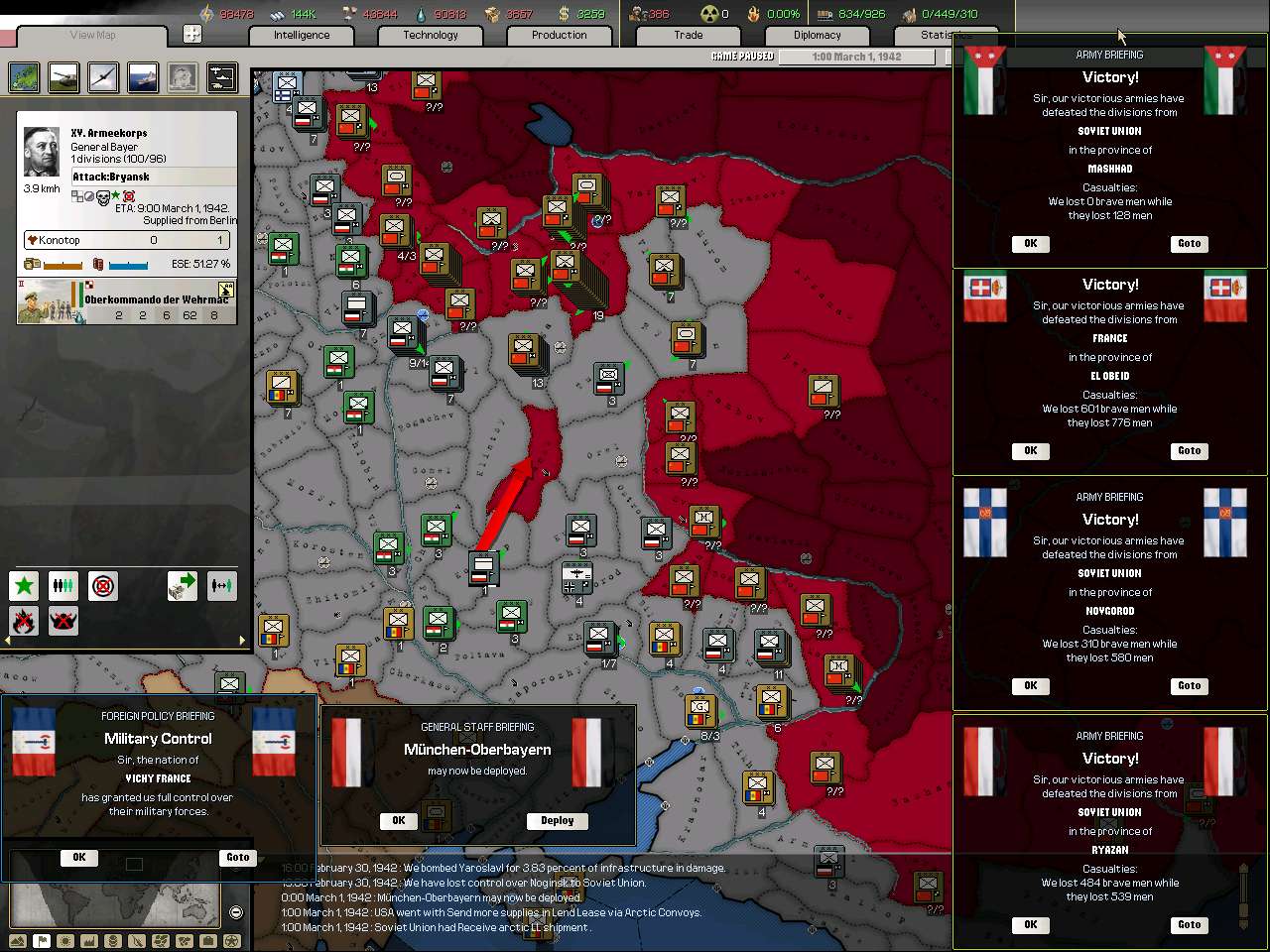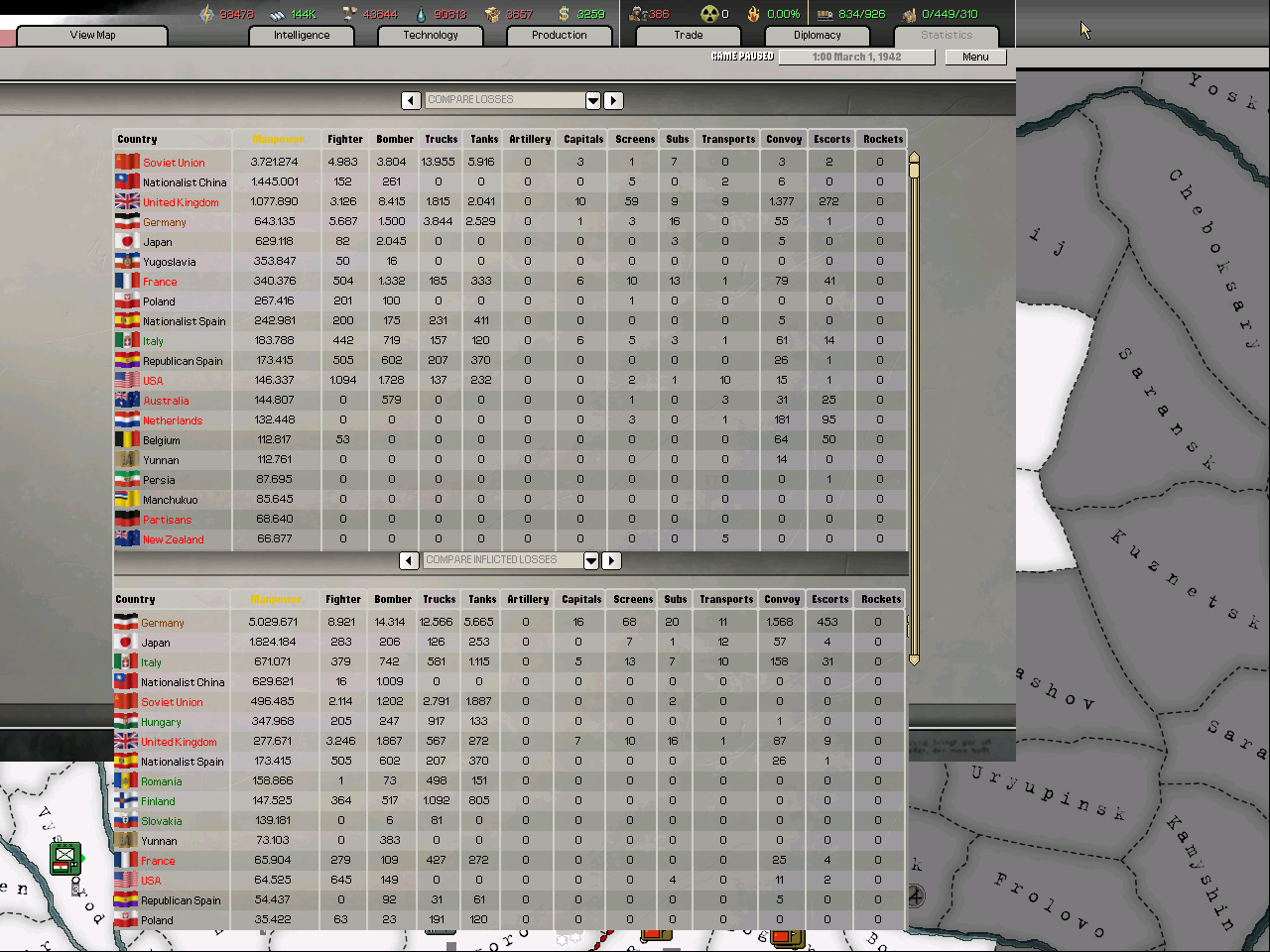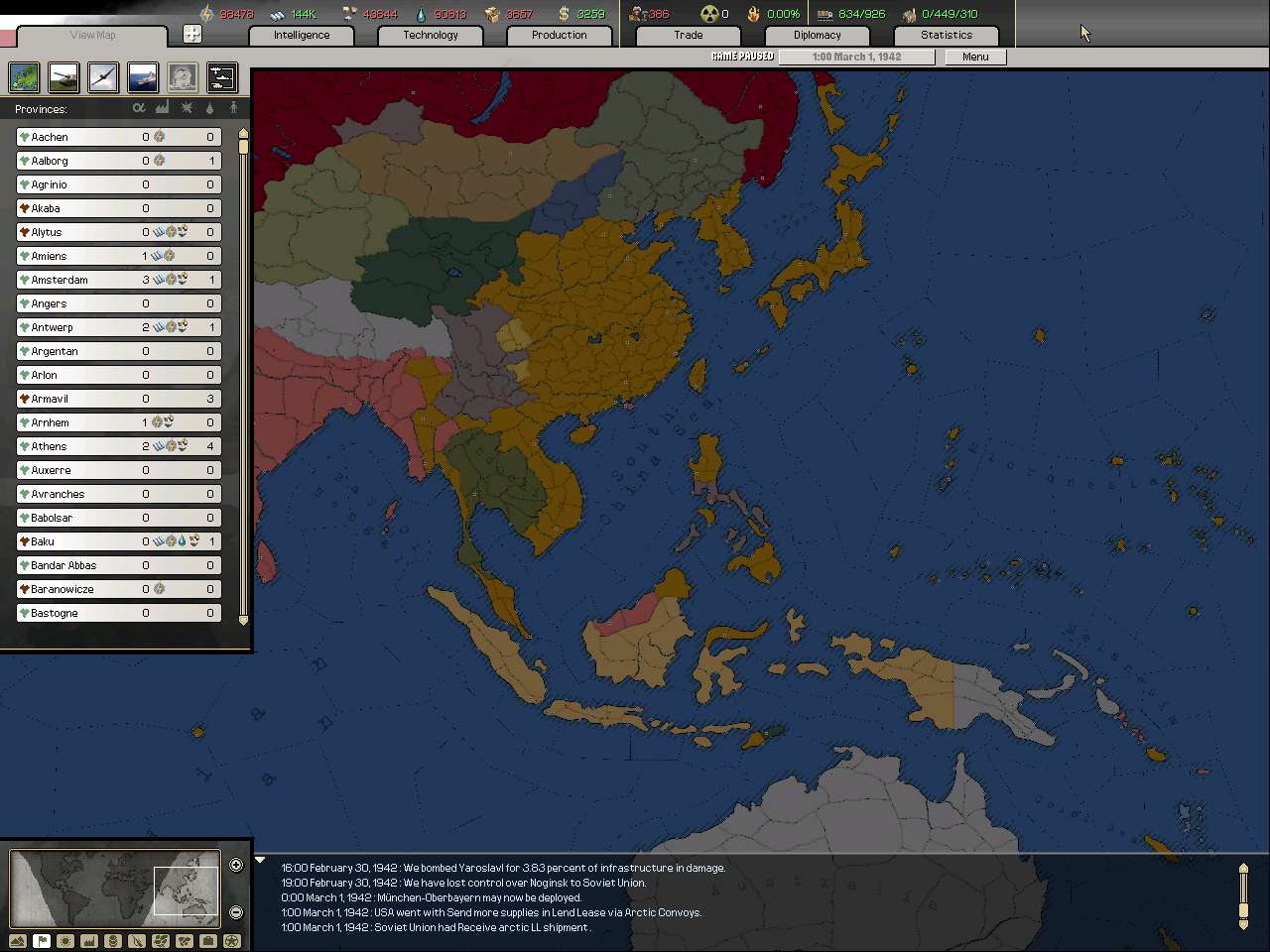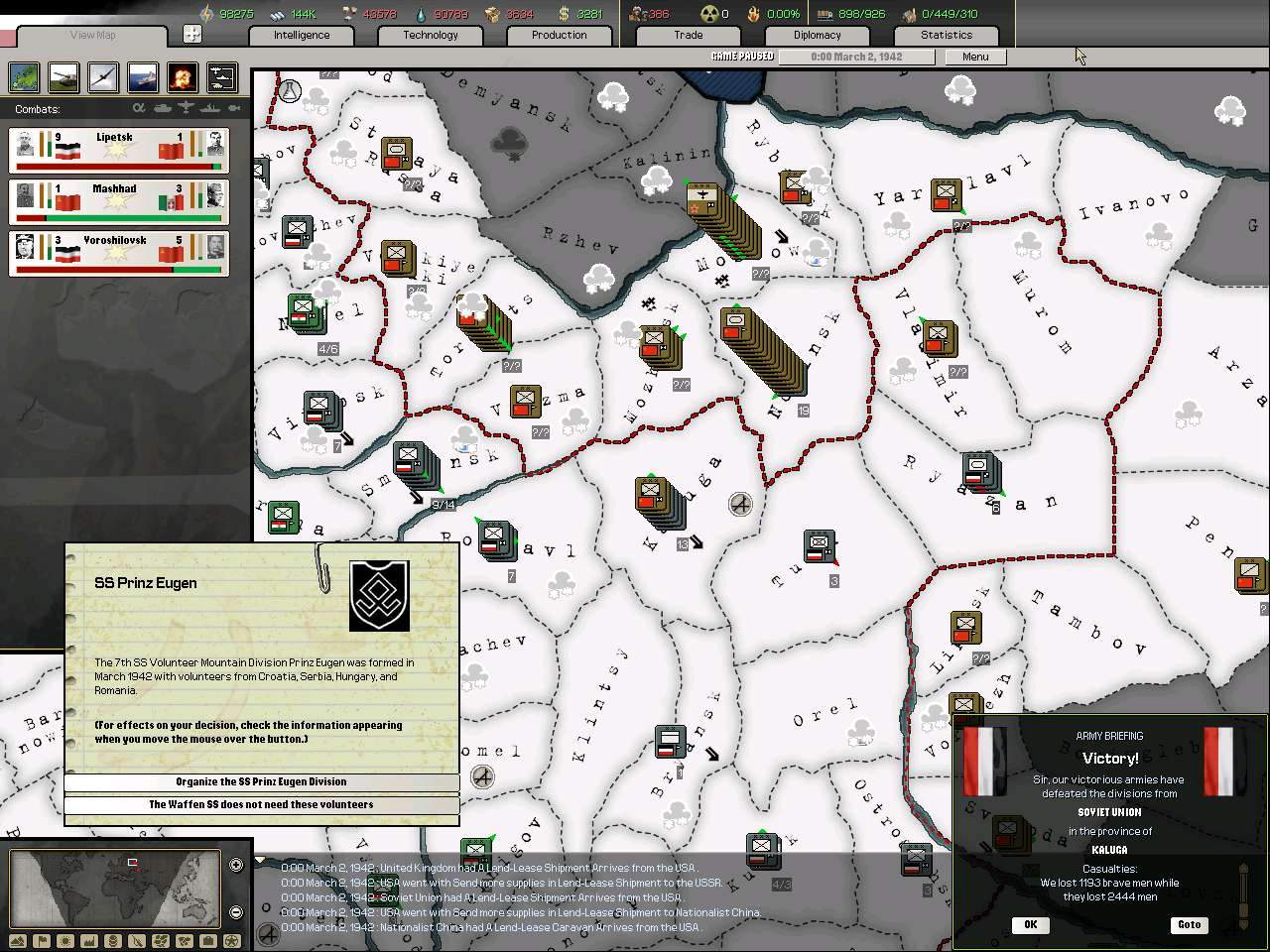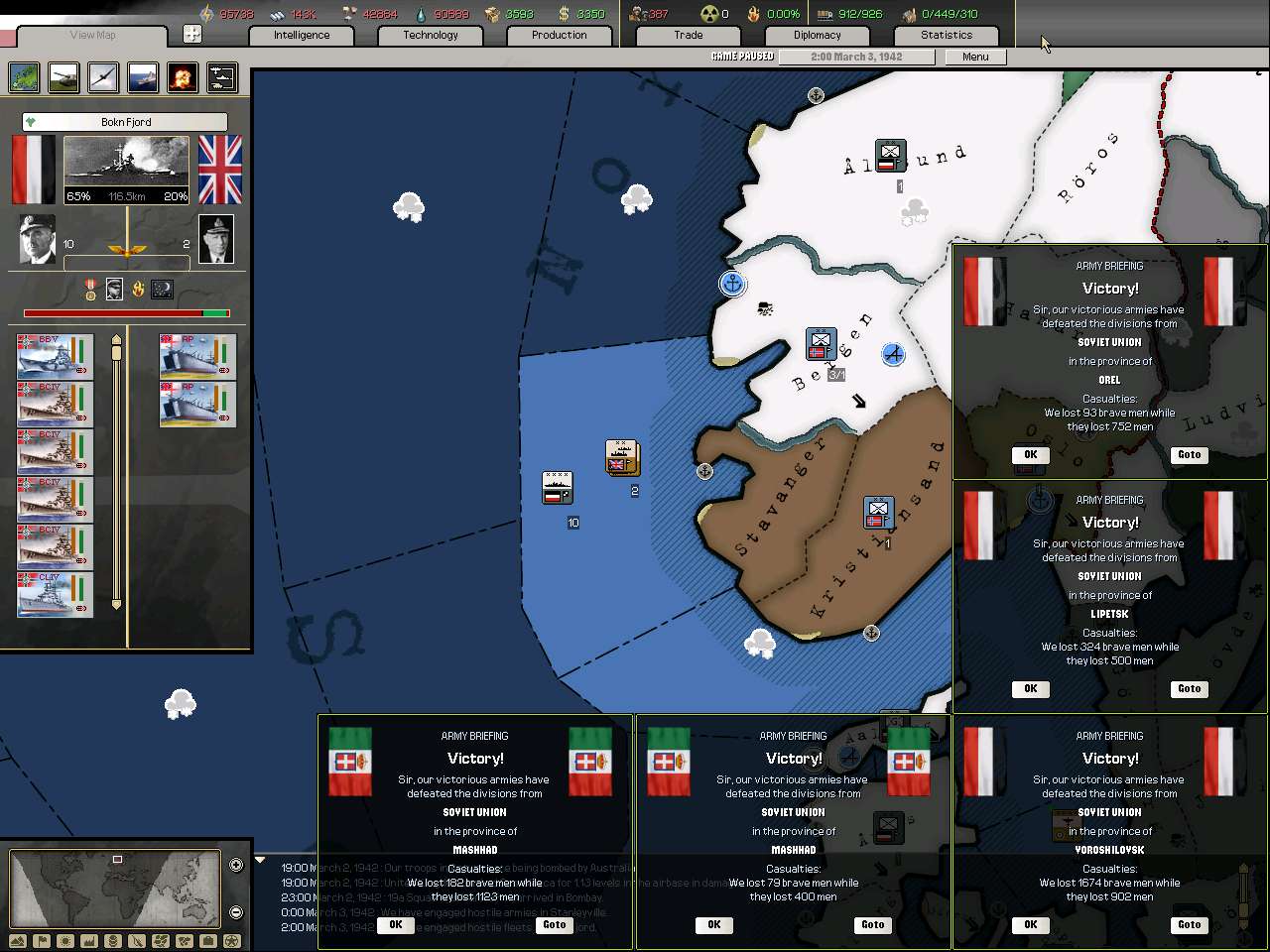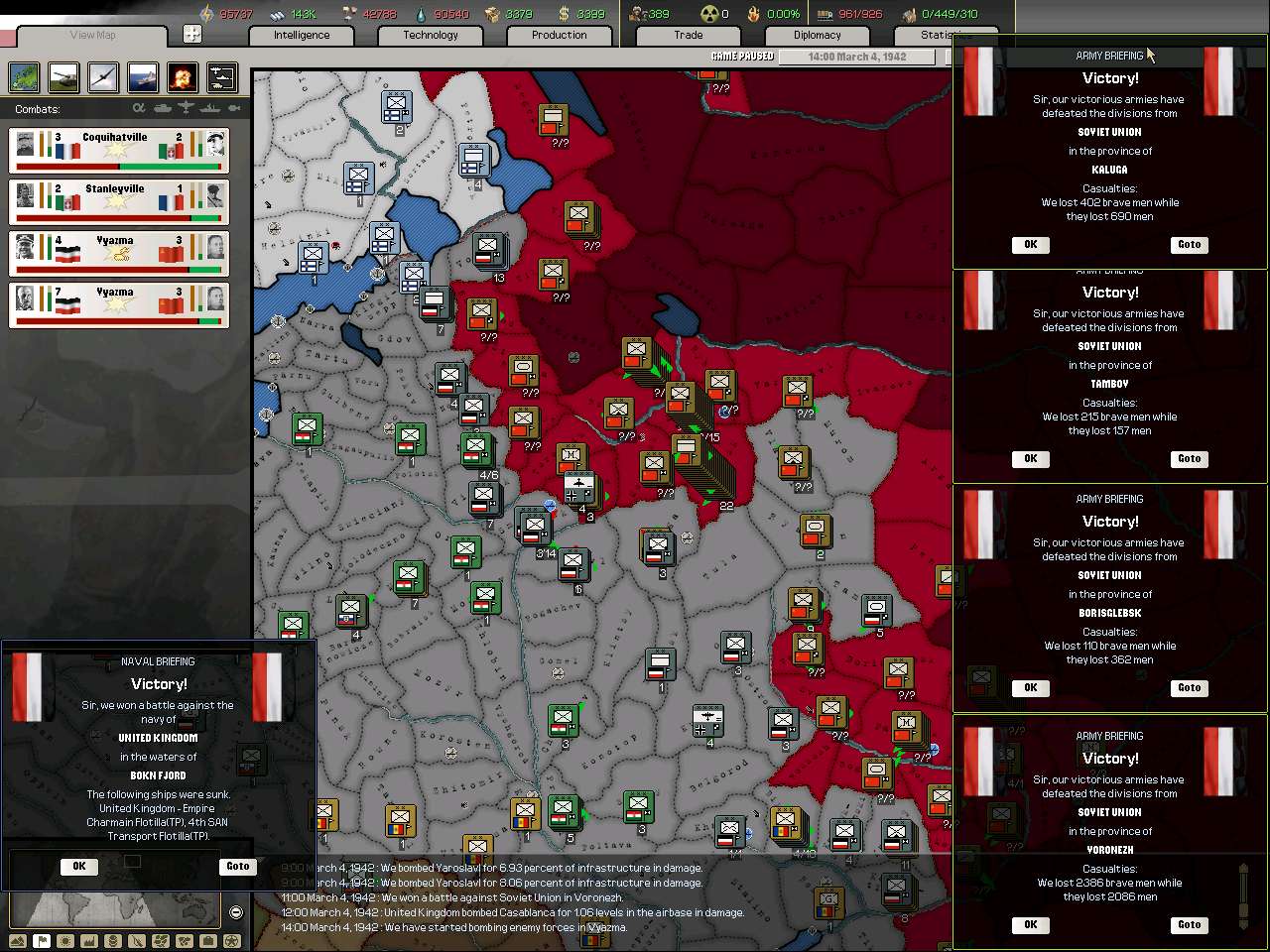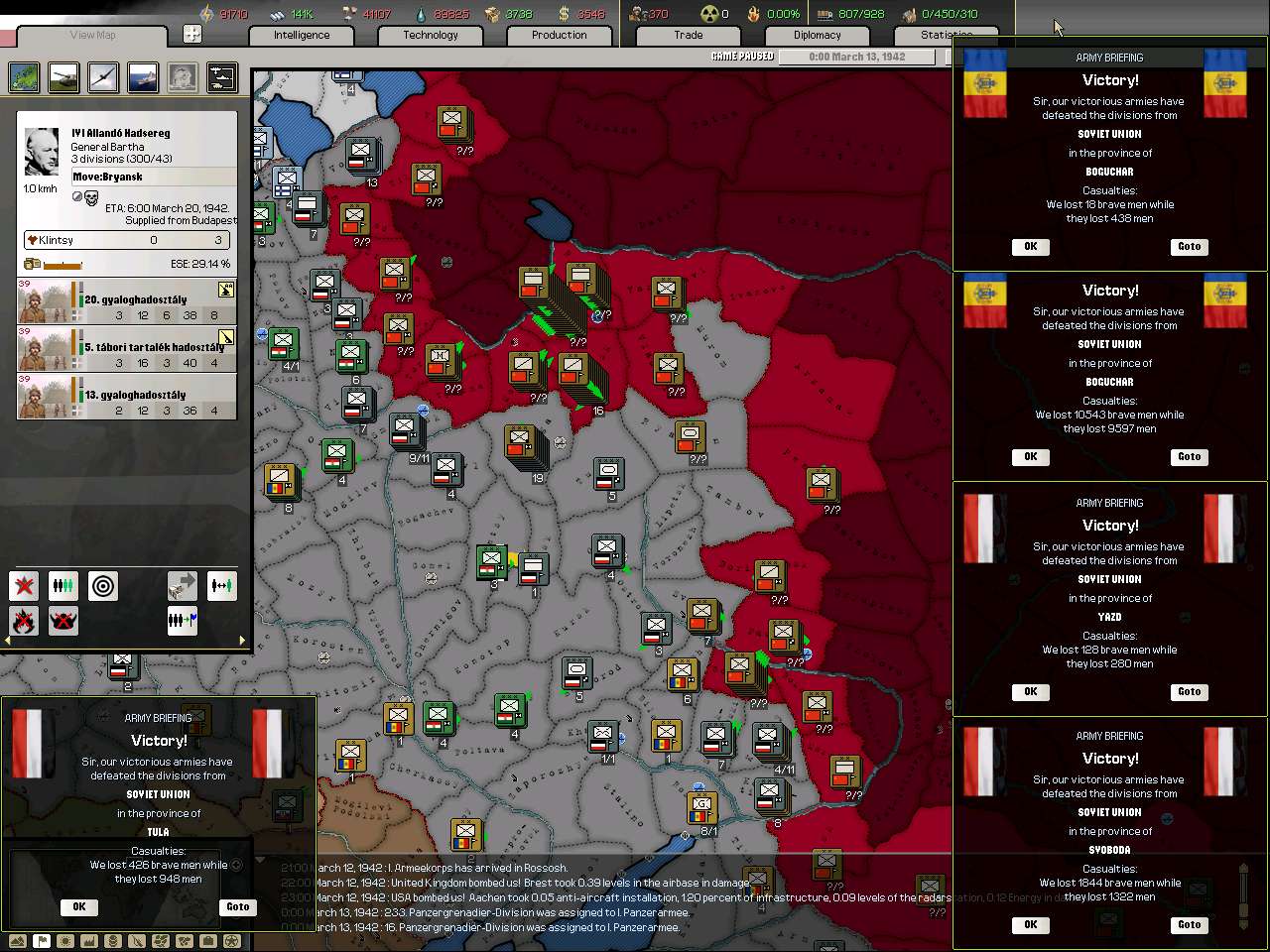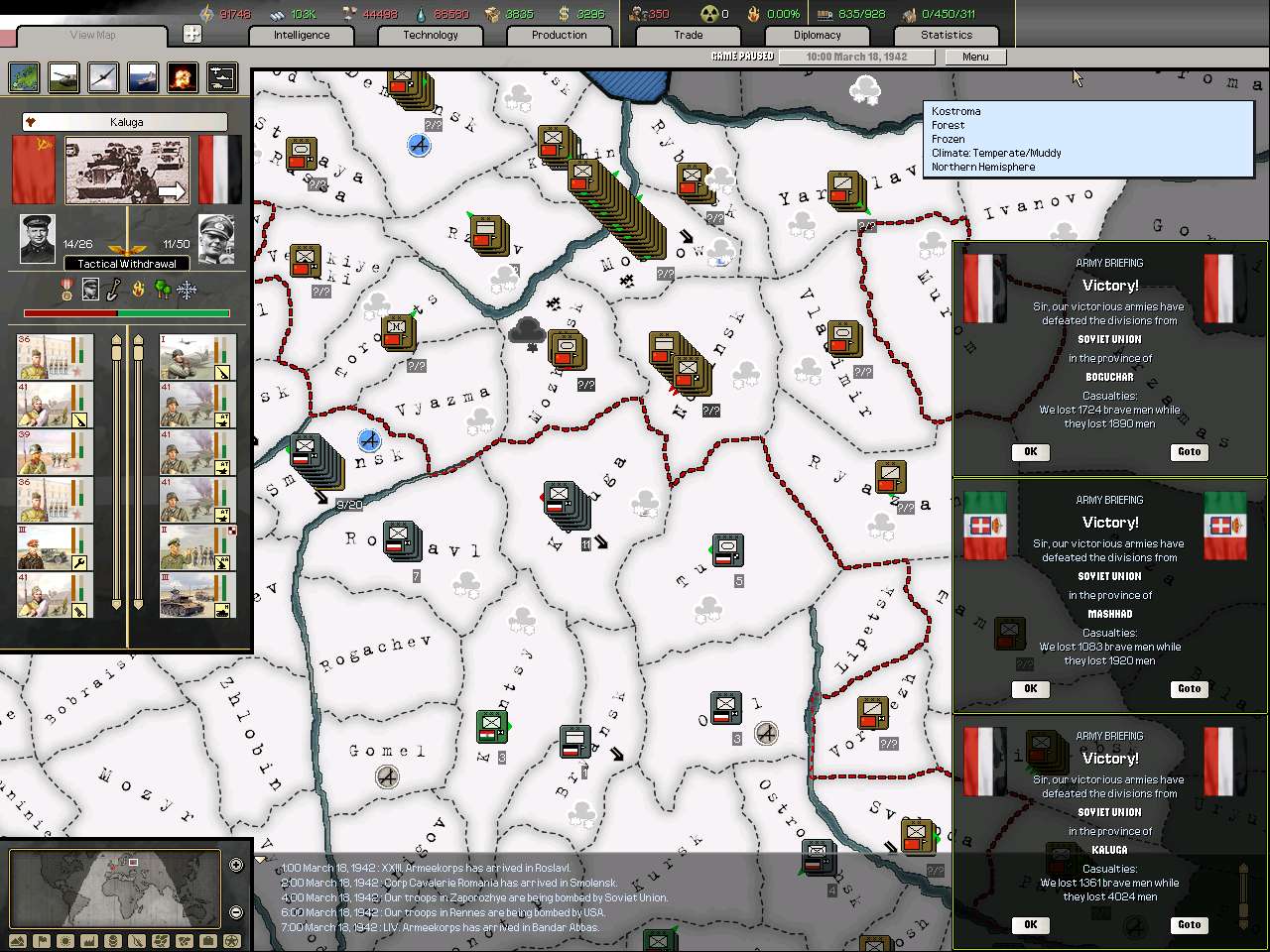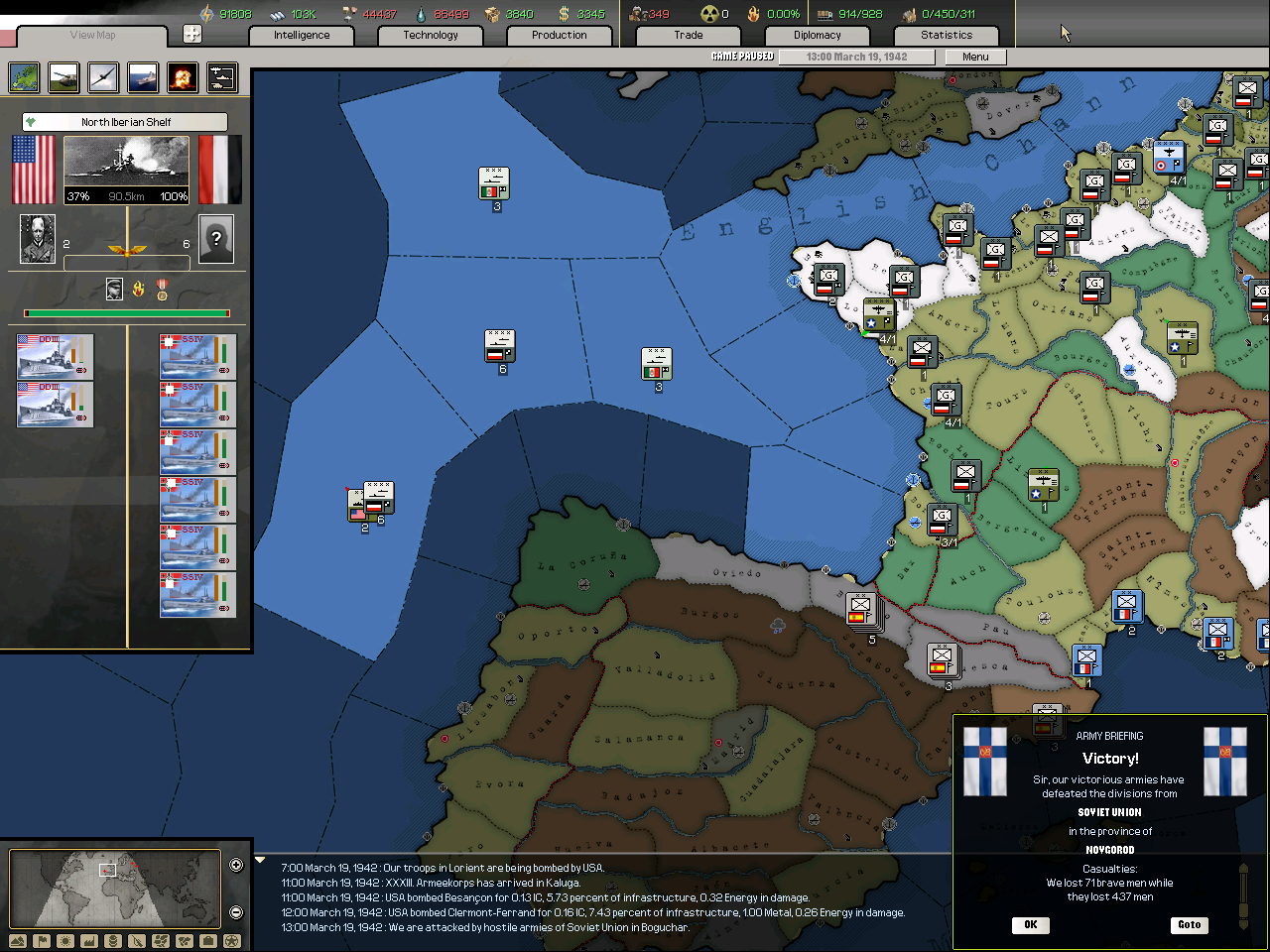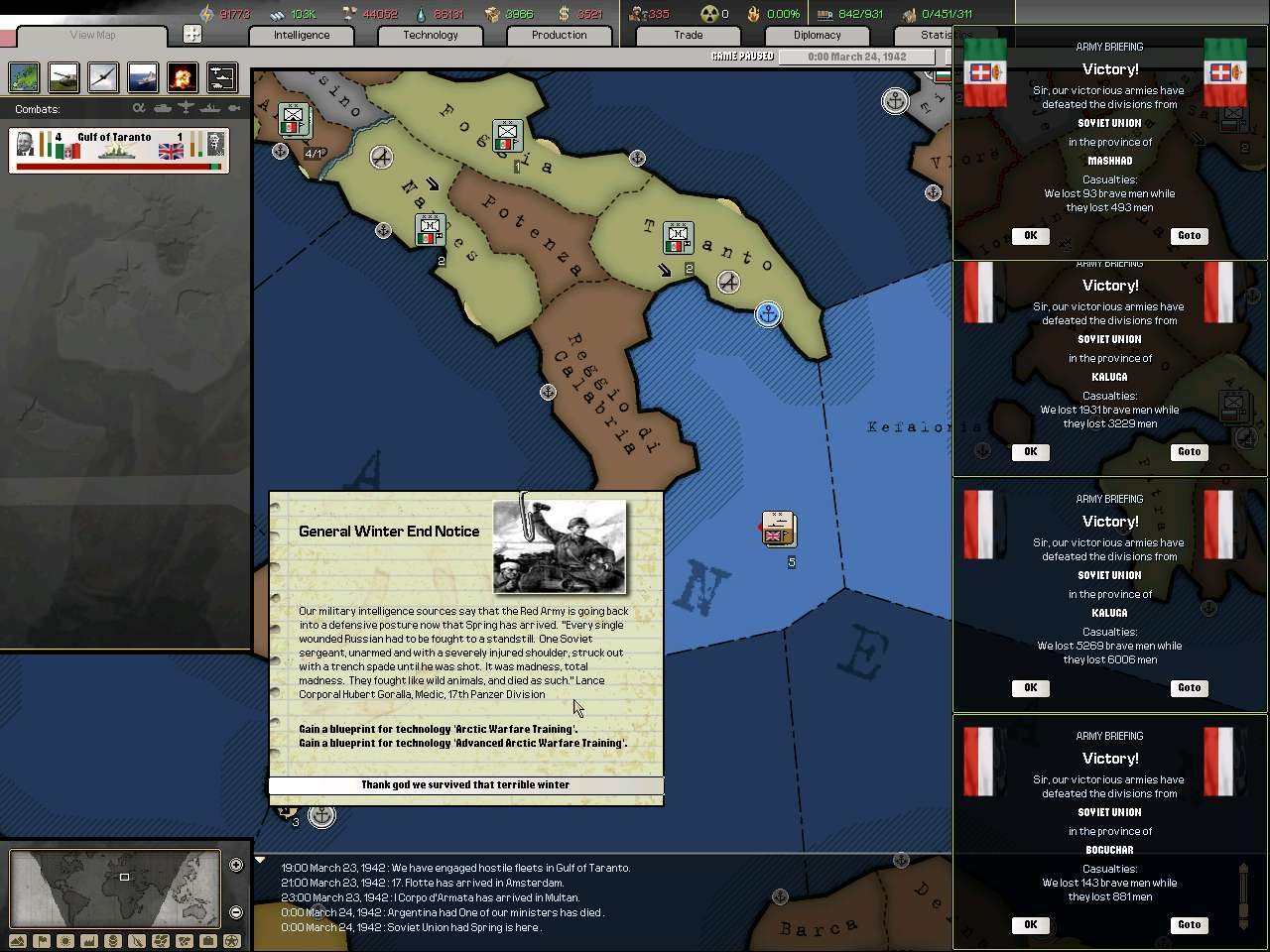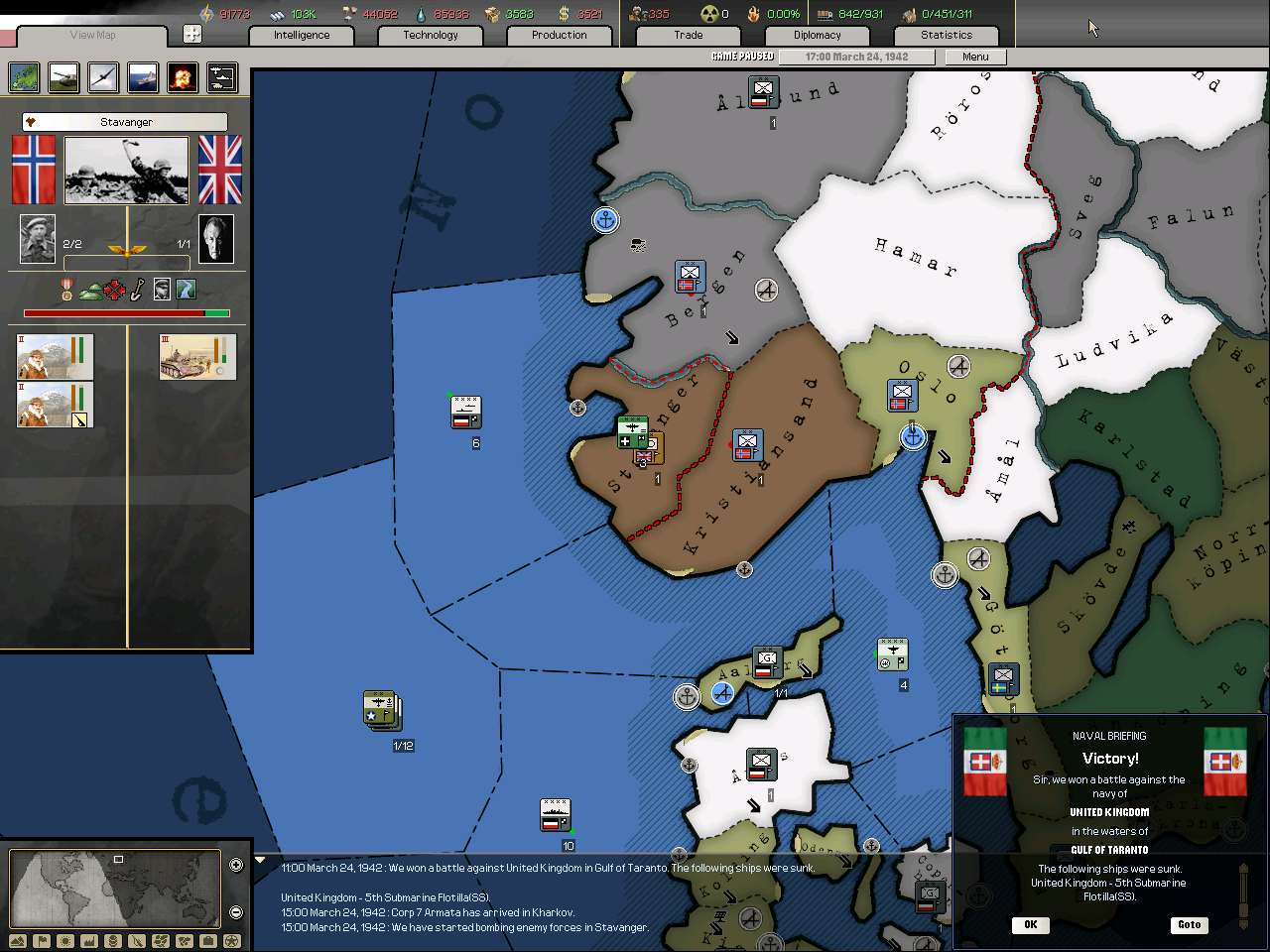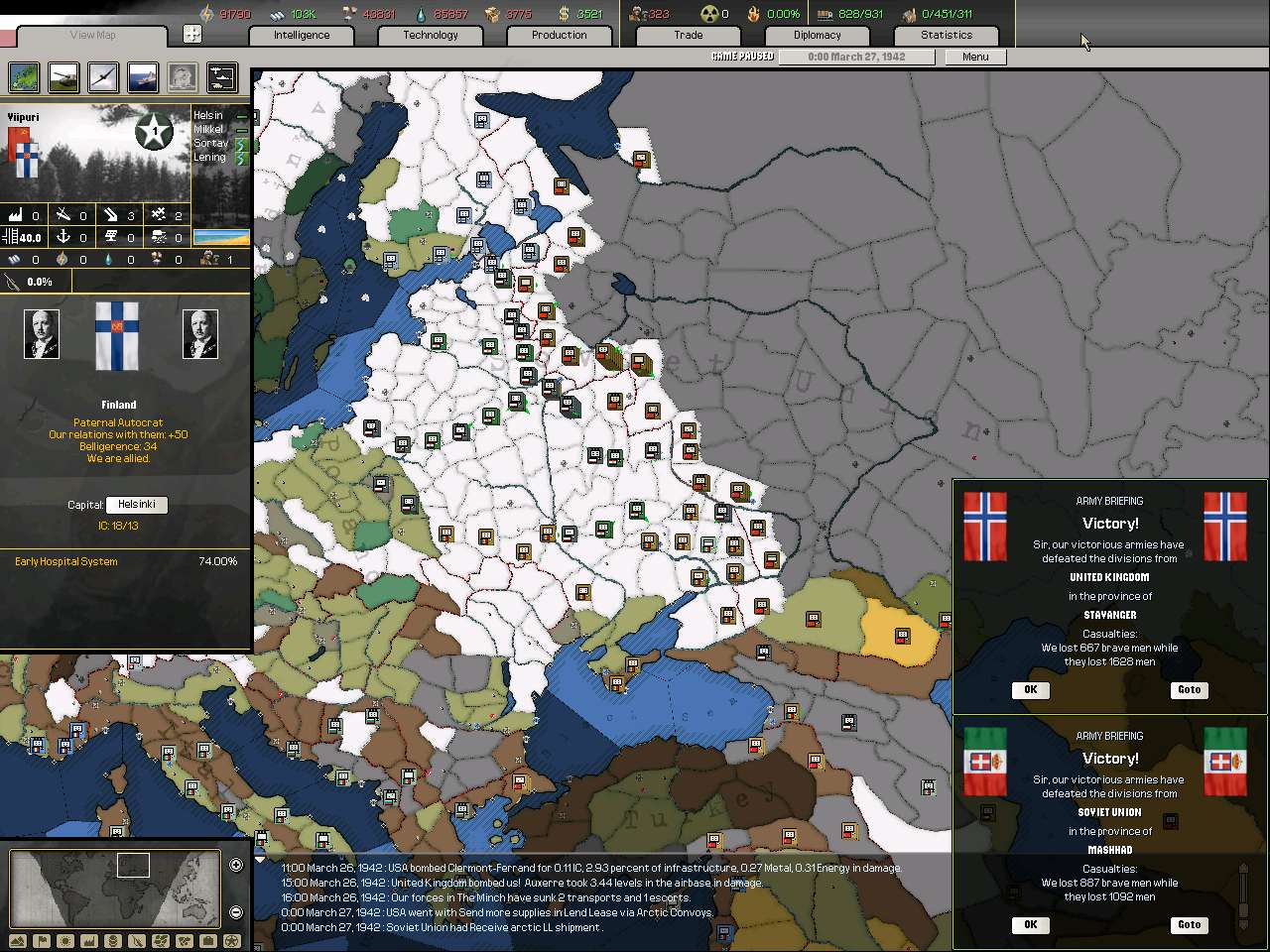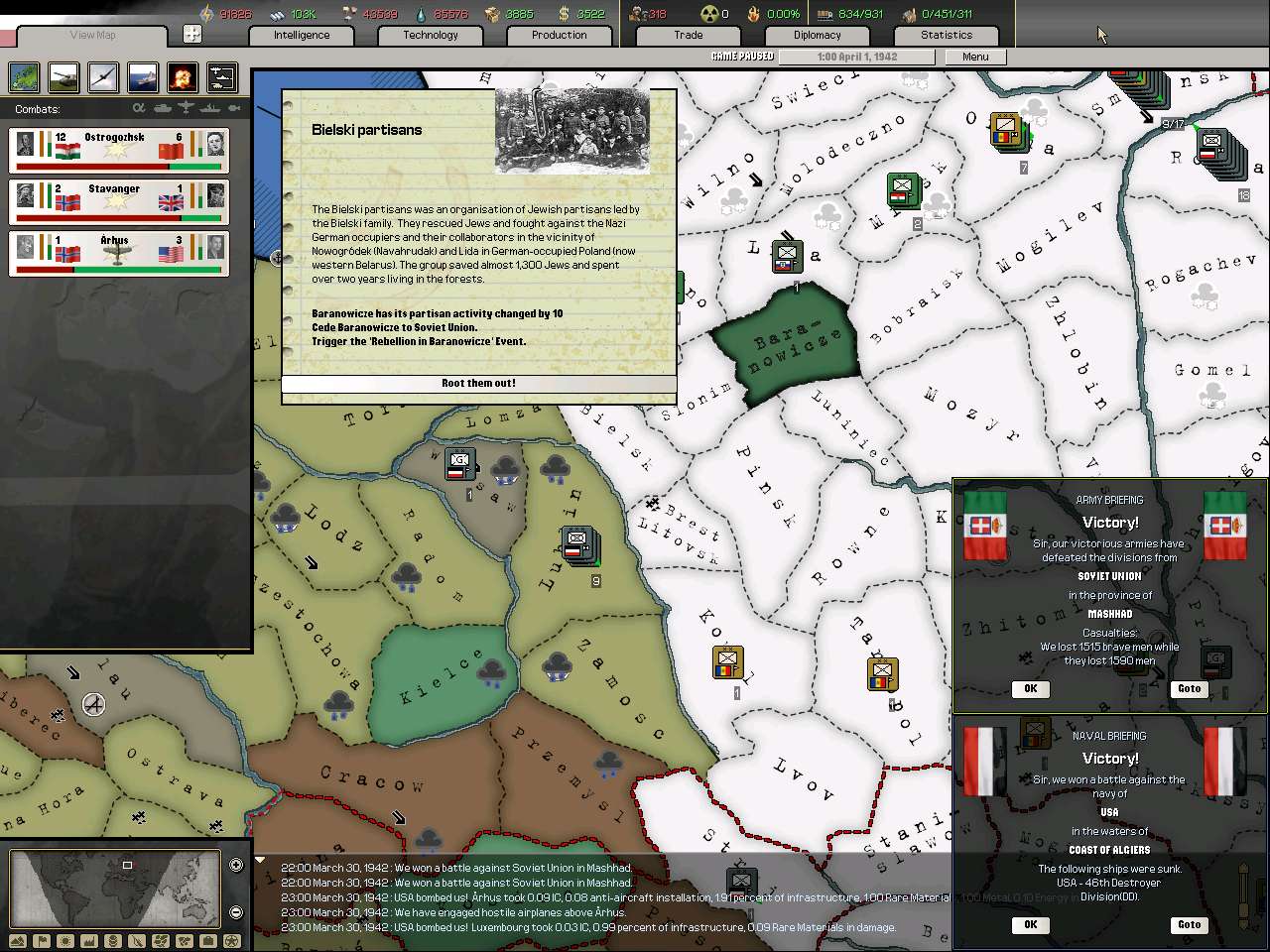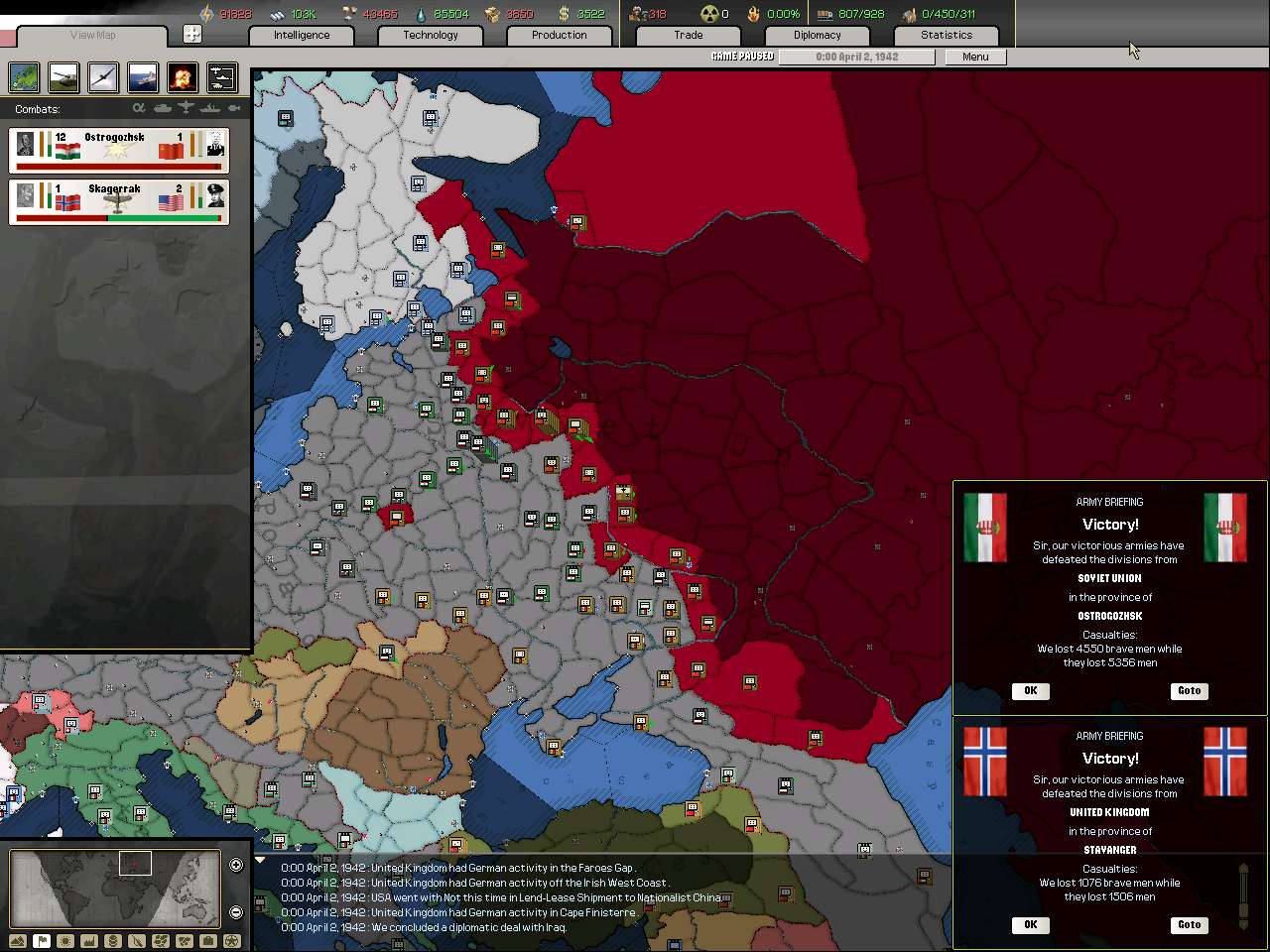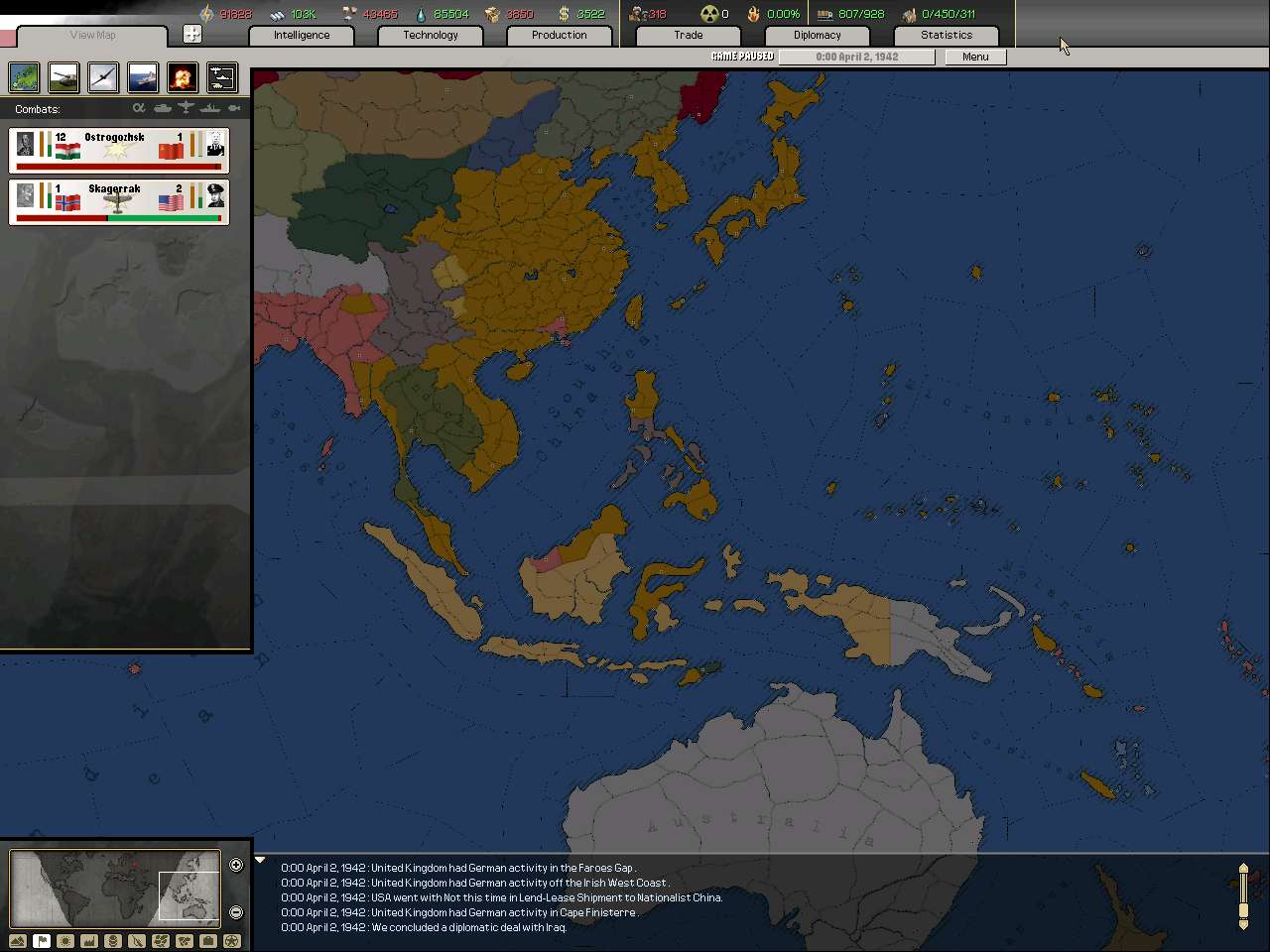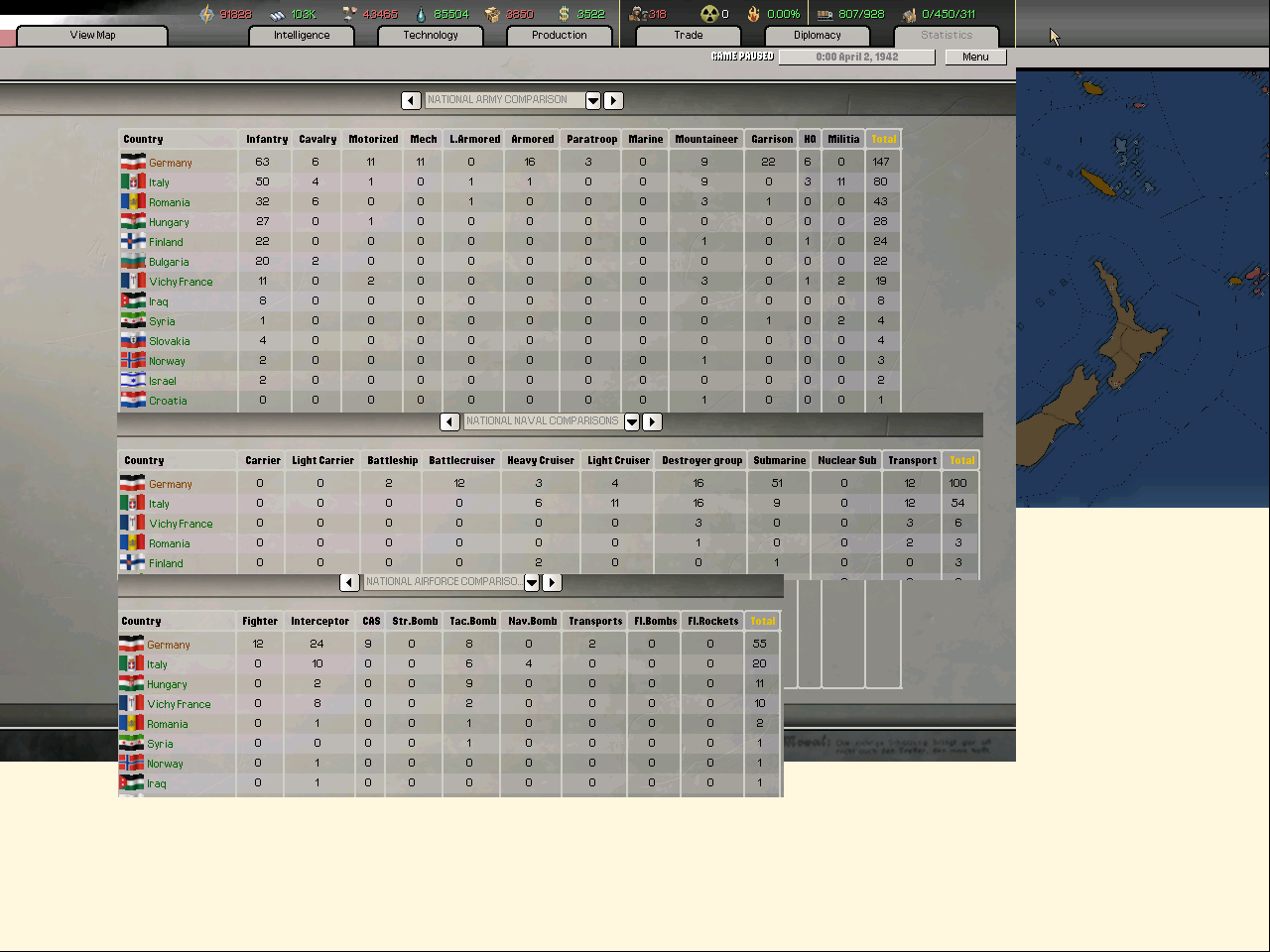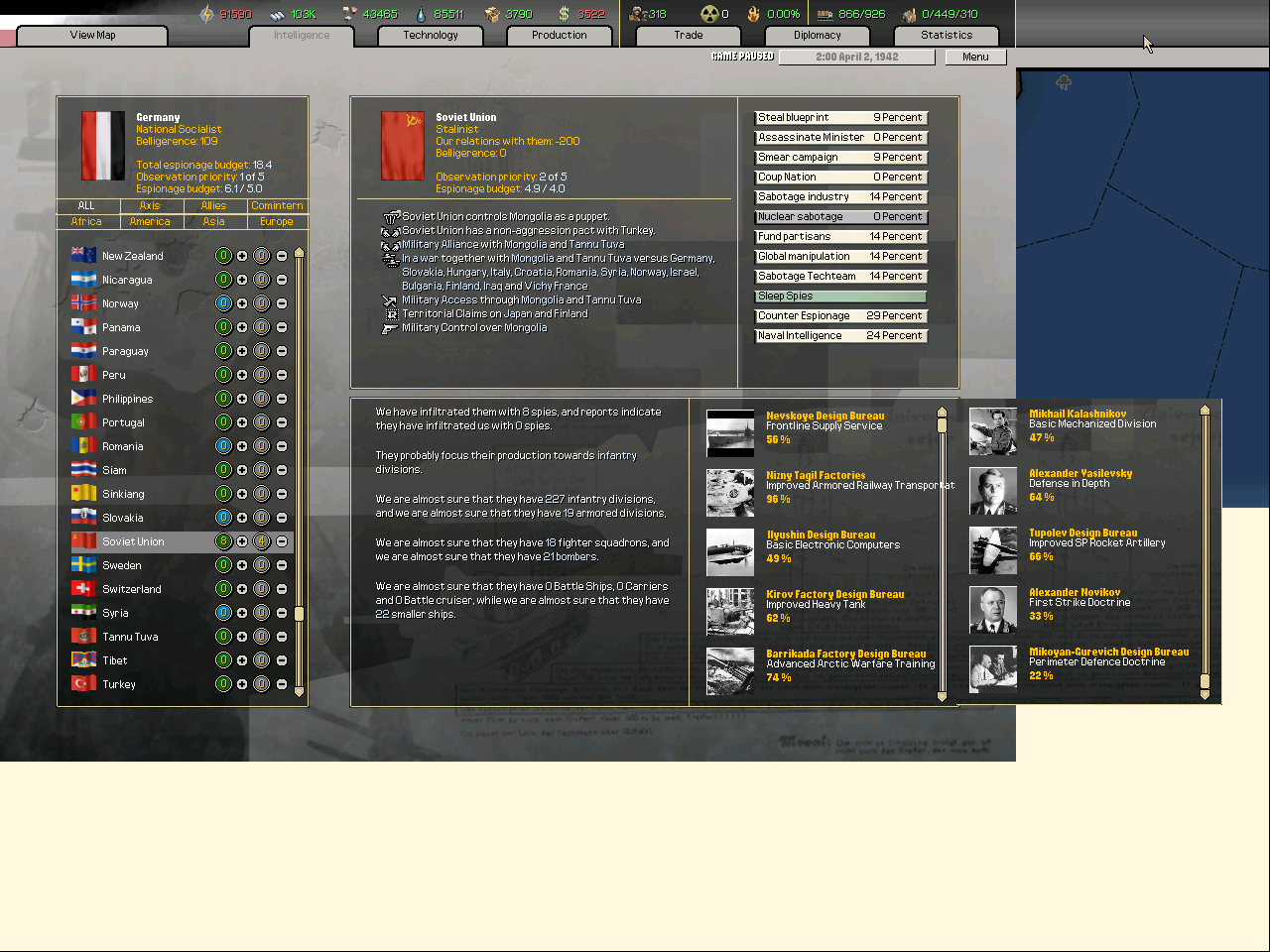Update:
The winter has set in over the Eastern Front.
Chancellery November 1, 1941
A.H.: “I have studied these battlefield reports for some time. The news seems to be all very good and yet I note that our progress in the East has slowed to a crawl. I would like to know why, and what you intend to do to remedy the situation.”
Jodl: “There are several factors involved, mein Fuehrer. The snows have come, the Red Army has been tempered by battle, the ineffective Russian officers are dead or captured, our supply lines are stretched, and our troops have been attacking for over three months almost non-stop.
All of these factors are important, but the overriding delay is that our frontage has increased from the small border we shared in divided Poland to the current front line stretching from Finland to Grozny. We also have three sieges in our rear area at Leningrad, Sevastopol and the Caucuses that require troops to maintain.
Further attacks require that our forces be concentrated in specific areas, rather than on a broad frontage. This is being prepared now. Our mobile forces are being rested and refit with new equipment and when they are back in position we shall be prepared for a renewed offensive.”
A.H.: “I said earlier that our men would be comfortably in Moscow when the winter winds blew.”
Jodl: “And we are still working to that goal, but it will be later in the winter. If we attack now we engage the largest Red Army formations at a severe disadvantage.”
A.H.: “To be honest, I believed, and I heard this also from many of you on the General Staff, that the Soviets would have collapsed by now, like a rotten house of cards. Perhaps the Untermenschen are too stupid to know they are beaten, eh? <laughs>
So then, what is your proposal for our Winter Campaign, to beat these stubborn Russians into submission?”
Jodl: “We start with some disturbing news from our ministers, which must be taken into account.”
Ribbentrop: “The annexation of Persia inflamed the United States and others around the world. I understand that it netted the Fatherland enough oil and gold reserves to fund operations for quite some time.
The Allies, led by England, show no sign of quitting, and as we have already noted, Stalin has taken our rejection of his early peace terms to mean a fight to the death. We will have to completely cripple the Soviet Union before he will come to the table again, I believe.
The most disturbing issue in foreign affairs is that our nominal ally in Japan seems to be leaning towards a military conflict with the Allies and the United States in the Pacific theater. Our spies report large scale mobilizations of ground troops and rebasing of many naval assets that suggest that they are reorienting for warfare outside of the Chinese theater. Now, if they limit their actions to engaging the Allies along with us, this would be a large benefit in bringing England to her knees. However, if their actions draw the United States into the war, this could have serious consequences.”
Oster: “The USA has a large and increasingly sophisticated Navy that will immediately impact all our seaborne operations outside of the Baltic Sea. They have a large and growing Army Air Corps that will no doubt be used against our industry and operations worldwide. Their Army is growing as well and is in most cases more advanced than the Soviet formations that the Wehrmacht savaged the past few months. It will be slow to transport from their homeland, but I would expect American forces to contest for Africa and India early and often.
On the Eastern Front we believe that the Soviets are up to something big. We are seeing layers of deception cloaking their true purpose, but it is clear that their troop density is increasing, and the divisions are provisioning for assaults as opposed to defenses. We believe they have a winter campaign in the offing, though we cannot yet predict a start date.”
Schacht: “Our industries are operating at peak efficiency. All resources are plentiful, though we are gradually using up our Rare Materials stockpile. Please note that our chief supplier of this commodity is the United States, so this will be impacted should they join the wider war.
Our refitting efforts continue. The last infantry division is now equipped as a 1941 model. The only remaining upgrades are the armored and Headquarters divisions, and a handful of artillery and naval brigades. The supply lines in the center and south, to Smolensk and Kharkov, will be entirely restored in November, and the first of the new infrastructure upgrades will complete this month.”
Jodl: “Using the estimates provided by the Abwehr, the Red Army is fielding about 275 divisions. We estimate the following breakdown.
Pacific theater- 30 divisions
Leningrad- 7 divisions
Sevastopol- 7 divisions
Baku pocket- 20 divisions
Finland/Soviet swamplands- 6 divisions
Moscow, Sverdlosk, Archangel, Stalingrad garrisons- 12 divisions
This leaves approximately 193 divisions opposing the Heer on the Eastern Front. Clearly this number needs to be reduced in order to maintain our progress.
For our Winter Campaign, Army Group North will for the most part hold hard, using local spoiling attacks to maintain their positions. The Leningrad defenders will exhaust their supplies in December and we will storm the city some time after this occurs.
Army Group South will focus on reducing the Baku pocket. We currently have 11 mountain divisions and two panzer corps involved in this operation. All of these should be freed up for new operations some time in December. The defenders of Sevastopol will exhaust their supply depot in November and we will storm the city some time after this occurs.
Army Group Center will hold position until von Manstein’s Panzerarmee is refit and back on the line. We hope that the Red Army will launch whatever attack it has planned by this time, so we can defeat it and exhaust their strength. Once this has occurred, we will launch a two pronged attack as seen in Red below, with each force responsible for capturing three provinces to form a new Kessel, in which we hope to eliminate 30-40 Red Army divisions. This maneuver also extends our front lines to the Don River.
Phase Two is seen in Yellow and will be acted on immediately if possible. The frozen conditions will wear down our forces much more rapidly than what we endured in the summer months, so we may have to pause here. At any rate, when ready, Army Group Center will push on and sever the supply lines between Moscow and Stalingrad.
Phase Three is seen in violet and this action will be taken when possible to further isolate Moscow.”
Goring: “The Luftwaffe has in essence defeated the Red Air Force. Our wings are rested and ready to support the Heer’s operations. In mid November we will be shifting both interceptor wings remaining in the East back to the West, to ensure that the R.A.F. and their potential American friends do not have any opportunity to disturb our war production.”
Raeder: “The Kriegsmarine is being reorganized in November into larger wolfpacks and surface groups, in light of the potential American intervention. The Royal Navy remains generally in their berths, undergoing repairs.
The Battle of the Atlantic will continue, but with KM forces more concentrated to support one another, as seen back in 1939. Gentlemen, as you can see we have expended every effort to interdict England’s commerce, yet their convoy vessels are still plentiful and we have seen no lack of raw materials or military supply efforts whatsoever. In retrospect, I wonder if our own success in the annexation of many of England’s allies and trading partners actually reduced their convoy traffic to the point that we did not have enough targets for our flotillas to engage.”
The Chiefs of Staff ponder this last remark silently, until Hitler abruptly jumps to his feet. “Very well. It was my plan to take Leningrad and Baku before Moscow, and this is being done. Our troops will be highly motivated now to gain entry to the warm buildings in the Soviet capital. Carry on!”


